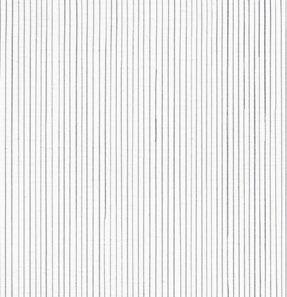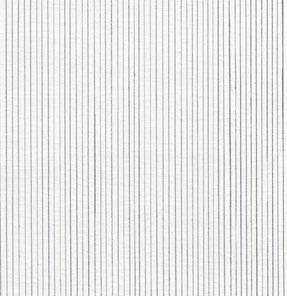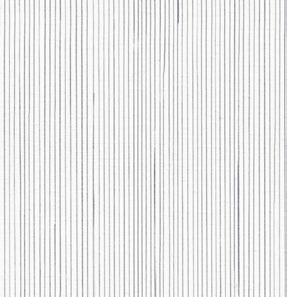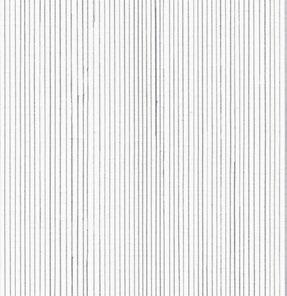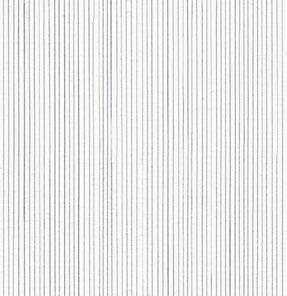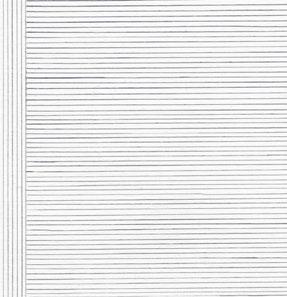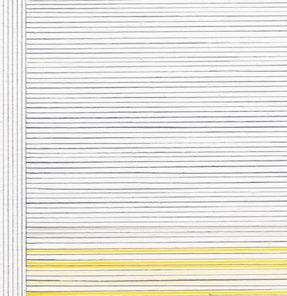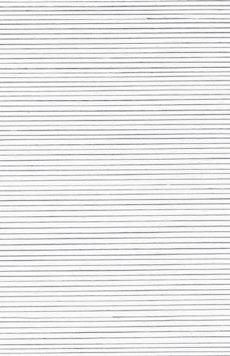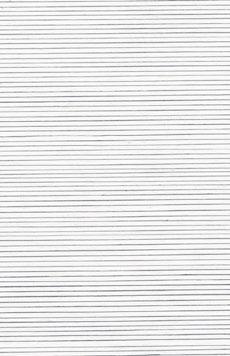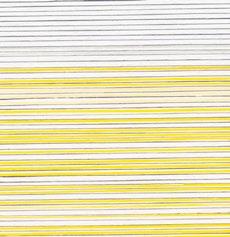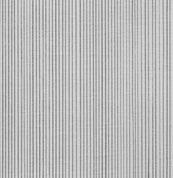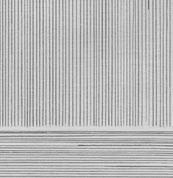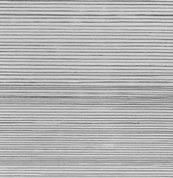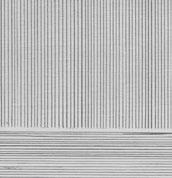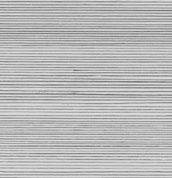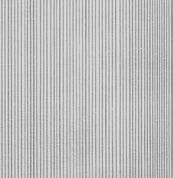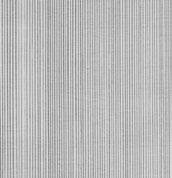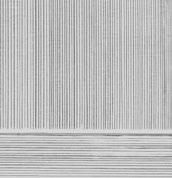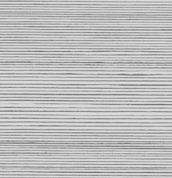









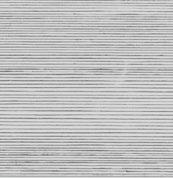
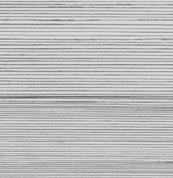






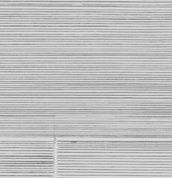


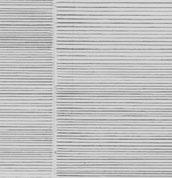

















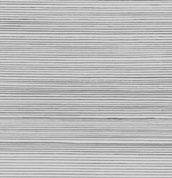

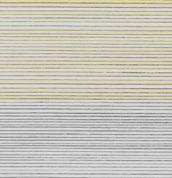


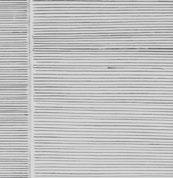
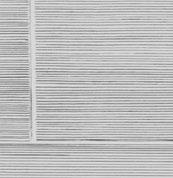

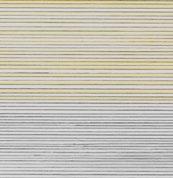




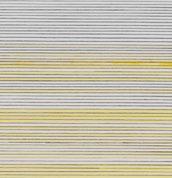
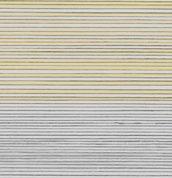
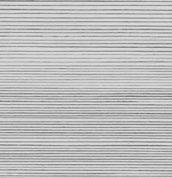









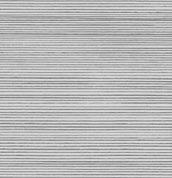





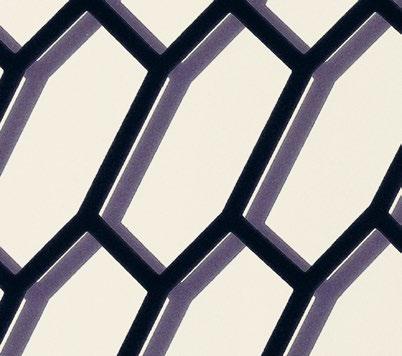





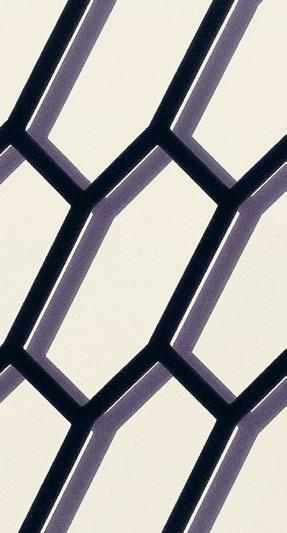

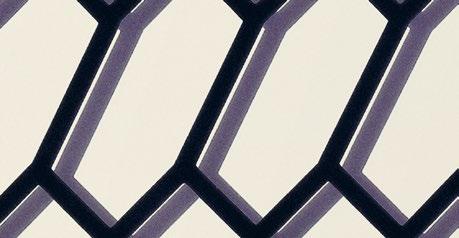

















































































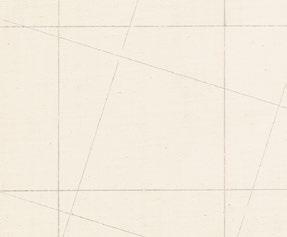
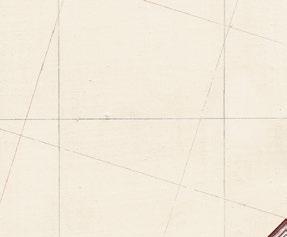
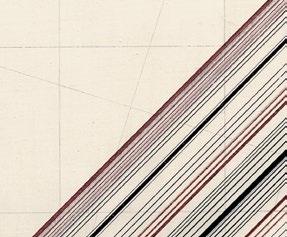


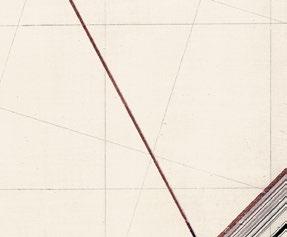


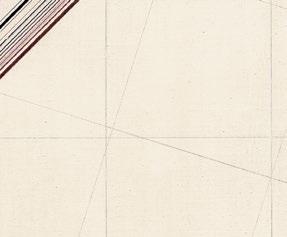











Soledad Sevilla: Rhythms, Grids, Variables is the title of the exhibition the Museo Nacional Centro de Arte Reina Sofía has dedicated to Soledad Sevilla (Valencia, 1944), the winner of the 2020 Velázquez Prize for the Plastic Arts and one of the most firmly established creative voices in contemporary Spain.
The retrospective draws us into an oeuvre that spans six decades, highlighting the connections between her different phases as an artist.
A poetic element has consistently played a key role in the work of Soledad Sevilla. Hers is a poetics of subtlety, shot through with the work of other artists, ranging from great masters of baroque painting like Velázquez and Rubens to twentieth-century artists like Mark Rothko, Agnes Martin, or her friend Eusebio Sempere. This comprehensive review of Sevilla’s creative journey invites us to plunge into the most audacious and experimental facets of an oeuvre that employs abstraction to give visual form to a unique conception of everyday reality.
Geometry and the repetition of visual patterns form the foundation of an artistic language increasingly centered on the use of reticular
grids and the search for a certain vibratory effect. Sevilla’s residence in Boston in the early 1980s marked a watershed in her career. It was then she designed her first installation projects, which foreshadow the emotional dimension of her later work.
In her most recent work, an architectural sensitivity is combined with a beautiful approach to nature and a reflection on time that leads into minutely precise and hypnotic series, shown to the public for the first time in this retrospective.
The exhibition is complemented by this catalogue, with essays by Paula Barreiro, Yolanda Romero, Antonio Cayuelas, and Isabel Tejeda, the show’s curator, that explore different aspects of the artist and her work. We also extend our gratitude for these valuable contributions to the team at the Museo Reina Sofía in collaboration with that of the Comunidad de Madrid, for enabling such a complete, rigorous survey of the magnificent oeuvre of Soledad Sevilla.
Ernest Urtasun Domènech Minister of Culture
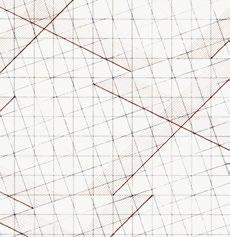





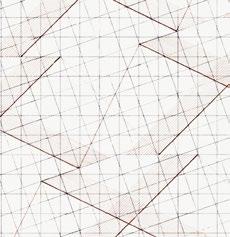


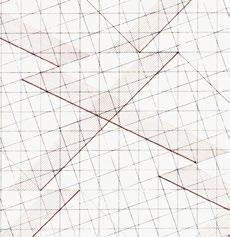



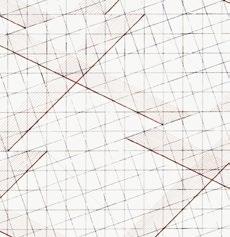


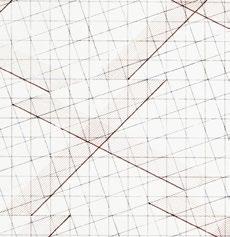
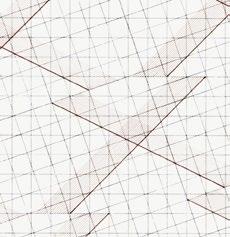

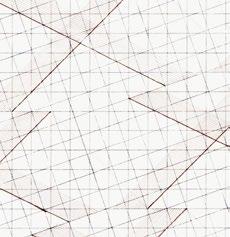


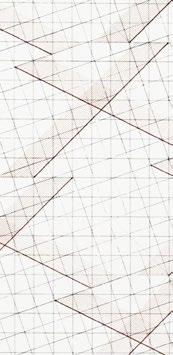



Soledad Sevilla: Rhythms, Grids, Variables , the exhibition devoted to the artist Soledad Sevilla, brings us closer to the universe of one of the most interesting figures in the history of recent art. We are speaking of one of the leading representatives of geometric abstraction in Spain and one of the most internationally reputed Spanish artists. From geometry to light, her work, always highly personal, seeks poetry in a beauty that has conceptual roots.
Curated by Isabel Tejeda, the show surveys Sevilla’s artistic universe from the 1960s onward, with works linked to the Universidad de Madrid’s celebrated Centro de Cálculo (Computing Center), to her most recent production, where she pays tribute to her friend and fellow artist Eusebio Sempere.
The 1960s saw essential changes brought about by, among other things, new technologies. To process those changes, centers devoted to investigating the dialogue between technology, art, and science took on great importance. In Spain, it was in this context
that the Universidad de Madrid’s Centro de Cálculo was founded. In Soledad Sevilla’s case, it proved fundamental. Thanks to the use of the computer, she fashioned the voice that would henceforth accompany her. Not content with this, she took this voice to the United States in a process of spatial and aesthetic investigation that continues today.
This exhibition reflects the interest of the Comunidad de Madrid in disseminating and celebrating the work of great contemporary artists.
We wish to thank the artist for her investigative work, her tireless labor, and her unflagging commitment to painting, and also the Museo Nacional Centro de Arte Reina Sofía for its dedicated, rigorous efforts to ensure visibility for the most suggestive and personal artists of our time.
Isabel Díaz Ayuso President of the Comunidad de Madrid

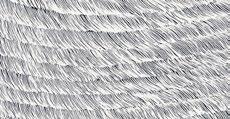




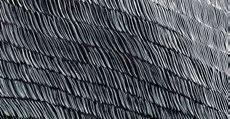
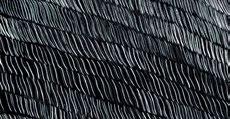




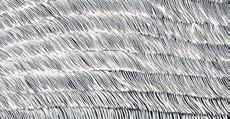
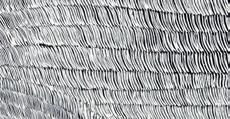

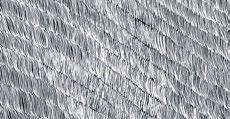
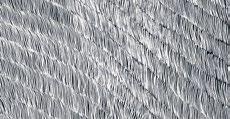


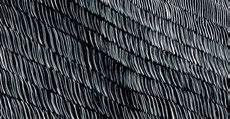









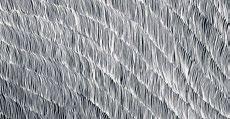


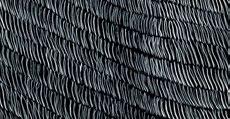

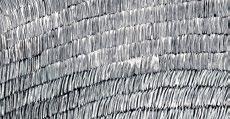
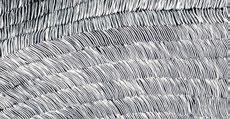
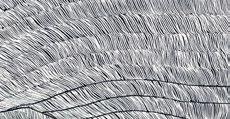









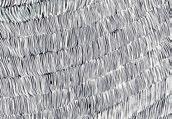








The exhibition Soledad Sevilla: Rhythms, Grids, Variables presents a chronological survey of the career of Soledad Sevilla, a prolific and heterodox artist whose work is sustained by a concept of art uniting judgment and emotion, reason and sensibility. The show highlights how Sevilla’s work, which springs from a lyrical understanding of formal experimentation, is deeply concerned with beauty and intuition, and how it vindicates the ability of aesthetic creation to confront us with “liminality and the inapprehensible,” to shake us and transport us to a “threshold” where time remains suspended for an instant and our relationship with reality is transformed. Through a selection of over a hundred works, the exhibition shows the coherence and circularity of the artist’s evolution, something she herself points to when she states she has been painting the same picture all her life. This assertion requires qualifi cation, as the curator of the exhibition, Isabel Tejeda, points out, since her work should be viewed as a continual toing and fro-ing, a tireless refl ection on the same questions in a “Heraclitean” sense, that is, as if returning to a permanently fl owing river. This idea is explored in Yolanda Romero’s essay, which suggests that Sevilla’s career can be read as a “vast universe governed by the principle of change, where one event already includes the beginning of the next” in a constant mutation that has allowed her to “transit freely from the geometric to the expressive, from the permanent to the ephemeral, from light to darkness, and from reason to emotion,” remaining on the margins of dominant, sometimes stagnant, trends.
Soledad Sevilla began her career in the mid-1960s, a time when the Spanish art scene was opening up to geometry. As Paula Barreiro explains in her essay, the artist then started to define her artistic language, concentrating on “rational experimentation with form by means of geometric abstraction.” Her involvement with the Universidad de Madrid’s Centro de Cálculo (Computing Center) allowed her to pursue research on the principles of combinatorics, seriality, and the module, fundamental for her later work.
Although she always kept up ties with the heterogeneous group of geometric artists, Sevilla soon set aside the use of the computer as an artistic tool because it did not allow her to develop the type of investigation of geometry that interested her. From the end of the 1970s, this investigation led her, in Barreiro’s words, to the “breaking of the bounds of the plane by the line and its interaction with space.” In this respect, her residency in Boston between 1980 and 1982 proved a crucial experience, as it was there that she conceived her first projects that hinged on spatial intervention and contained performative connotations. Those projects anticipated her later incursion into the installation format, such as MIT Line and, especially, Seven Days of Solitude, where she first introduced the processual, memory, and the cultural specificity of place to her work.
In Boston, she also produced pictorial series such as Keiko and Belmont, in which she imbued her pictures with an atmospheric and vibratory quality that was to be one of the principal hallmarks of her mature work. They are the direct precedent of two of her most emblematic projects of the mid-1980s: Meninas, in which
she focuses her investigation on how space is configured through an immaterial element like light, and Alhambras, articulated, as the artist herself explains, around three themes born of her “contemplating the world of the Alhambra: the magic of portals, the magic of reflections, and the magic of shadows.”
These two series put the seal on the growing importance that Sevilla had started to attach in her work to poetics and the installation. Indeed, this exhibition includes a re-creation of El tiempo vuela (Time Flies), in which a thousand paper butterflies revolve unceasingly in a suggestive metaphor for the inexorable passage of time and the fleetingness of life, and Donde estaba la línea (Where the Line Was), conceived by the artist specifically for this show. In it Sevilla carries out an intervention in the Museum’s Sabatini Building with cotton threads, a material she has used in earlier installations like Fons et Origo and Toda la torre (All the Tower), whose choice, as Isabel Tejeda emphasizes, is informed by an “underlying gender reading.”
Soledad Sevilla’s installations have sometimes constituted the starting point for a new pictorial cycle, as is the case of En ruinas (In Ruins), which originated in Mayo 1904–1922, produced at the Vélez Blanco Castle, in Almería. This fully abstract series reflects the influence of Mark Rothko on her oeuvre and anticipates the interest in landscape and nature that was to mark her work from the late 1990s onward. Such interest also surfaces in works like Apamea and Insomnios (Insomnias), as well as in more recent
projects such as the sculptures Arquitecturas agrícolas (Agricultural Architectures) or the series Nuevas lejanías (New Distances) and Luces de invierno (Winter Lights), where she paints the diffuse landscapes seen through the transparent plastic sheeting of the tobacco drying sheds on the fertile plains of Granada.
Along this path of to-ing and fro-ing, Soledad Sevilla’s current production reviews some of the artistic concerns of the beginning of her career. This process of revisiting has led to a reencounter with Eusebio Sempere, an artist she has always greatly admired and with whom she maintained a close friendship ever since first meeting him in 1967. She pays homage to Sempere in this exhibition with a small gouache by the artist belonging to her personal collection, which has given rise to her most recent series, Horizontes (Horizons), Horizontes blancos (White Horizons), and Esperando a Sempere (Waiting for Sempere), revealed to the public for the first time in this exhibition.
The exhaustive survey of Soledad Sevilla’s career offered by this retrospective shows how the artist has constructed a hybrid oeuvre punctuated by continuous transformations but at the same time characterized by an unequivocal internal unity. The exhibition furthermore demonstrates that in her quest to generate “an experience of the liminal” and incorporate a poetic drive in her practice without renouncing experimental rigor, Sevilla has traced a path of her own, making her a fundamental figure in the Spanish artistic landscape of recent decades.
Manuel Segade Director of the Museo Nacional Centro de Arte Reina Sofía
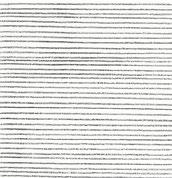





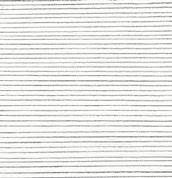

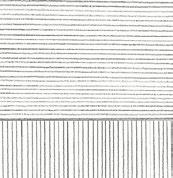


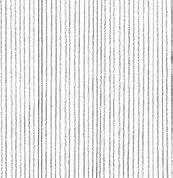






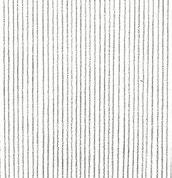






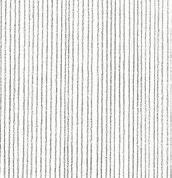

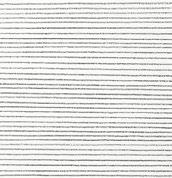




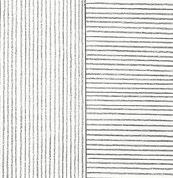
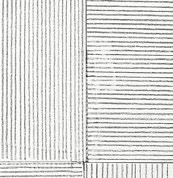

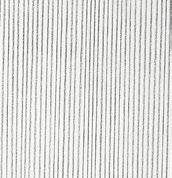


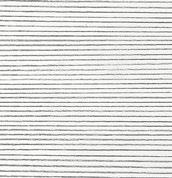











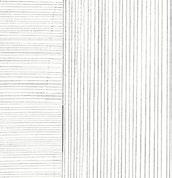
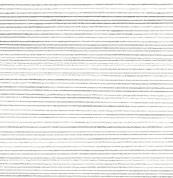








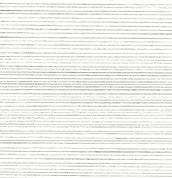

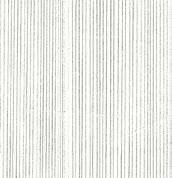


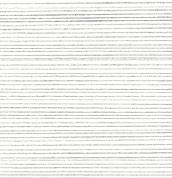



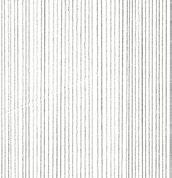

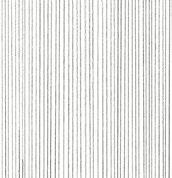

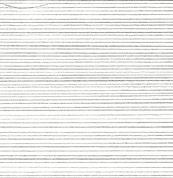






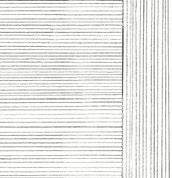










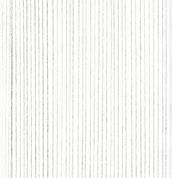



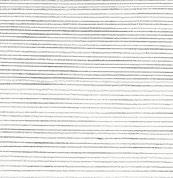



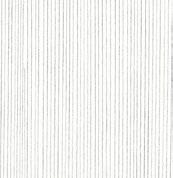













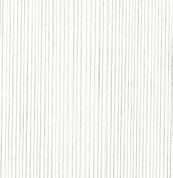







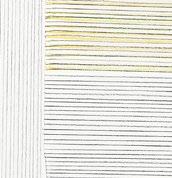





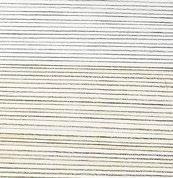








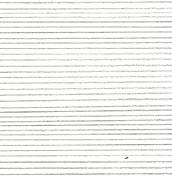

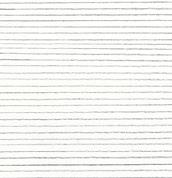





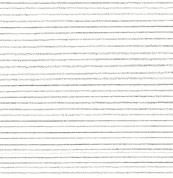






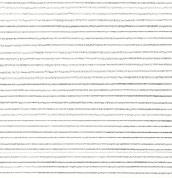





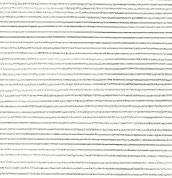





















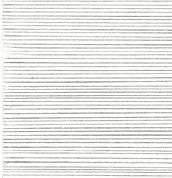



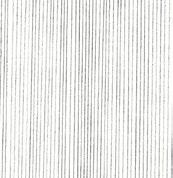






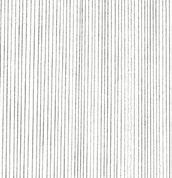




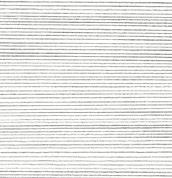

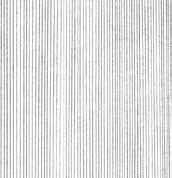




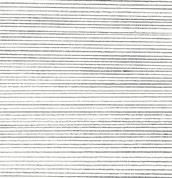
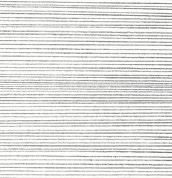


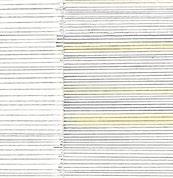


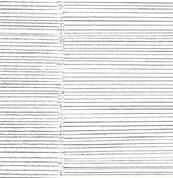
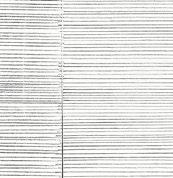

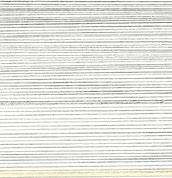


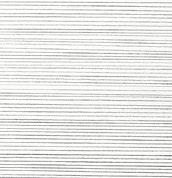

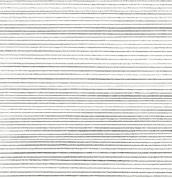


Invading and Extending to Infinity: Soledad Sevilla and the Other Side of the Line
Paula Barreiro López
A Book without Words
Yolanda Romero Gómez
A Conversation with Soledad Sevilla Kevin Power
Mediating between Emotion and Judgment: Soledad Sevilla
Isabel Tejeda Martín 118
Threads of Light: A Studio for Soledad Sevilla
Antonio Cayuelas Porras
List of Works
The direct message has never interested me. I want a little more subtlety, arriving at things in a different way. 1
—Soledad Sevilla
After nearly a decade of informalist existential introspection, the 1960s unveiled a new interest in geometry in Spain. Scientific processes, industrial materials, and the study of the phenomena of perception fostered and were associated with a break with the traditional models of artistic reception through the activation of the viewer. While realism and new figuration continued their ascent, a new generation of artists explored the intersections between geometric abstraction, visual perception, and mathematics. This path was aligned with the international revaluation and recognition that was being won by optical-kinetic abstraction through exhibitions like The Responsive Eye at the Museum of Modern Art (MoMA) in New York (1965), distinctions like the awarding of the grand prizes to Victor Vasarely at the São Paulo Biennial (1965) and to Julio Le Parc at the Venice Biennale (1966), and the creation of new sites dedicated to the interconnections between art, science, and cybernetics, such as the Center for Advanced Visual Studies (CAVS) at the Massachusetts Institute of Technology (MIT) in 1967.
It was at that point that the Valencian Soledad Sevilla finished her art studies at the Sant Jordi Academy of Fine Arts in Barcelona (1964) and moved to Madrid. She rapidly concentrated on rational experimentation with form by means of geometric abstraction. In the late 1960s, Sevilla defined a project of analysis and introspection in which the line became a fundamental element of her work.
2 For an overview of the geometric abstraction movement in Spain in the second half of the 1960s and its precursors, see Paula Barreiro López, La abstracción geométrica en España (Madrid: CSIC, 2009).
3 Soledad Sevilla, untitled, in Sempere. Soledad Sevilla. Líneas paralelas, exh. cat. (Madrid: Fernández-Braso Galería de Arte, 2019), 24.
4 Sevilla, interview.
5
Esteban García Bravo and Jorge A. García, “Yturralde: Impossible Figure Generator,” Leonardo 48, no. 4 (2015): 368.
6 See Enrique Castaños Alés, Los orígenes del arte cibernético en España. El Seminario de Generación Automática de Formas Plásticas (Alicante: Biblioteca Virtual Miguel de Cervantes, 2000), 187–90.
The presence of Soledad Sevilla in Madrid in the mid-1960s, a consequence of her marriage to the architect José Miguel de Prada Poole, allowed her gradually to join an artistic scene that was opening up once more to geometry. Exhibitions like Op Art at the Galería Edurne (1966), the Salones de corrientes constructivas (Salons of Constructive Trends, 1966), and Arte objetivo (Objective Art, 1967) revealed the existence of a new interest spurred on by the work of young artists like José María Yturralde, Elena Asins, Julián Gil, Lugán, and Julio Plaza.2 Sevilla shared projects and exhibitions with them while facing the difficulties of combining an artistic career with raising her two children in a clearly patriarchal context.
It was between 1968 and 1969, while she was holding her first solo exhibitions at the Galería Trilce in Barcelona and the Galería Juana Aizpuru in Seville, that she started to collaborate with some of the networked movements that were seeking to integrate scientific processes into artistic practices, such as Antes del Arte in Valencia and the Seminario de Generación Automática de Formas Plásticas (Seminar for the Automatic Generation of Plastic Forms, SGAFP) at the Centro de Cálculo (Computing Center) of the Universidad de Madrid. Feeling that in Spain there was a lack of “a body of thought, an intellectual corpus” for artists, she found that the Seminar situated her in an inspiring context of comradeship and reflection. 3 “Mentally,”
Sevilla explains, “I fitted in very well with a type of discourse that interested me more than another—which didn’t interest me at that stage—of copying nude ladies and doing landscapes.” 4 Moreover, this experience allowed her to join a network of established figures, like Eusebio Sempere, and young artists, like Jordi Teixidor, José Luis Alexanco, Manolo Quejido, and the aforementioned Yturralde and Asins.
One of the principal objectives of the Seminar at the Centro de Cálculo was to use the computer to assist in the production of artworks. Thanks to an IBM computer, algorithms were created to generate works that were printed on a continuous roll of paper. 5 Nevertheless, the translation of the work into binary code in fact went beyond the use of the computer itself and laid the scientific foundations for the creation of artworks based on geometric structuralist orders, the binary use of color, and the superimposition of modular forms, as Soledad Sevilla’s work demonstrates. Her artistic production, based on the principles of combinatorial analysis, was directly related to her participation in the SGAFP, and she viewed her works as fully-fledged objects of research. 6
The module was one of the possibilities most frequently explored by the artists in the Seminar owing to its ease of systematization and computerization. The artist would establish a set of rules that would govern the creation of form in the work. Sevilla started with a single module that she rotated and upon which she superimposed others, creating axes of symmetry. Unlike one of her colleagues,
7 José Miguel de Prada and Soledad Sevilla, “Texto para el catálogo Generación automática de formas plásticas” (1970), reproduced in Carmen González de Castro, Yolanda Romero, and Soledad Sevilla, Soledad Sevilla. Transcurso de una obra, exh. cat. (Granada: Instituto de América de Santa Fe, 2008), 125.
9
Sevilla, interview.
10 See Naomi Oreskes and John Krige, Science and Technology in the Global Cold War (Cambridge, MA: MIT Press, 2014).
Manuel Barbadillo, who combined and ordered the modules by placing one after the other, Sevilla mounted and superimposed them, exploring the configuration of a “static rhythm.”7 Nevertheless, her careful use of color and, above all, of industrial materials accentuated the vibratory possibilities. Made of methacrylate, the module rotated and the geometrical repetition of the form, with its transparency and superimposition, generated new tones and soft luminous and visual effects [pp. 28, 29].
This investigation allowed her to develop a project in a dialogue with her geometric colleagues and brought her visibility as an artist in a difficult context, for besides the sluggishness of the art market at that time, she was prevented from advancing at the same pace as her companions by the fact she was a woman, the demands of bringing up her children, and the patriarchal context of late Francoism: “Not only did I not yet have a gallery,” she explained later, “but of course I wasn’t even able to exhibit. Moreover, when all my colleagues like Delgado, Yturralde, and Teixidor were already famous, I—and I can assure you it was the persecution of women—was not even allowed to exhibit. I was seen as a housewife with two children, who also happened to paint.”8 In spite of the difficulties, her contribution to the cybernetic exhibitions that arose from the networks at the Centro de Cálculo was far from tangential, and Soledad Sevilla established herself as one of the geometric artists of her generation in a field where relations between art and science were adjusting to technological advances.
The experimentation and scientism that attracted Sevilla’s interest kept pace with an international tendency to seek synchronization between art and “the age of speed.” 9 Responding to the scientific and technological logic that governed the bipolar confrontation of the Cold War, scientific progress had been accelerated and considerably spectacularized by the space race. In contrast to the horror of the annihilation of Hiroshima and Nagasaki in 1945, the 1960s displayed a renewed technological confidence. With the coming of the nuclear era, not only had production multiplied, pushing Western economies toward a welfare state dependent upon a consumer society, but the development of computing and cybernetics had become the engine of an unprecedented arms (and space) race with the object of ensuring control of new areas for territorial, ideological, and cultural colonization. 10 Sensitive to the radical mutations of the moment, abstraction attuned itself to the new rhythm of progress to integrate the scientific and technical advances of the new “jet age.”
Inserted within the technocratically inclined scientific logic that characterized advanced societies, well suited to the propagandistic opening up and developmentalism of Franco’s regime, geometric abstraction in Spain demonstrated not only that it belonged de facto to international aesthetic trends but also that it shared their concerns, taking part in a search for emancipating solutions to
Invading and Extending to Infinity: Soledad Sevilla and the Other Side of the Line
11
Ernesto García Camarero, prologue to Catalogue of The Computer Assisted Art Exhibition Held in Madrid in the Palacio Nacional de Congresos on the Occasion of the European Systems Engineering Symposium, exh. cat. (Madrid: Palacio Nacional de Congresos, 1971), 9, http://prev.elgranerocomun.net/ Foreword-1971.html.
12 Soledad Sevilla, “Texto para el catálogo The Computer Assisted Art,” reproduced in Soledad Sevilla. Transcurso, 126. On the frictions between technological optimism and a sector of the anti-Francoist Left, see Paula Barreiro López, “Antes del Arte in Spain (1968–1969): Merging Art, Science and Politics in the Heat of the Cold War,” Leonardo 53, no. 3 (2020): 299–303, https://doi.org/10.1162/leon_a_01889.
13 Rosalind E. Krauss, “Grids,” in The Originality of the Avant-Garde and Other Modernist Myths (Cambridge, MA: MIT Press, 1985).
14 José Díaz Cuyás, ed., Encuentros de Pamplona 1972. Fin de fiesta del arte experimental, exh. cat. (Madrid: Museo Nacional Centro de Arte Reina Sofía, 2009) 140–47.
15 Sevilla, interview.
16 Castaños Alés, Los orígenes, 187.
17 Sevilla, interview.
the alienation provoked by the technical-industrial-capitalist complex. Against critiques of the machine as an instrument for social control, the investigators at the Centro de Cálculo defended its use for “a renaissance of mankind which, similar to that which took place in the 16th century, will be supported by an advanced technology.”11
Sevilla took part with her colleagues at the Centro de Cálculo in various exhibitions that wove connections between science, art, and technology on the basis of the ideology of progress. One of them was The Computer Assisted Art show that was held during the 8th European Systems Engineering Symposium, organized in Madrid by IBM in 1971. The artist presented her investigation on “rhythm and its influence on the form of the rhythmic object” by means of a first-order module that she had started to study then but that she would continue working on throughout the 1970s.12 The seriality of the module led it to evolve rapidly into the grid, which was, as Rosalind Krauss was to observe years later, the emblem of the most advanced modernity.13
In 1972, the Pamplona Encounters permitted Soledad Sevilla a controlled internationalization of her work through her participation in the exhibition Arte computado (Computed Art), where the Centro de Cálculo group joined together with Latin American artists like Hugo Demarco, Rogelio Polesello, and Waldemar Cordeiro, as well as the experimental musicians John Cage and Iannis Xenakis, with whom they shared both the billing and the venue.14 The Encounters were an initiative that reversed the os-
tracizing of geometric trends in Spain in the second half of the 1960s and helped associate them with an international artistic scene marching at the same pace. Nevertheless, Sevilla recalls that she experienced the event far from the spotlight, shut up inside Prada Poole’s pneumatic dome where she devoted herself to its complex maintenance.15
Her participation at the Centro de Cálculo was crucial for establishing the direction of her work, both because of the rich weekly debates and discussions and because it defined the geometric parameters of her production thereafter. The computer allowed her to work on the basis of an “exhaustive system of the possibilities of combination” from a given module, reaffirming her view of painting as a process of research first and foremost. 16 However, it also showed her the limits of a technology and medium that were still unprepared for the autonomous work of the artist, as they required the constant assistance of the computer technician: “With the machine, something happened: I realized that it wasn’t really my system, because I saw it was extremely slow. They would give me something and I would think I could do it much more quickly by hand.” 17 Even so, Sevilla devoted part of her time at the Centro de Cálculo to laying the foundations for her future output. Her investigations based on combinatorial analysis and modular problems led to her concentration of the line, creating meshes of hexagons or geometric forms in grids structured by an agile rhythm that would form the backbone of her composition.
18
Robert Morris, “Notes on Sculpture,” in Continuous Project Altered Daily (Cambridge, MA: MIT Press, 1993).
19
Soledad Sevilla, “Análisis y desarrollo de una red bimorfa compuesta por dos polígonos regulares de cuatro lados,” in Forma y medida en el arte español actual, exh. cat. (Madrid: Sala de Exposiciones de la Dirección General del Patrimonio Artístico, Archivos y Museos, 1977), 134.
20
Castaños Alés, Los orígenes, 188.
21
Sevilla, Sempere
22
Dan Cameron, “Soledad Sevilla. Entrevista,” in Dan Cameron and Mar Villaespesa, Soledad Sevilla. Toda la Torre, exh. cat. (La Algaba: Ayuntamiento de La Algaba, 1990), 3.
23
Soledad Sevilla, “Permutaciones y variaciones de una trama. Análisis perceptivo,” reproduced in Juan Bosco Díaz-Urmeneta Muñoz, Esperanza Guillén, and Yolanda Romero, Soledad Sevilla. Variaciones de una línea, 1966–1986, exh. cat. (Granada: Centro José Guerrero, 2015), 23.
The results were presented in the group exhibition Forma y medida en el arte español actual ( Form and Measure in Contemporary Spanish Art ) in 1977. Sevilla—one of four women artists selected for the exhibition along with Asins, Carmen Planes, and Pilar de la Vega—presented her work on network analysis. Employing “precise laws and rhythms” whereby repeated two-dimensional polygons are superimposed on a grid, Sevilla formed a structural base with an expansive logic. The works offered the viewer a perceptive experience of thought that reaffirmed the sculptor Robert Morris’s dictum that simplicity of form does not imply simplicity of experience. 18 Art, as Sevilla explained in the exhibition catalogue, “enclosed within fixed, immutable laws, can adopt infinite variations without departing from them, and with a single repeated theme can obtain very diverse formations.” 19 This work was directed toward a practice of the sensible that responded to what had become a strong certainty after her time at the SGAFP: “the experience [at the Centro de Cálculo] showed me that it wasn’t my medium: geometry interested me, but not depending upon the machine, the computer, technology. I preferred a geometry that we might call softer and more emotive.” 20 Nevertheless, she was also able to find this type of geometry at the SGAFP thanks to her exchanges of experience with Sempere. She coincided at the Seminar with him, and as her career advanced, she shared with him a lyrical understanding of formal experimentation in specific series and joint projects. 21
By the end of the 1970s, Sevilla had come to see the exercise of geometry as consubstantial not only with emotion but also with the breaking of the bounds of the plane by the line and its interaction with space. What triggered this step was a stay in Boston with a grant from the US-Spanish Joint Committee. This allowed her to cross the Atlantic and measure herself against a context relatively unexplored until then by Spanish artists, with certain exceptions like Antoni Muntadas, a close friend, and José María Yturralde, who had been a Juan March scholarship holder at MIT in Boston only a few years earlier.
“I studied and executed work on space for the first time in the USA,” Sevilla explains. “After concluding my development of vertical and horizontal lines and the sum of the two, the grid, I gradually incorporated the other figures that had formed part of my visual work, but without spatial interruptions, so that the work could be endless. The idea was that it should completely envelop the viewer, extending over the walls, ceiling, and floor.”22 The artist stated that the theoretical basis for this work had been laid while she was studying at Harvard University and had gained familiarity with CAVS at MIT, where her husband was teaching. However, the embryo of these interests lay in her 1970s investigations into grids and combinatorial analysis, which had allowed her to work, as she explained in her statement for her grant application, with “two-dimensional configurations extendible to infinity by repetition or transformation.”23
Invading and Extending to Infinity: Soledad Sevilla and the Other Side of the Line Paula Barreiro López
24
Soledad Sevilla, letter from Soledad Sevilla to Symor Slive, Harvard, January 14, 1982, reproduced in Yolanda Romero, ed., Soledad Sevilla. Instalaciones (Granada: Diputación Provincial de Granada, 1996), 25.
25 Sevilla, “Permutaciones,” 45.
26 “Master of Science in Visual Studies, Program,” 1978–79, reproduced in Elizabeth Goldring and Ellen Sebring, Centerbook: The Center for Advanced Visual Studies and the Evolution of Art-ScienceTechnology at MIT (Cambridge, MA: MIT Press, 2019), 67.
27
“I make sure that the events manifesting themselves in the course of the development are of a diverse nature, so that the viewer would be totally enveloped in that inconclusive, infinite space.”
Soledad Sevilla in Yolanda Romero, “Los inicios. 1968–1980,” in Soledad Sevilla. Transcurso, 23. Originally quoted in Soledad Sevilla, Soledad Sevilla. Tramas y variaciones. Memoria. 1979–80, exh. cat. (Madrid: Edikreis, 1981), n.p.
28 See Mar Villaespesa, “Memoria. Soledad Sevilla 1975–1995,” in Rosa Queralt and Mar Villaespesa (dir.), Memoria. Soledad Sevilla, 1975–1995, exh. cat. (Madrid: Ministerio de Cultura, 1995), 27, and, recently, Isabel Tejeda, A contratiempo. Medio siglo de artistas valencianas (1929–1980) (Valencia: IVAM, 2018), 166.
Expansion to infinity predetermined the possibility of a leap from the canvas into space, to the environment and the installation, whose actual materialization occurred after her return to Spain. However, there were several projects from her American years that pointed in this direction. Seven Days of Solitude, a proposal sent to the Fogg Museum in Cambridge (Massachusetts) in 1982, set out an intervention with white chalk on the floor of the courtyard of the cloister at the museum on the basis of oblique white lines with a strong optical effect [p. 120]. The large format and the fusion of the line with the space formed part of the artist’s interests, as she explained in her letter of introduction to the director of the museum, while implying a processual sensibility: the chalk would disappear as the visitors walked over it, like American Indian sand painting.24 While Sevilla expressed a sense of being disconnected from the US artistic scene she had joined and a need to return to her origins with her series Meninas (1981–1983) [pp. 76-83], the work she did in Boston demonstrates on the other hand a clear confluence with the processual, minimal, and post-minimal US tradition. In her grant application statement, the artist had already recognized herself in the work of Sol LeWitt, Frank Stella, Kenneth Noland, Dan Flavin, and Walter De Maria,25 and such an influence has persisted throughout her career, as demonstrated by her 2022 tributes to the painter Agnes Martin. In the meantime, Sevilla’s investigation in the United States brought her close to the practices taking place at CAVS. Under the direction of the former founder of the Zero Group, Otto Piene, the value of environmental art started to be recognized
in academic and experimental programs. From at least the academic year 1978–1979, a specific module formed part of the program of the Master of Science and Visual Studies and included investigations in sculpture and environmental painting, sculptural architecture, public leisure installations, celebrations, kinetic art, and so forth.26 Since the middle of the decade, such guidelines had fed, for example, Yturralde’s passage from the plane to the space with flying geometric structures during his stay at CAVS between 1975 and 1976.
The enveloping dimension of space developed by Sevilla was in tune with such practices, which responded to a clear intention to affect the viewer.27 However, they also came from a practical need to visualize work produced on paper, as demonstrated by the photographs of the so-called MIT Line (1980), which displayed the rolls of paper of up to twelve meters with geometric grids that Sevilla had been working on for months, unfurled on the outer walls of MIT buildings and on the ground in the gardens [p. 128]. The continuous and expansive line of the work practically demanded breaking the bounds of the frame to penetrate real space, even if only to allow itself to be perceived.
I think that rather than distancing her from previous orthodox suppositions, as has been presumed,28 this step is of a piece with a drift toward environmental art, installation, and processual practices of many other geometric artists like the aforementioned Yturralde, but also Hélio Oiticica, Lygia Clark, Jesús Rafael Soto, and the minimalists themselves (as Michael Fried shrewdly observed as
29 Michael Fried, “Art and Objecthood” (1967), in Art and Objecthood: Essays and Reviews (Chicago: University of Chicago Press, 1998), 148–72.
30 Alexandre Alberro, Abstraction in Reverse: The Reconfigured Spectator in MidTwentieth-Century Latin American Art (Chicago: University of Chicago Press, 2017), 4.
early as 1967).29 Perhaps inadvertently, however, Sevilla’s use of the line to break bounds during her MIT years shared in a transformation inherent to many of the geometric artists. For them, as Alexandre Alberro explains, “the artwork ceases to be stationary object accessible to immediate and exhaustive viewing (that is, seen in its entirety) and invites an embodied reception located in space and time. The artistic experience becomes a transitional phenomenon, prompting the spectator to relate with others and with an environment that surrounds and envelops her.”30 Sevilla’s US projects gave birth to the processes that ended up fully materializing upon her return to Spain in installations like the one for the Shakespeare Space at the Teatro Español in Madrid (1984), the Estratos (Strata) project (1985) for the courtyard of the Casa de la Cultura in Málaga, and her work for the group exhibition 8 de marzo (March 8, 1986) at the Colegio San Agustín in Málaga.
Invading and Extending to Infinity: Soledad Sevilla and the Other Side of the Line































































































































































































































































































































































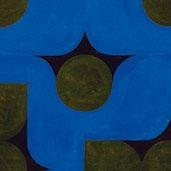


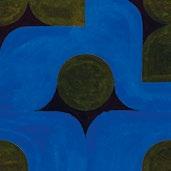



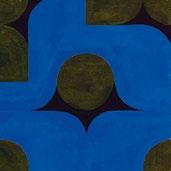



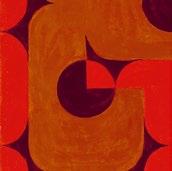





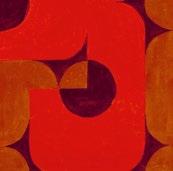
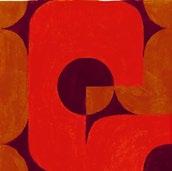



















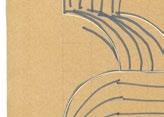










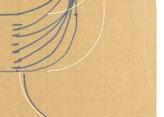































































































































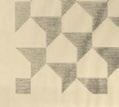




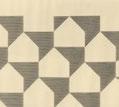

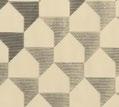

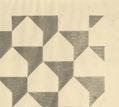





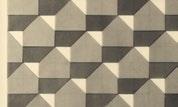
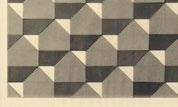


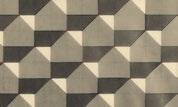


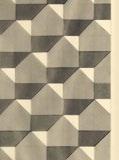

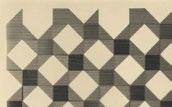
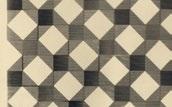

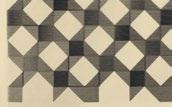
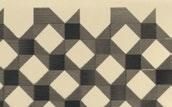
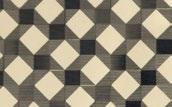
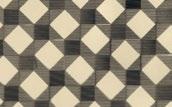




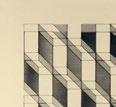












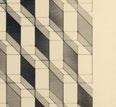
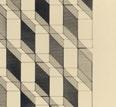
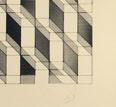


































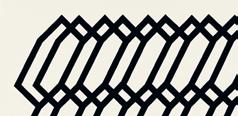





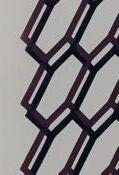


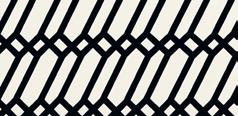




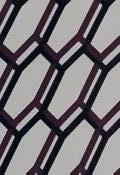





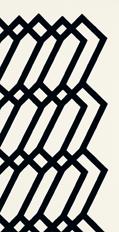

























































































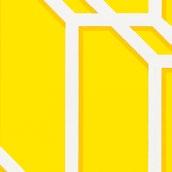


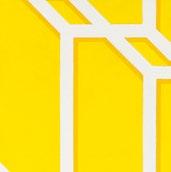
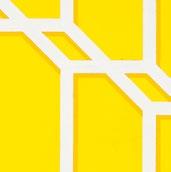
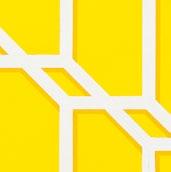

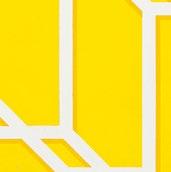

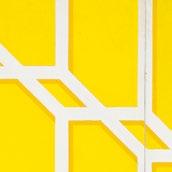

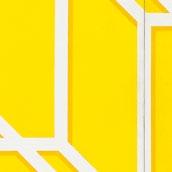
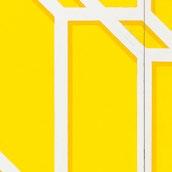














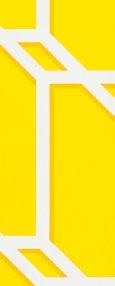


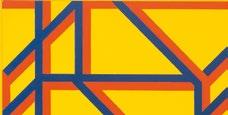










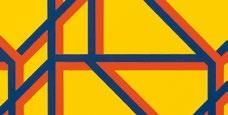







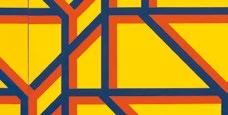

















































































































































































































































































































































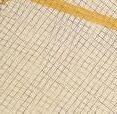

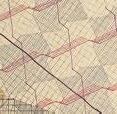



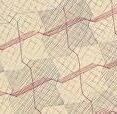
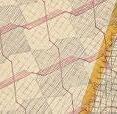






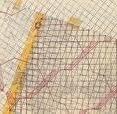


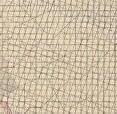








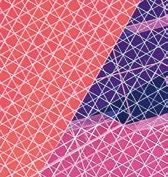










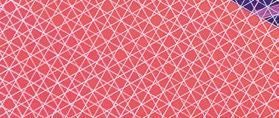









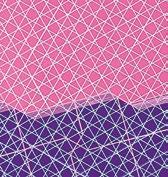


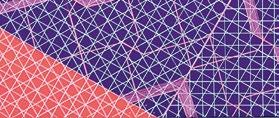

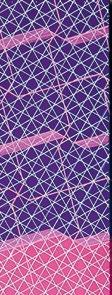
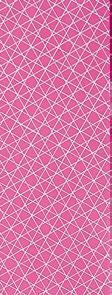

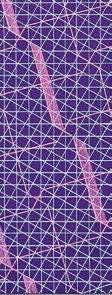


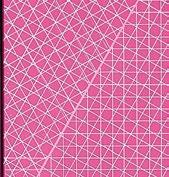


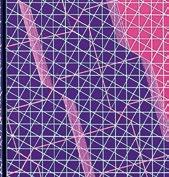










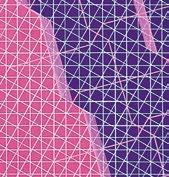



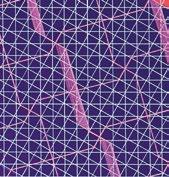

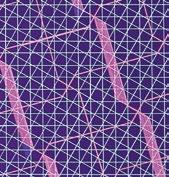

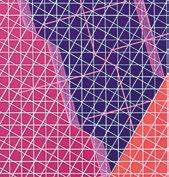




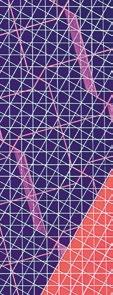



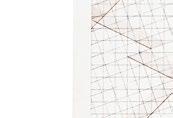

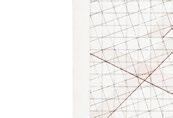





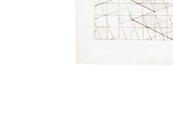






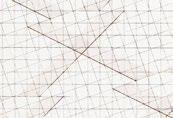
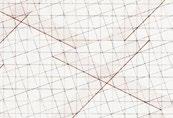
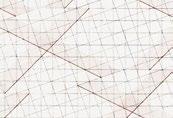








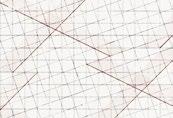
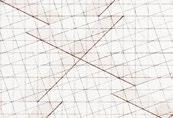


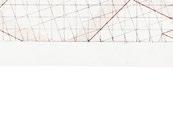









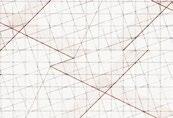












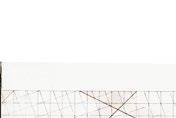



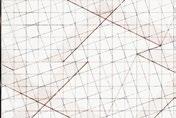



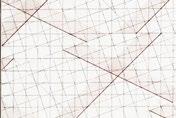




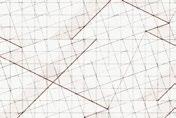
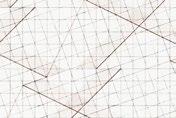

























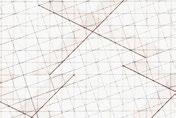
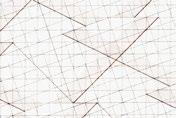

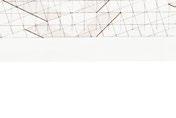
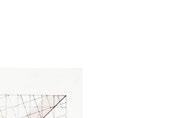
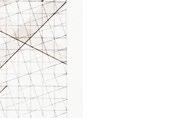
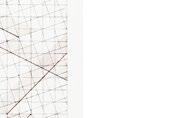











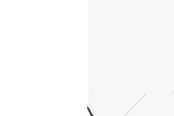



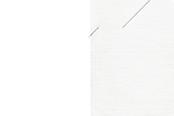









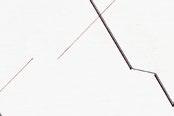





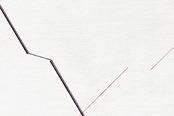







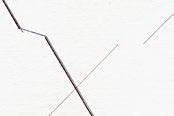



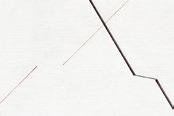





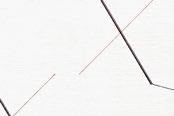
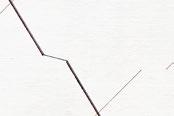


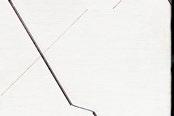
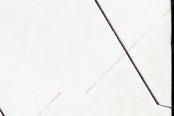






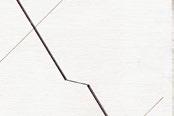






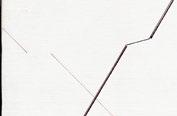



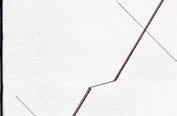




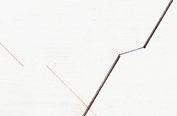

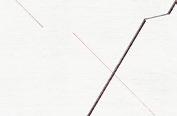

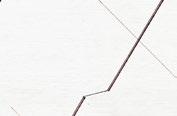









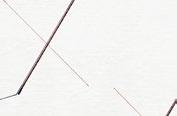







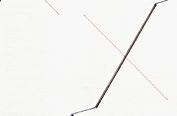
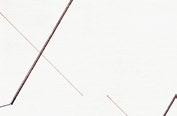

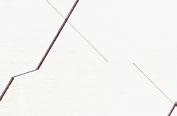

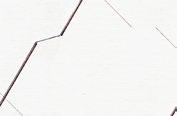
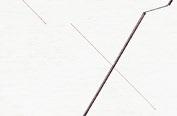














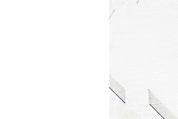
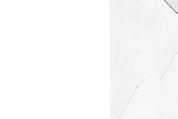
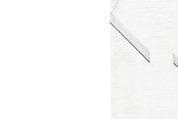




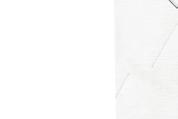

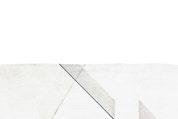
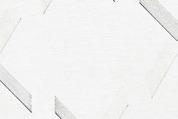

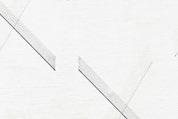



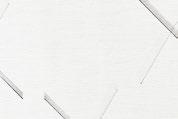














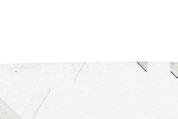


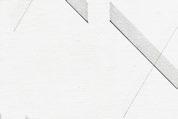
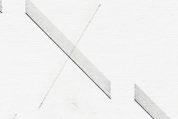



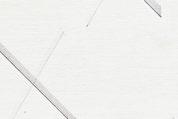
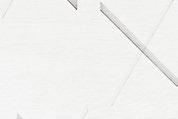







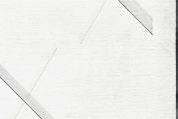
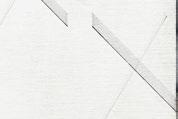
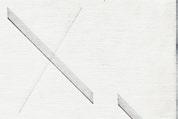















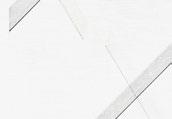

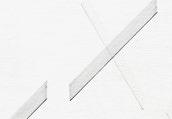




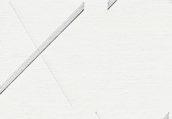







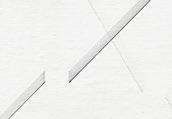

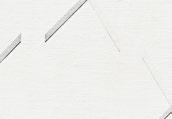
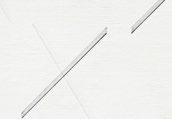

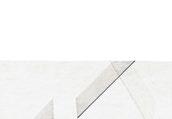
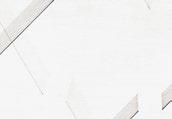






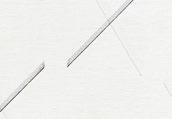
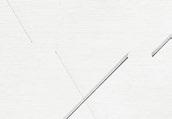



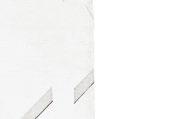
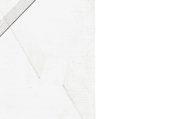
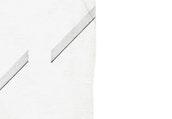



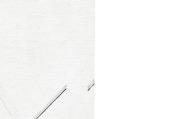


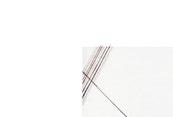

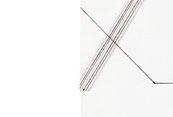


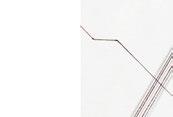
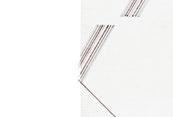
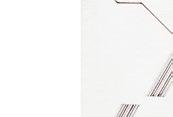




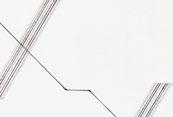








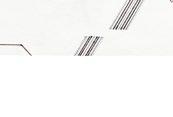

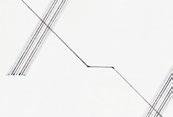

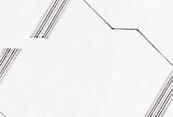

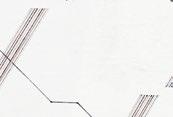





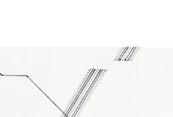
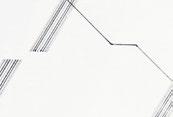

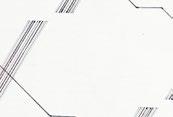


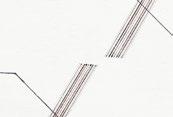



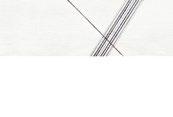
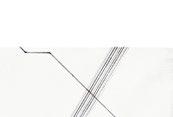

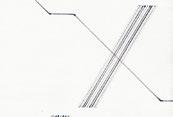
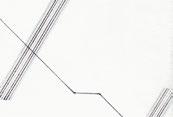






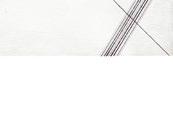

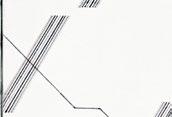






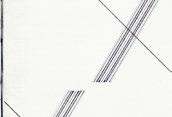


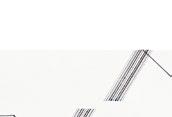



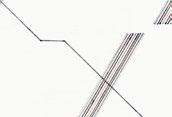
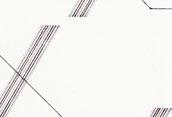


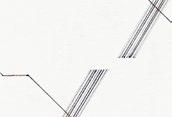


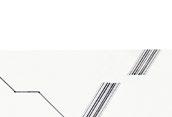
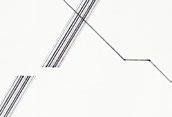



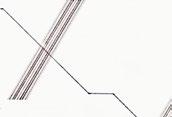








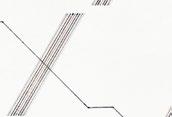

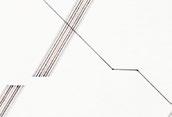




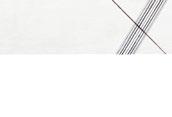



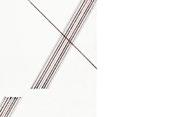













































































































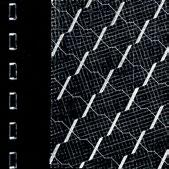
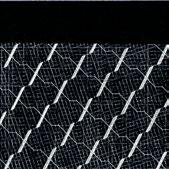

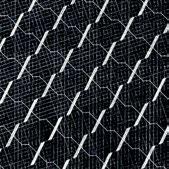





































































































































































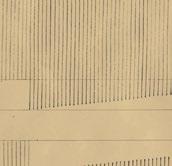

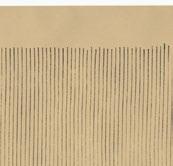



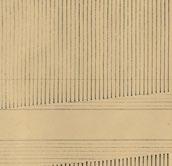
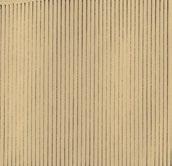

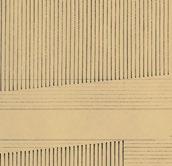
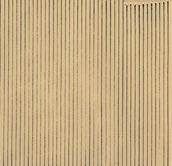
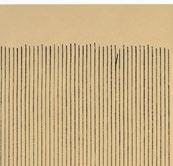




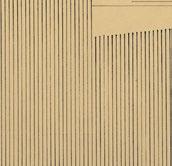

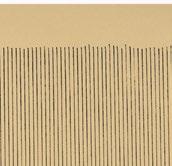

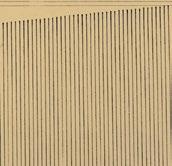



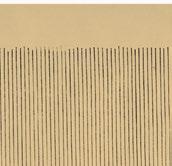
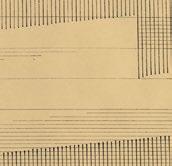







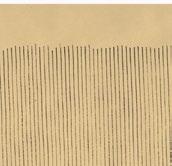



1 Richard Wilhelm, I Ching: El libro de las mutaciones, trans. D. J. Vogelmann (1977; Barcelona: Edhasa, 2023), 12. Originally published as I Ging, das Buch der Wandlung (Munich: Eugen Diederichs Verlag, 1960).
2 The show I curated in 2015 at the Centro José Guerrero in Granada, Soledad Sevilla. Variaciones de una línea, 1966–1986, was the first monographic exhibition on this period in the artist’s career. For further information, see Juan Bosco Díaz-Urmeneta Muñoz, Esperanza Guillén, and Yolanda Romero, Soledad Sevilla. Variaciones de una línea, 1966–1986, exh. cat. (Granada: Centro José Guerrero, 2015).
3 Wilhelm, I Ching, 68.
4 Reproduced in its entirety in DíazUrmeneta Muñoz, Guillén, and Romero, Soledad Sevilla, 20–45.
Seen in retrospect, Soledad Sevilla’s career could be envisaged as a vast universe governed by the principle of change, where one event already includes the beginning of the next and where transformations succeed one another constantly. Every cycle includes its opposite, and change is viewed as the sole possible reality. Occurrences are interconnected, with night enclosed inside day and winter inside summer. Mutation is the only immutable thing. This philosophical and vital principle can be found in the I Ching or Book of Changes , a Chinese work of oracular wisdom whose reading, in the form of a religious ritual, has accompanied Soledad Sevilla for many years. In origin, the I Ching is a book without words, a finite succession of nonlinguistic signs (sixty-four hexagrams) with infinite meanings. Its reading and application are similarly unlimited and universal. It can be interpreted as a cosmogony or a poetic book and, as such, an untranslatable one. 1 In my view, this ancient text sheds a great deal of light on the artistic practice of Soledad Sevilla, who has moved for more than six decades through a creative universe in constant mutation governed by a duality in which opposites coexist, transiting freely from the geometric to the expressive, from the permanent to the ephemeral, from light to darkness, and from reason to emotion.
The Geometric
It is well known that Soledad Sevilla’s beginnings in the field of geometric abstraction go back to the Centro de Cálculo (Computing Center) of the Universidad de Madrid and to the Nueva Generación and Antes del Arte groups. This was the context in which the artist began her reflections on the problems and conditionings of spatial perception and the interrelation of forms, which she started to develop in her earliest works.2 We must refer back to those germinal moments, which began in the late 1960s and were projected throughout the following decade, in order to understand her later development. From the start, Soledad Sevilla devised a system based on only a few elements: first the hexagon and somewhat later the square. From these basic modules, she obtained others by displacement, symmetry, or turning them 45, 90, or 180 degrees. Together with such modular forms, which spread over the different formats and artistic media in a suggestion of infinite multiplication, the artist also experimented with linear elements arising from the suppression or addition of parts of the reticular figures she was using. In the line itself, “the world of duality appears, as established simultaneously with it are above and below, right and left, front and back; in a nutshell, the world of opposites.”3
In “Permutaciones y variaciones de una trama” (Permutations and variations of a web),4 [pp. 60, 61] the statement with which she applied for a grant from the US-Spanish Joint Committee to study in the United States from 1979 to 1982, the artist succinctly explained
5
Díaz-Urmeneta Muñoz, Guillén, and Romero, Soledad Sevilla, 45.
6 “MIT Line consisted of the action of spreading large rolls of paper over the outer walls of some of the buildings and the lawns of the Massachusetts Institute of Technology, on which the artist had worked with different geometric webs (similar to those included in the series of drawings Keiko and Stella), and may be considered her first installation.” Yolanda Romero, “Notas a las variaciones de Soledad Sevilla,” in Díaz-Urmeneta Muñoz, Guillén, and Romero, Soledad Sevilla, 15.
7 Her practice of incorporating her vision of the work of other artists begins with this series but also accounts for later sets of works like Los toros (The Bulls) (1988–1991), based on Guido Reni’s Atalanta and Hippomenes (1618–1619); Los apóstoles (The Apostles), whose origins lie in The Twelve Apostles by Rubens; and her more recent homages to Agnes Martin and Eusebio Sempere.
the bases of her creative process in the 1970s. In the same text, however, Sevilla stresses her wish to begin new investigations, moving from the two-dimensional plane to the three-dimensional space, from painting to installation, in order to incorporate the public: “owing to the physical characteristics of the work I propose, the viewer would be totally enveloped by this inconclusive, mysterious, and unattainable space.”5
As she foresaw, it was her period in the United States that allowed her to close one cycle and open others. In Boston, she produced the series Keiko [pp. 62, 63] and Stella (1980), based on a reiterative use of the line. The title of the second series was a tribute to Frank Stella, one of her artistic referents along with Sol LeWitt, whose work she was able to gain firsthand knowledge of thanks to her stay in North America. There, almost without realizing it, she embarked on her first spatial action, MIT Line (1980),6 [p. 128] as well as her first drawings of superimposed quadrangular grids, entitled Belmont (1980) [pp. 74, 75], a clear prelude to the two series that would mark her production in the early 1980s, Meninas [pp. 76-83] and Alhambras [pp. 84-95].
On various occasions, Soledad Sevilla has explained that the origins of these two series lie in the classes she attended at the Massachusetts Institute of Technology (MIT) and at Harvard
University. Just when the physical distance from her own culture was greatest, her interest was aroused by one of the key works of the history of Spanish painting, Velázquez’s Las Meninas 7 Soledad Sevilla’s way of viewing this painting is centered on its space, that enigmatic place where the scene is set, which is configured through the immaterial element of light. She recreates this space in her work by means of superimposed grids of squares, a technique already essayed in her Belmont series drawings. This technique of showing by concealing, allowing a painting, an architectural form, or a landscape to be glimpsed or intuited through grids or lattices, was to guide many of her future works. Meninas also introduces a new approach to color, an element that now comes increasingly to the fore in her oeuvre. These are colors that seek vibration and whose purpose is to dispel and soften the rigidity of the geometric composition, configuring an indefinite and mysterious space of the kind she mentions in her Boston statement. Finally, Meninas also helps her to systematize a working method materialized in series that deploy various formats. Smallformat work, generally on paper, is the starting point that allows her to formalize ideas, while the medium-sized format acts as an index or route map. However, her true interest lies in large-format work owing to its expansive and enveloping nature.
In a single picture, I don’t say everything I want to say. I need more pictures, more moments. It’s hard to develop ideas. They are rather like a book, a novel structured in chapters, in phases. There is something to
8 Yolanda Romero, “Una conversación con Soledad Sevilla,” in Soledad Sevilla. El espacio y el recinto, exh. cat. (Valencia: Institut Valencià d’Art Modern [IVAM], 2001), 15–17.
9 Oleg Grabar, The Alhambra (Harmondsworth: Penguin, 1978).
be told there, and you have to do it step-by-step. It takes time for me to make the image I’m producing into the one that interests me, and once that image is drawing near or starting to resemble what I want to achieve, there still remains the whole task of developing it, perfecting it, and exhausting it . . . Suddenly, though, there comes a moment when you say: “I’m bored. I can do this now: it’s come out.” And when it comes out, I’m no longer at all interested in carrying on with it.8
The Meninas, developed between 1981 and 1983, were followed by her next series, the Alhambras, on which she worked from 1984 to 1987. In the case of the Alhambras, it was the classes taught at Harvard University by Oleg Grabar,9 a specialist in ancient Islamic art, that aroused Soledad Sevilla’s interest in the architecture of the Nasrid palace. In 1984, she stayed for the first of many times at the artists’ residence of the Fundación Rodríguez-Acosta in Granada, where she produced the initial drawings and small-format paintings that would later serve as a guide for the large pieces in this series. Four years later, the Alhambras were presented to the public at the Galería Montenegro in Madrid, the Galería Palace in Granada, and the Fundación Rodríguez-Acosta. In the catalogue of that show, the artist reviewed the series in these terms:
In the work I have carried out over the course of four years, I have tried to reflect the mark left on me by both the superficial and the profound aspects of the architecture of the Alhambra. Visible forms and frames of mind have constituted the raw material amalgamated in
10 Soledad Sevilla, “La Alhambra,” in Carmen González de Castro, Yolanda Romero, and Soledad Sevilla, Soledad Sevilla. Transcurso de una obra exh. cat. (Granada: Instituto de América de Santa Fe, 2008), 129–30. Originally published in Francisco Calvo Serraller and Soledad Sevilla, Soledad Sevilla. La Alhambra, exh. cat. (Madrid: Galería Montenegro, 1987), n.p.
11 Grabar, The Alhambra, 57.
12 Grabar, The Alhambra, 114.
the paintings I have produced during this period, which are centered on three themes that have arisen from contemplating the world of the Alhambra: the magic of portals, the magic of reflections, and the magic of shadows. All of them are transformed into space, and an attempt is made to render this space on the canvases through mists, insinuations, and lights.10
Soledad Sevilla identified three parts of the Nasrid monument with each of these three themes respectively: the Golden Room, the Court of the Myrtles, and the Court of the Lions. The first is a monumental entrance to the palaces of Muhammad V comprising two portals of exactly the same shape and size that act as an essential fulcrum, as they can either lead visitors out of the precinct or provide an entrance to the majestic Court of the Myrtles. A poem inscribed on the wall identifies the wall as a “gate where [roads] bifurcate and through [which] the East envies the West.”11 As Grabar has pointed out, the Golden Room “is a gate, but it is also a trap, for it does not indicate the correct direction to take.”12 For the artist, this world of forking paths, entrances, and gateways symbolizes the mysterious and the hidden: that which is only glimpsed without being completely shown.
The next architectural setting, the Court of the Myrtles, is reached, if we make the “right” decision, via a passage at an angle to the Golden Room. It is structured around a large pool of water that becomes a mirror reflecting the surrounding architecture. The still water of these ponds, an essential element of the Alhambra as a
whole, interests the artist not only because of the illusory world of the mirrored reflection but also because of the organic world of nature, which was gradually to appear in her work in various ways. The last of the spaces Soledad Sevilla cites is the famous Court of the Lions, flanked by a succession of rooms with honeycomblike muqarnas domes creating a rhythmic effect of illuminated and shaded areas. This world of shadows and chiaroscuro is precisely one of the interests reflected in the paintings she dedicates to the Court of the Lions, which capture the succession of columns and the interstices of light and darkness that outline them.
It is not surprising that Soledad Sevilla should have felt in tune with this indescribably beautiful place, which she spent many days visiting and studying. The geometric composition that organizes its architecture, with the rectangular court as the fundamental module organizing the space of all three of the areas mentioned, and its ornamental program, largely based on modules in series that could be infinitely repeated, were already to be found in many of the exercises on grids from the start of her years in Madrid. The Alhambra, however, contributed above all a poetic and emotional element to her work, opening a new path in her creative process that distanced her from the cold premises of minimalism, still discernible in her Meninas. When Soledad Sevilla decided to paint this architecture, she was not aiming at a formal representation of it. Her goal was, on the one hand, to capture those magically enveloping spaces, which change as they are lit by the sun or the moon (hence the nocturnal and daytime versions common to nearly all
the works in this series), and, on the other, to reflect the specular condition of reality, that world of mirrors that disrupts and inverts the sense of things and is made possible thanks to the motionless waters of the pools. It is curious to see how the titles she gave her pieces themselves intensified this relationship with the poetic after her Alhambras. Her 1960s and 1970s works had no titles. After her stay in the United States, a more personal note became apparent: Stella or Mondrian, in homage to artists she admired; Keiko, the name of a Japanese friend; Belmont, the residential neighborhood where she lived in Boston and whose colors she tried to capture in her paintings; and even Meninas, which she distinguished merely by naming them.
The Alhambras, on the other hand, are singularized with titles derived from the poetic inscriptions that cover different parts of the architecture of the Alhambra, many of them the work of the Nasrid poet Ibn Zamrak. After this series, poetry and painting became inseparable in her oeuvre: “I always try to transform the themes into a result that will arouse emotion visually, that will be poetic, and if that disappears, it is not my intention.”13
A few months after the presentation of the Alhambras in Granada, the Sala Montcada of the Fundación ”la Caixa” played host to her installation Fons et Origo (1987) in Barcelona. Very early on, Sole-
14 For more information on this aspect of Soledad Sevilla’s work, see Yolanda Romero, ed., Soledad Sevilla. Instalaciones (Granada: Diputación provincial de Granada, 1996).
15 This installation was presented within the framework of the Plus Ultra project, curated by Mar Villaespesa and produced by BNV Producciones at the Vélez-Blanco Castle (Almería) as part of Expo ’92.
16 In Fons et Origo, she used a sound composition by the artist Lugán. El poder de la tarde (The Power of the Evening, 1984) included a recording of birdsong.
17 Romero, “Una conversación,” 15.
18 Romero, “Una conversación,” 11.
dad Sevilla experienced a special desire to make a reality of the space suggested in her paintings through installations.14 While MIT Line—linked, as indicated above, to her series of drawings Stella and Keiko—may be regarded as her first approach to the experience of the installation, Fons et Origo must be understood as an extension of the series of paintings inspired by the Nasrid monument, a reconstruction of the magical and unreal ambience that appeared on her canvases, and the first in a succession of installations formed by threads that trap and reflect the space and the light, which thus become the central theme of her investigation. On many occasions, her installations can be seen as the end of a pictorial cycle, a three-dimensional expression that completes a set of paintings. In perhaps rather fewer cases, the installation is the starting point for a new cycle, as in the project for the Vélez-Blanco Castle, Mayo 1904–1992 , 15 which served as the stimulus for the series of paintings En ruinas (In Ruins, 1993–1994) and Vélez Blanco (1995). From the start, the installation became a space of experimentation for Soledad Sevilla where she could add new elements to her work, such as sound,16 the organic (water, earth, fire, ice, vegetation), or industrial materials (copper, netting, wires), but also a space for interacting with all the senses of the viewer, who no longer uses only sight to approach her work but also touch, hearing, and even smell: “For me, an installation is light, the light that comes in through the windows, it is the smell that invades a space, it is sound, it is something immaterial that is creating an atmosphere.”17 Moreover, in installations, the artist
allows herself to be more figurative and narrative, something she avoids in painting. It is only in this format that the abstractionfiguration dialectic common to so many artists of her time is resolved without contradictions.
For Soledad Sevilla, however, the installation represents above all the ephemeral condition of art in contrast to the permanence of traditional formats like painting or sculpture: “I am often weighed down by the accumulation of elements and objects, and in that sense the ephemeral is perfect: it happens and disappears. The fact that the installation is produced in a time and space, and that afterward only the memory remains, adds a highly suggestive poetics to it.”18 Over the course of her long career, she has embarked on nearly a hundred spatial interventions. Some might be considered subtle versions of the same element, but it is undoubtedly more appropriate to think of them as new works, since each one is deployed in a different place with its own conditioning factors, and all reveal very different approaches. The most illustrative case is that of her installations of cotton threads, which she has produced from the 1990s to the present and which transform the light into delicate metaphors of day or night. Some are linked by their location in a singular historic building, such as Toda la torre (All the Tower, 1990) in the Tower of Los Guzmanes in La Algaba, near Seville; Somni recobrat (Recovered Dream, 1993) in an old palace in Palma de Mallorca; and, more recently, De la luz del sol y de la luna (On Sunlight and Moonlight, 2021), mounted at the Museo Patio Herreriano in Valladolid. Flashes of light filtered
19 Designed for the Galería Soledad Lorenzo in Madrid, it comprises two parts: an initial section with two crisscrossing clusters of copper wires, and a final part in the form of an apse where the vertically taut filaments release drops of water like a fountain of rays of light. This was the first version of a cycle whose titles were taken from the name of the city where each piece was presented.
20 This installation was produced at the Casa Horno de Oro in Granada for the aforementioned exhibition Soledad Sevilla. Variaciones de una
21 The courtyards can be seen today in a gallery at the Metropolitan Museum of Art in New York.
through filaments, this time made of copper, are also featured in de La hora de la siesta (The Hour of the Siesta, 1990), Soledad la que recita la poesía es ella (Soledad the One Reciting the Poetry Is Her, 1991),19 which incorporates water, and Casa de oro (Golden House, 2015), where the artist transformed the courtyard of a Moorish house in Granada’s Albaicín district with the parallel planes formed by 1,300 orange copper filaments, which surrounded viewers with reflections that changed based on their position and the time of day.20
Soledad Sevilla’s spatial interventions play with the perception of the public and require an active spectator, quite unlike the immersive experiences of today that enhance passivity. In the Vélez-Blanco Castle, a historic building in the province of Almería whose Renaissance courtyards were removed and sold to a US collector, the artist literally invited us to create/imagine that place collectively.21 Upon entering the huge bare courtyard, the viewer at first saw nothing, but as night fell, some projections slowly began to summon up the missing arcades. This perceptual game highlighted the fragility of that unreal architecture and required a collaborative public who would help to construct the space [p. 97]
In the 1990s, after the experience of Vélez-Blanco, Soledad Sevilla’s pictorial work started to drift toward emptiness in a search for
radical abstraction. The geometric grids become less apparent, and the lines fade away until they literally vanish. This departure was already announced in Atropellar la razón (Riding Roughshod over Reason, 1991) [p. 133], which made way for two of her most abstract series of paintings, Vélez Blanco and En ruinas. Evident in these works is the inspiration the artist drew from the walls removed from the castle’s courtyards, which had impressed her so deeply on her first visit, as well as the influence of the work of Mark Rothko. The format of some of these works necessitates a corporeal action on the part of both the viewer and the artist herself. They are paintings to be explored (some are more than seven meters long) that evoke the monumentality, the ruin, or the restrained poetry of the walls, factors that became the catalyst for the different series and installations Sevilla produced up to the early 2000s.
Paradoxically, these extreme formats, which call for a great physical effort on the part of the artist, originate in her need to use a technique, oil painting, that would allow her to paint more slowly after her 1996 health crisis. The works of this period also incorporate a temporal dimension. The walls that interest the artist—the ruins of the castle in Almería, the Arab walls of Granada, the abandoned tuna fishery of El Rompido—have been modified by time and therefore have a memory. However, while the wall is initially impenetrable, especially in Vélez Blanco, her paintings start to be invaded in the mid-1990s by a rhythmic accumulation of brushstrokes, as we can see in En ruinas II (In Ruins II,
22 Romero, “Una conversación,” 17.
23 Various versions of this installation, shown for the first time in Spain at the Galería Soledad Lorenzo in 1998, have been presented in different Spanish cities.
24 Antonio Machado, “A una España joven,” 1915, in Poesías completas (Madrid: Publicaciones de la Residencia de Estudiantes, 1917), series 4, 7:256.
25 A version of this installation was produced for the Centro de Creación Contemporánea de Andalucía (C3A) in 2019 under the title La salvación de lo bello (The Salvation of the Beautiful).
26 This retrospective exhibition was held in 2001 at the Centre del Carme in Valencia, managed by the Institut Valencià d’Art Modern (IVAM). The show, which I curated, began with her first geometric works, showed her most recent series, and included the installations Con una vara de mimbre (With a Willow Switch) (2000) and El Rompido (2001).
1995) [pp. 98-99] and Díptico de Valencia (Valencia Diptych, 1996) [pp. 100-101]. It is the presence of nature that has transformed the emptiness of these walls by appropriating them. What she has called a “vegetable magma” compacts the surface of the canvas, gradually revealing an opening, a chink of light.22 As on previous occasions, these new pictorial cycles, vegetable walls and “insomnias,” were soon transmuted into installations. The contained vibration of canvases like Apamea (1999) [pp. 104-105] and Insomnio madrugada (Early Morning Insomnia, 2000) [pp. 142-143] found release in a three-dimensional work, El tiempo vuela (Time Flies, 1998) [pp. 108-111], which incorporated real movement and sound.23 This installation, made up of a thousand butterflies screen-printed on paper that revolve incessantly on a clockwork mechanism at a one-second rhythm, conveys to the viewer the emotion produced in the artist by a wall covered with ivy stirred by the breeze. However, the butterflies are a metaphor: the process of metamorphosis that turns the caterpillar into a butterfly in the final phase of its life symbolizes the inexorable passage of time, an idea reinforced by the line of poetry by Antonio Machado inscribed in white enamel on the wall: “y es hoy aquel mañana de ayer” (“and today is that tomorrow of yesterday”).24 Time seen as a motor that transforms nature was a question Soledad Sevilla had previously addressed in one of her first installations, Leche y sangre (Milk and Blood, 1986). On that occasion, she covered the walls of the Galería Montenegro in Madrid from floor to ceiling with thirty-six thousand red carnations that faded as the days
went by, offering glimpses of the white walls.25 Like a contemporary vanitas, the faded flower also refers to death and the fleetingness of life. The installation El Rompido (2001) similarly reflects the artist’s emotional connection with landscape and nature. The ruins of the tuna fishery in the small village of El Rompido (Huelva) exercised a powerful influence over Sevilla, which explains not only the origin of the Insomnios series (2000) but also that of the installation that closed her exhibition for the Centre del Carme in Valencia, Soledad Sevilla. El espacio y el recinto (Soledad Sevilla: Space and Precinct).26 The intervention occupied two opposing spaces that functioned as negative and positive by reproducing the effect of a crack in the wall in different ways. In the first, the crack was constructed with an opaque material, bronze. In the second, by contrast, a cracked and broken wall constructed with the aid of light allowed a glimpse of the reality existing behind the wall: a ruined alleyway overgrown with plants. El Rompido and Insomnios marked the end of a cycle that almost coincided with the start of the new century. From then until now, Soledad Sevilla’s creative career has continued with its tireless exploration of her most intimate concerns, which persist in different forms in each new cycle. For in that book without words that constitutes the artist’s creative universe, every sign, every work, can be read in an infinite number of ways, and, as the I Ching shows us, its reading, equally limitless and universal, can be interpreted as a cosmogony, as a poetic and, as such, untranslatable book. Therein lies its grandeur.






































































































































































































































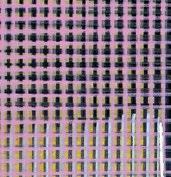
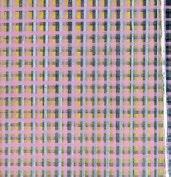


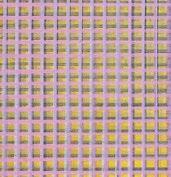
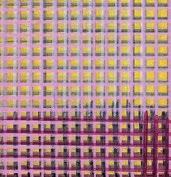













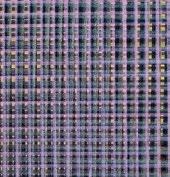
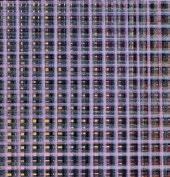
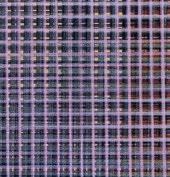

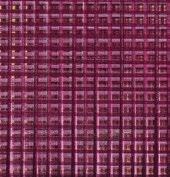



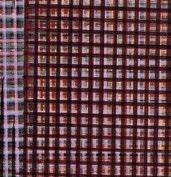
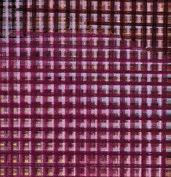
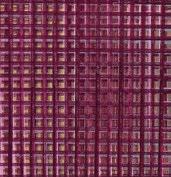










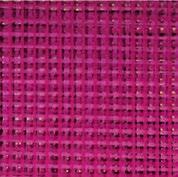



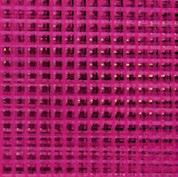
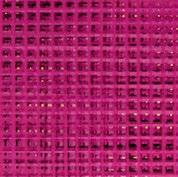









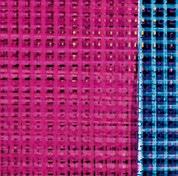



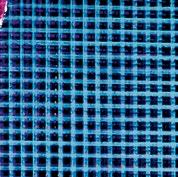



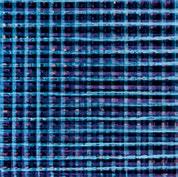





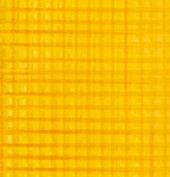

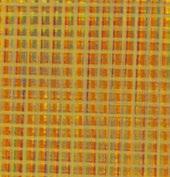
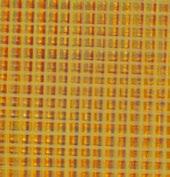



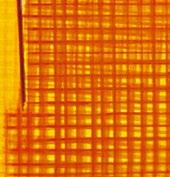








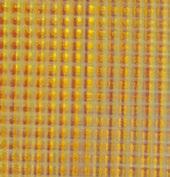

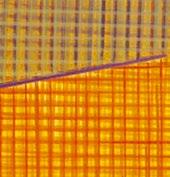


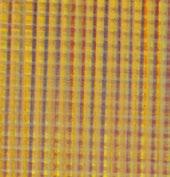


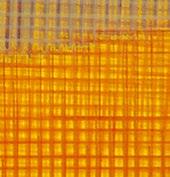

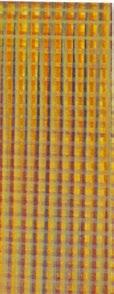
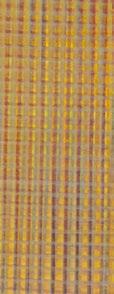
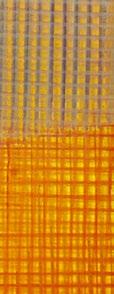




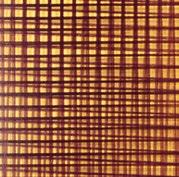


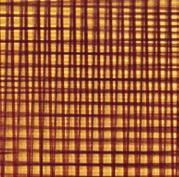
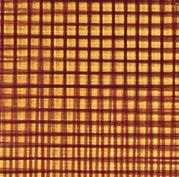

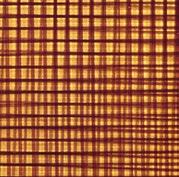
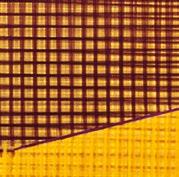
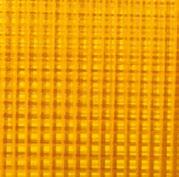

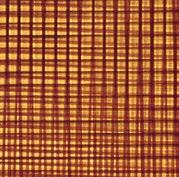









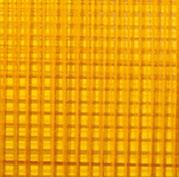


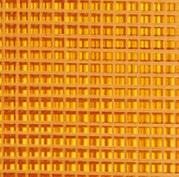









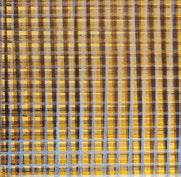



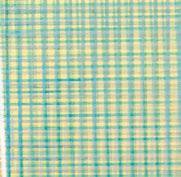






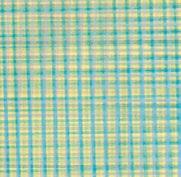



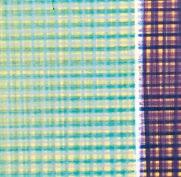

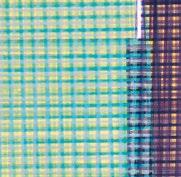





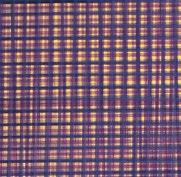



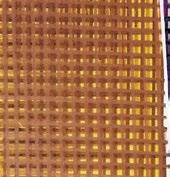



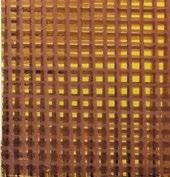



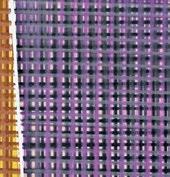






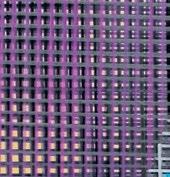
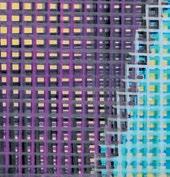


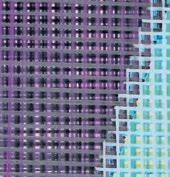
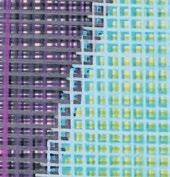
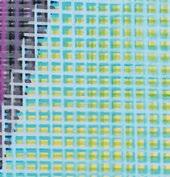
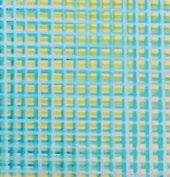
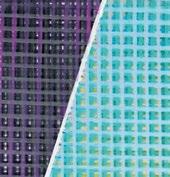




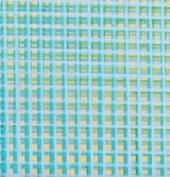


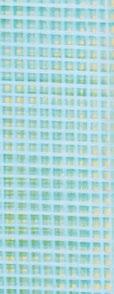

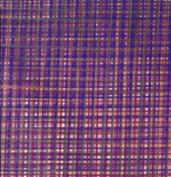










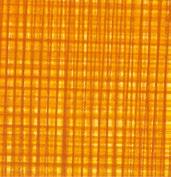

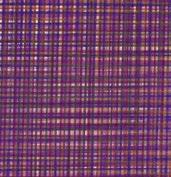





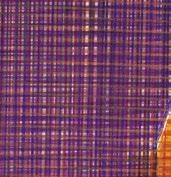

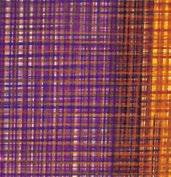





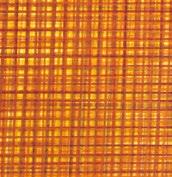

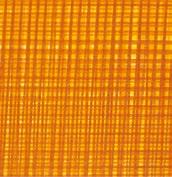

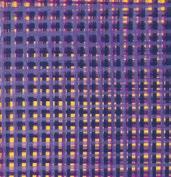




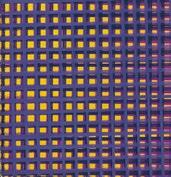


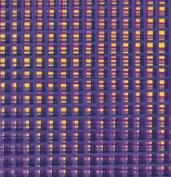
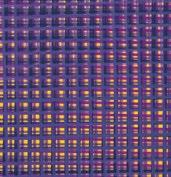




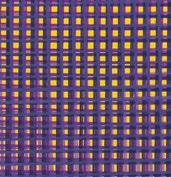







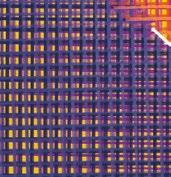

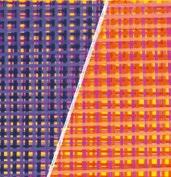


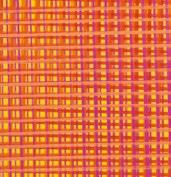

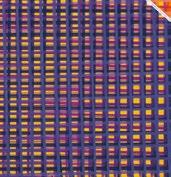
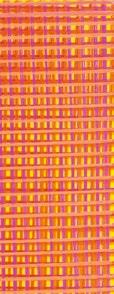


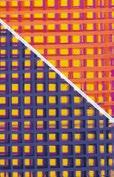





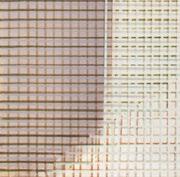

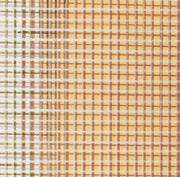
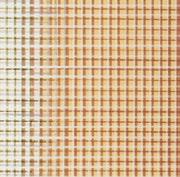



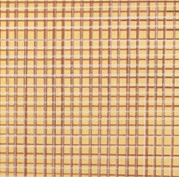


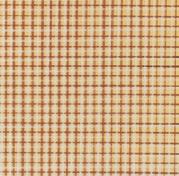
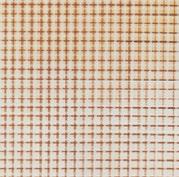

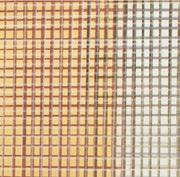

















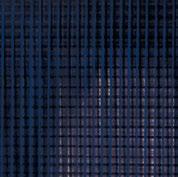





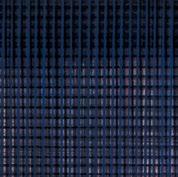




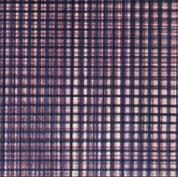










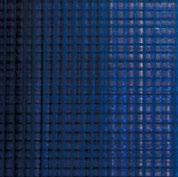




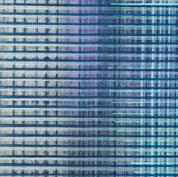
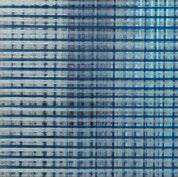


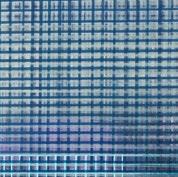









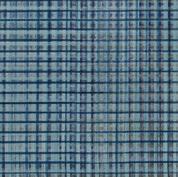
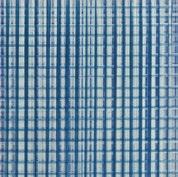


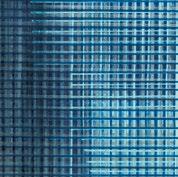










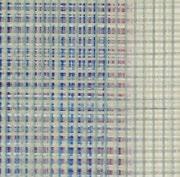


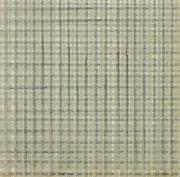

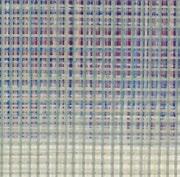



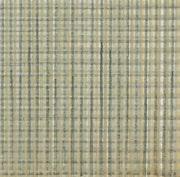







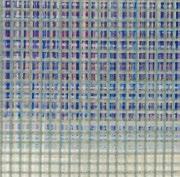
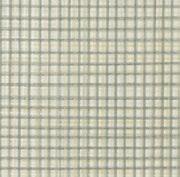





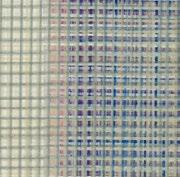










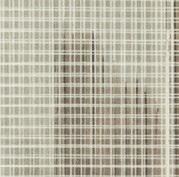






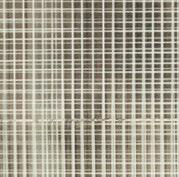
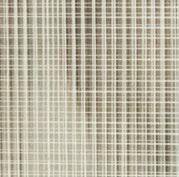


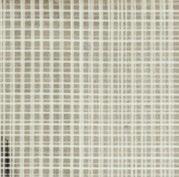
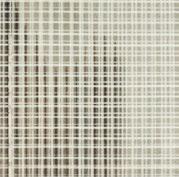
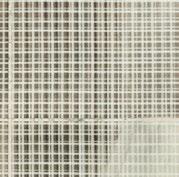
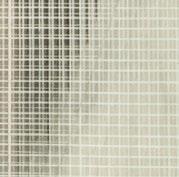
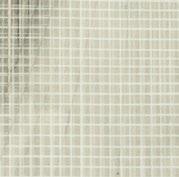
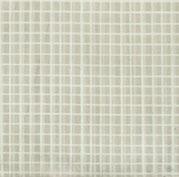
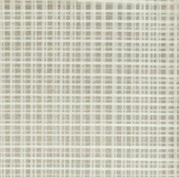
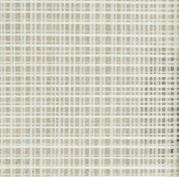
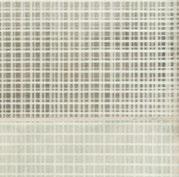
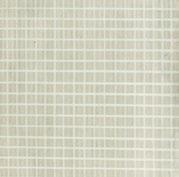










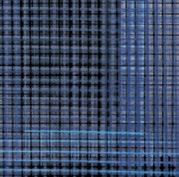











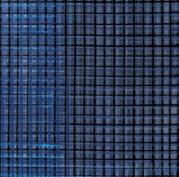


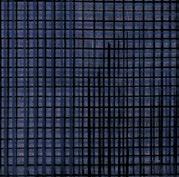



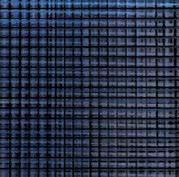

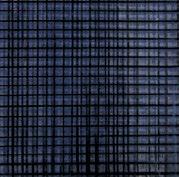







































































































































Atmosphere, Languid Aura _______ 1985–1986
























































































































































































































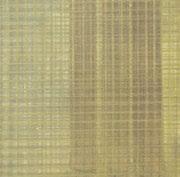






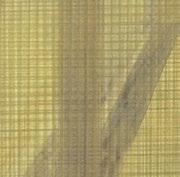



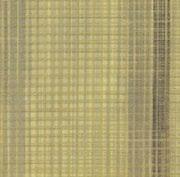





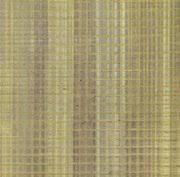


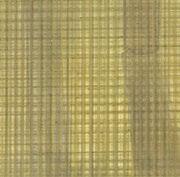
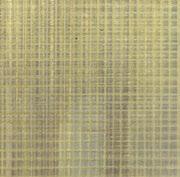
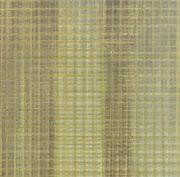
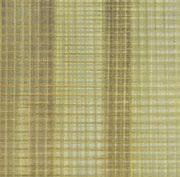


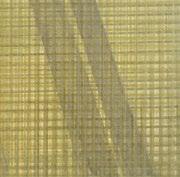
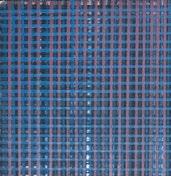


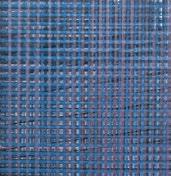

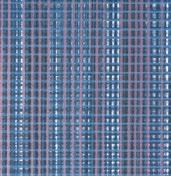


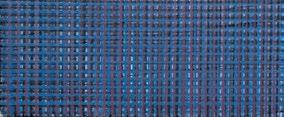
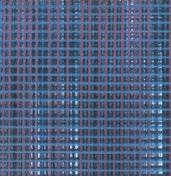










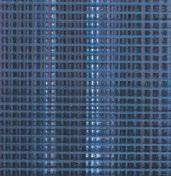
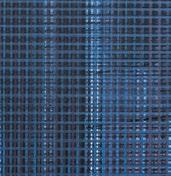



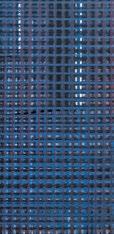
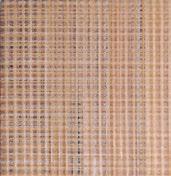

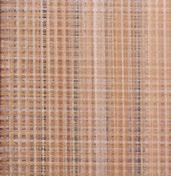
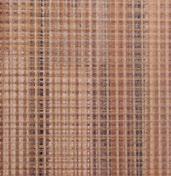

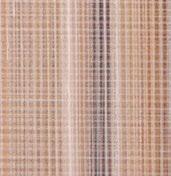





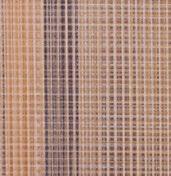

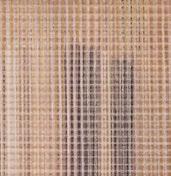





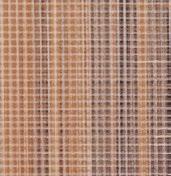

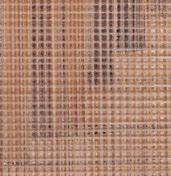

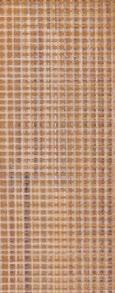




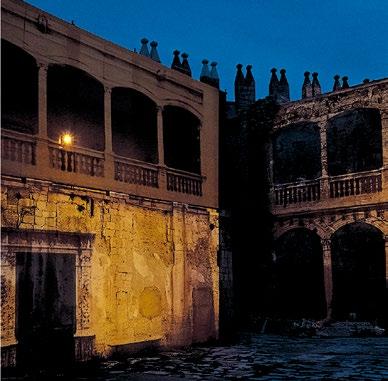

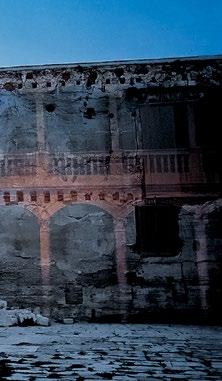

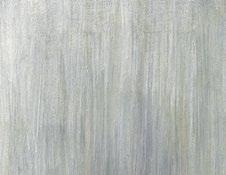

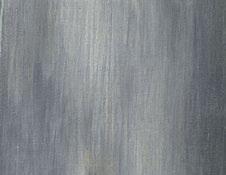







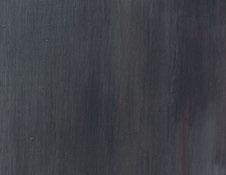














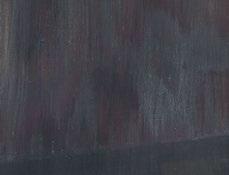




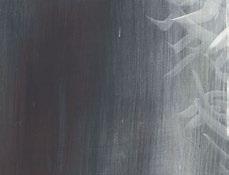
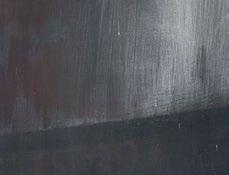


























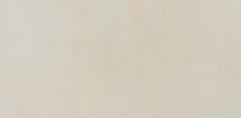





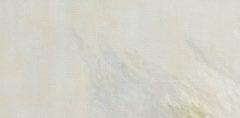




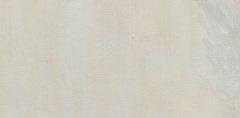














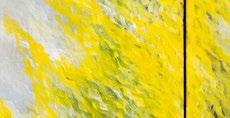



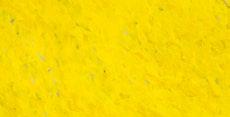









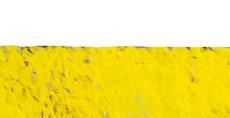





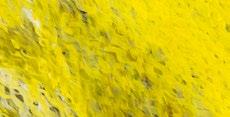

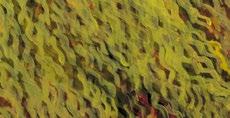







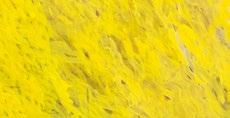
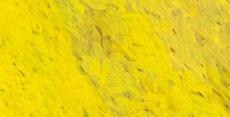

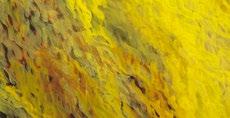


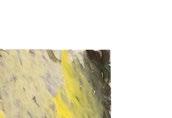
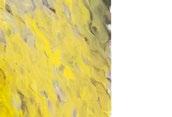
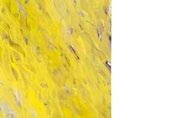
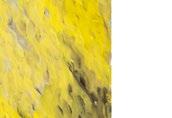
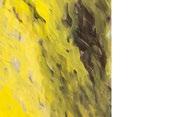

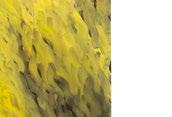


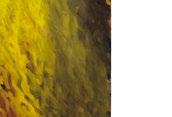
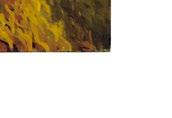


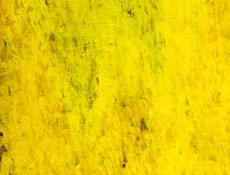







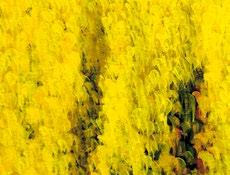











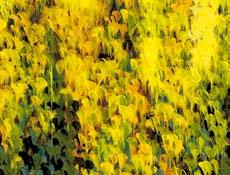



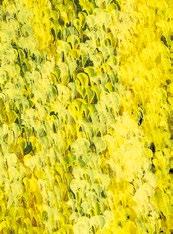






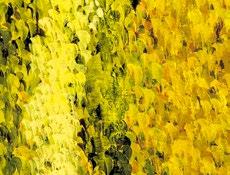



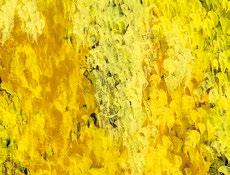
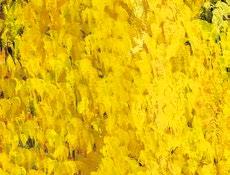








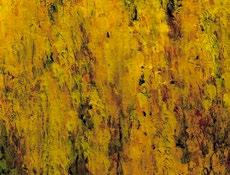








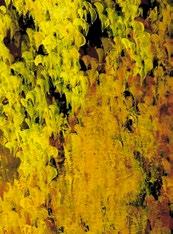
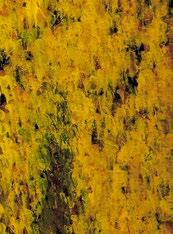
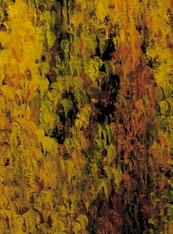



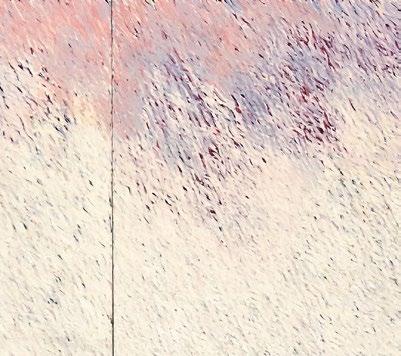




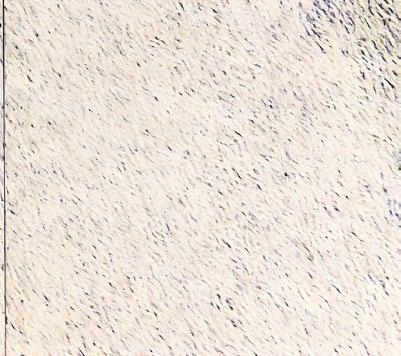

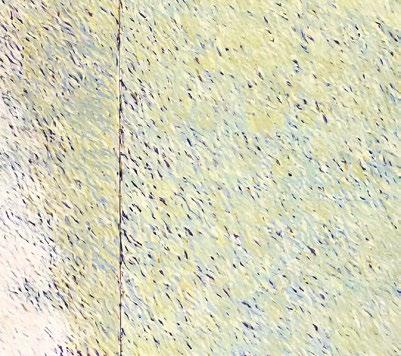
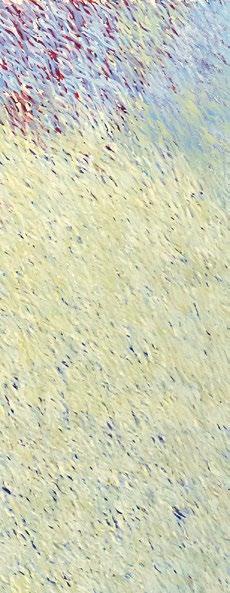








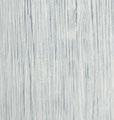





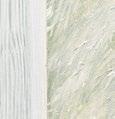


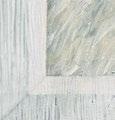







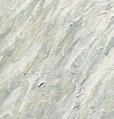

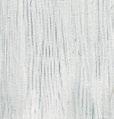



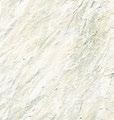


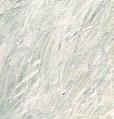



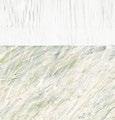
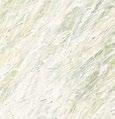
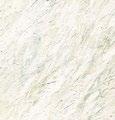
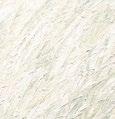


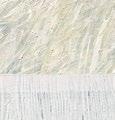
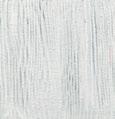

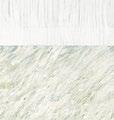

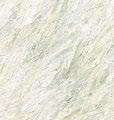
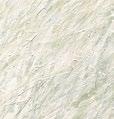












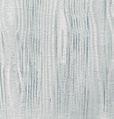


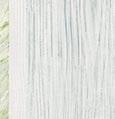




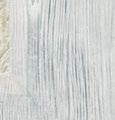
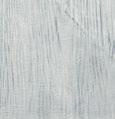






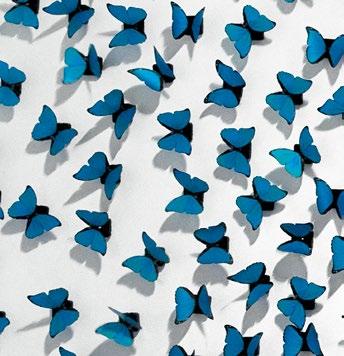



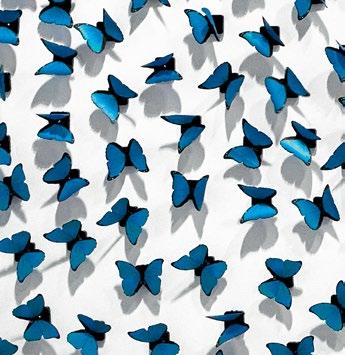





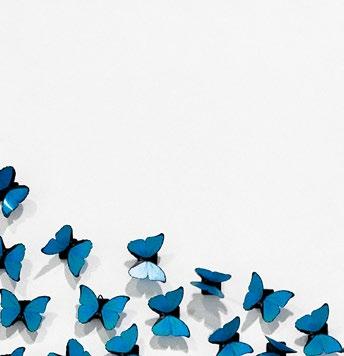

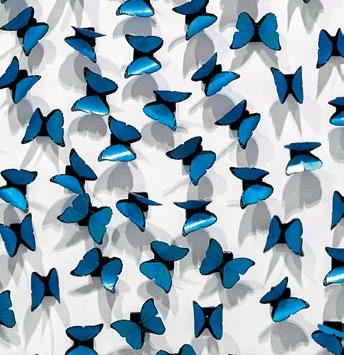

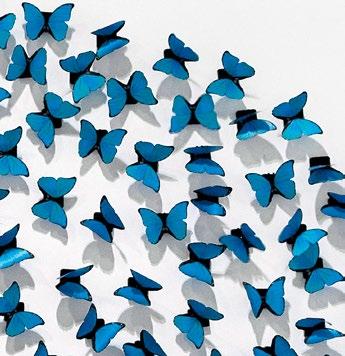
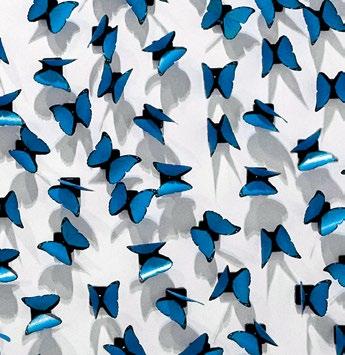





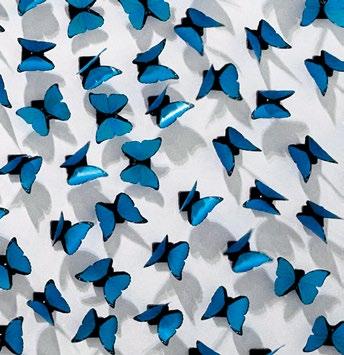
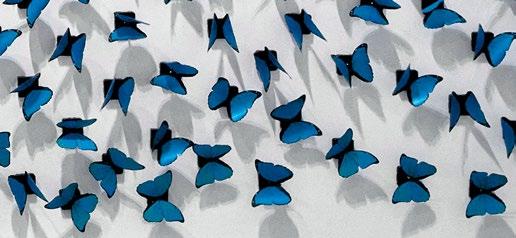

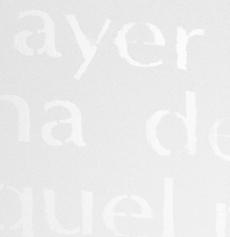































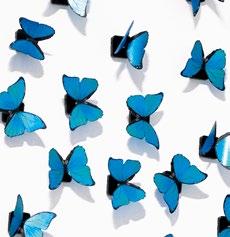

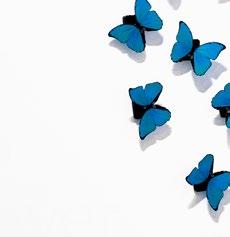


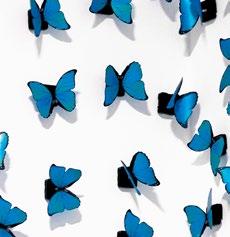











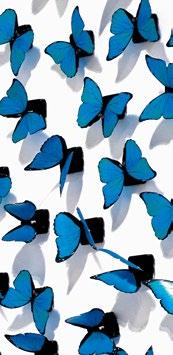

from an interview first published
Kevin Power: Let’s begin returning to the late 1960s and early 1970s. I’d like you to situate yourself in that context and talk a little about what it was you defined yourself within and what it was you defined yourself against. [. . .]
Soledad Sevilla: As far as I was concerned there were no outside influences. We all had very little information and I myself almost none at all. At this time I was more concerned with being a housewife and a mother, since my children were very young, than with being an artist. Of course I never lost sight of my activity as an artist, but inevitably all the rest weighed on me. [. . .] All of this was, of course, a reaction against what I had been taught at art school where everything was totally academic and conservative. They made you go through a whole series of canons—figuration, landscape, drawing, etc. In short, it was the type of education that was completely useless as far as I was concerned. What I was looking for was a colder and more technical art as compared to what might be called a highly domestic art.
K. P.: I’d also like to know something of the significance of the Centro de Cálculo in the Universidad de Madrid between 1969 and 1971.
S. S.: Yes, Elena Asins, Gerardo Delgado, Eusebio Sempere, José María Yturralde, José Luis Alexanco were all there. [. . .] What we were trying to do with Ernesto García Camarero, the director of the course, was to make ar t with the computer. The objective was to produce, as the title of the course makes clear, automatic visual forms. It was a matter of researching, or rather of producing a piece of work, so that the computer could intervene directly or form part of the creative process. This possibility appealed to me, since it was utterly different from all that I had been taught. It was a particularly rich experience. [. . .] However, I was already quite sure that it was not my medium and that its only value was as a form of research. [. . .] It was rather a visceral reaction on my part, which most probably I did not even analyze very deeply. I was simply lacking something, the education I had been given at art school was failing me, I saw there were important aspects missing from that education. In time I would decide on the path to follow; actually it wasn’t long before I abandoned that colder aspect I first thought was my aim and realized my field of work was something much more personal.
K. P.: I believe you became involved in a project on synergy with the Asociación Española de Biofísica.
S. S.: Yes, in a project called “Palpebronasal Motor Synergy,” which I did on one of my journeys to the Sahara desert with my ex-husband, who was a member of the association. Another member asked me to carry out there some research for him, for he wanted to prove this theory of his about a face muscle that moves involuntarily when one blinks. According to him, this was something atavistic common to primitive cultures that contemporary man has lost, but which existed in prehistoric people, who employed their sense of smell in order to defend themselves from their enemies. So this man wanted me to carry out a statistical study on the desert nomads, and I did it by observing them, asking them to blink and taking notes on the movement of this little muscle. But synergy had nothing to do with my work, this was just collaborating with this person who had asked me to do so.
K. P.: You go to the States in the 1970s and it is there in Boston that you begin to turn toward the concept of installation. What was it that specifically influenced you to turn in this direction and what were the principal interests that you carried over from your painting to the installation pieces?
S. S.: [. . .] I felt the need to analyze my personal development in this geometrical world I was immersed in, the need to redefine what stage of my research I had reached and why and how I had gotten there. I wanted to go back in time and, starting at the very beginning, identify all the elements that had taken part in my work so that I could develop them without any spatial interruptions, in such a way that they might extend in space and you could move from one element to another naturally, instead of getting the impression of their being independent pictures. Rather than that I wanted these elements I had been working with—especially the irregular hexagon—to succeed each other in space.
K. P.: Your first installation was MIT Line (1980).
S. S.: Initially I did not consider MIT Line an installation. As I said before I simply needed to unroll those rolls of paper there in order to get a global view of my work. But, on the other hand, the fact is that there are some photos of that experience. What I mean is that, even if it was just at a subconscious level, I might have been considering this as an action or installation.
springtime, late in the afternoon, and I lay on a bench in San Lorenzo Square. I looked up and saw the branches of the trees and the intensity of the colors and the light of Seville, and I heard the sound of birds. I was deeply moved, so I decided to do this installation. I covered the gallery ceiling with vine branches and added a red light through which I tried to materialize the light of spring in Seville, and I also recorded the birdsong heard in the city.
K. P.: You followed this, as you said before, with the even more dramatic and poetic Leche y sangre (Milk and Blood, 1986). [. . .]
K. P.: Then [following your project Espacio Shakespeare (Shakespeare Space, 1983)] came Estratos (Strata) in the Casa de Cultura in Málaga, where there is a movement of depth on the plane of the floor. What was your point here? What were the strata that you intended to explore?
S. S.: There was a big controversy in Málaga at that time over the fact that this building that housed the Casa de Cultura had been built on top of some archaeological remains. What I did once again was a drawing on the floor, or rather a photomontage, in order to draw attention to this polemical situation underneath the foundations. I called it Estratos because various stages of the history of mankind had been superimposed on one another. Our own contemporary world appeared on top of some Roman ruins. Initially we intended to have this project published in a journal, but in the end this was never done.
K. P.: Up until this point your works were classically formalist in their conception and the human metaphors were not explicit although they were manifestly present. However, with El poder de la tarde (The Power of the Evening, 1984) your poetic vein now openly assumes its voice. [. . .] The world now invades space, and life contaminates, stains, energizes ideas. [. . .] Was this a conscious rejection of excessively formalist ploys or was it something organic, intuitive that could no longer be kept out?
S. S.: [. . .] So El poder de la tarde was my first installation properly speaking, and the intention behind it was more poetic, through the use of the light, the sound recorded in Seville, the branches, and so on. One day I was working on a catalogue with Gerardo Delgado in his studio in Seville when we went out for some reason. It was
S. S.: [. . .] It was a sort of protest installation in my view. At that time, when I returned from the United States, the kind of work I was proposing, this cold, objective, geometrical work, which had nothing to do with the strong, violent, rabid expressionist figurativism that was in fashion then, was hard to understand. These were also the important years when Spanish art was starting to gain international recognition, which meant more opportunities to show your work, sell it, and have a greater international projection, but this was something I was excluded from. That is why I decided to do this installation using carnations. The use of the carnations was not connected to revolution or anything of that kind but to the simple fact that they are flowers and as such are not subject to changing fashions, which is as it should be in art: each artist should make use of what he fancies, be it lines, flowers, or whatever. The quality of the work should reside in the work itself and be independent of current trends or of whatever society happens to admire at that particular time. So the carnations represented my idea of what art should be.
K. P.: What we were talking about regarding Leche y sangre also appears, for example, in Toda la torre (la noche, el día y el cielo) (All the Tower [Night, Day, and Sky], 1990) that you conceived in the Tower of Los Guzmanes. In this piece light evidently defines space. The threads of cotton are like beams of light coming into or existing within a room. You exploit the spaces to bring forth different moods of day and night—mystic but not theatrical?
S. S.: I wanted to superimpose natural light onto the representation of light. That is why I included those flashes of light that burst
from the windows or seared diagonally across space. It was a way of representing light through other elements. The fine cotton wool provided me with what I sought, as it is both subtle and real, both evanescent and, at the same time, present. When we were children at my grandparents’ house in Cuenca, we had to have our siesta in this huge room that opened onto a patio. The light of those summer afternoons, with the dust motes dancing in it, streamed in through the cracks in the doors and windows, and my sisters and I would play with the rays of sunlight that filtered into the dark room. I now try to recapture all those memories and they undoubtedly become part of the elements I use in my work. In the Tower of Los Guzmanes I covered what used to be the roof and which was now open to the sky with a blue canvas to get the blueish atmosphere that enveloped the spectator. The night was represented by the ray of light that faded into the pond, and the day was the warm space, the flashes of light that burst in, the sounds of summer. It was a conscious dramatization of some elements related to the poetics of day, night, and sky.
K. P.: You continue along much the same lines in Soledad la que recita la poesía es ella (Soledad the One Reciting the Poetry Is Her) that you presented in the Galería Soledad Lorenzo, where you make use of a copper wire instead of cotton thread. Was that merely a practical or functional change or did it have some other purpose and meaning?
S. S.: Before that I had done the installation in Crete, La hora de la siesta (The Hour of the Siesta), for the Minos Beach Art Symposium, which was in the open air and was to last for six months. I decided to use copper instead of cotton so that it lasted longer. As I was very pleased with the way it worked out in Crete, with those very special vibrations that are created when light falls on copper, I used it again in this other installation. Another reason was that the internal element had water sliding down vertical threads, and this would not have been possible had I used cotton wool. The effect was prettier in Crete because the light was natural and gradually changed throughout the day. The effect of the lighting on the work was different depending on the angle at which the sun struck it. [. . .] The three elements I wanted to play with in Soledad la que recita la poesía es ella were smoke, fire, and moving water. I wanted to do a piece about women and love, and I thought it was impossible
to paint it, because these are subjects that, both in literature and music, have been very productive, but in the visual arts are very difficult to represent. I simply would not know what to paint. I chose those elements as symbols of the female world. The moving water represented fertility, smoke was seduction, and fire was the physical act of love.
K. P.: Speaking of your work, you note in an interview: “I try to convey a sensation of penetration, of depth, of something that transports you to some other place. I try to eliminate as many details as possible and limit myself to the absolute minimum so that the essential can be seen. I do not feel satisfied when the result is excessively figurative. It is not easy to get to the point I want to reach. And that’s why perhaps I tend to insist on the repetition of certain themes. Sometimes I need to return to the same ideas in order to purify them.” This sounds like a variation on, or new version, of Mies van der Rohe’s “less is more.” At what point do you feel you have excluded enough? At the point when you are about to slip into the void?
S. S.: What you have just said is a perfect summary of my intentions. Using the minimum amount of elements I try to convey the maximum number of sensations. Of course there comes a point where you run the risk that the piece would come to nothing.
K. P.: La hora de la siesta is saturated in the lore and culture of the Mediterranean and this becomes even more evident in Nos fuimos a Cayambe (We Went to Cayambe, 1991) where you focus on your love of bullfighting. [. . .] Could you talk of your interest in bullfighting and what it was that moved you to present the image in this way? Could you also explain where the title of the piece comes from?
S. S.: This is one of the installations in which I come closest to being a sculptor, something I always say I am not. I have been very fond of bullfighting ever since I was a child. I was doing the series of paintings on bullfighting, and what struck me in particular in bullfights was the “suerte de varas,” the stage of the corrida when the picador uses his lance on the bull. For the first time after having attended thousands of bullfights I saw this through the eyes
of an artist, especially all those capes standing erect together. I thought it was a beautiful image and decided to use the capes and the red rags in this series because it is very interesting to see how such a flimsy element allows you to face a situation as intense as confronting a bull, and, besides, I find it exemplary, as a philosophy of life, that people can run such a risk armed only with art, intelligence, and beauty. [. . .] I have always said that I learn a lot about human behavior in a bullfight. In the ring everyone is committed to everybody else, and I suppose this must be due to the fact that death is always present and tragedy might occur at any moment. The title comes from an excellent text by Juan Luis Panero, which I requested permission to use in the catalogue of the exhibition of the bullfight series. He tells in this text of how he and Domingo Dominguín’s widow visited Dominguín’s grave in Cayambe, a village in the high plateau of Bolivia where Dominguín committed suicide. According to Panero, Dominguín’s was “a suicide in a profounder sense than anyone else’s,” since it occurred far from his world, far from the bull, far from any warmth. [. . .]
K. P.: Would you agree that the acrylic works that you did to accompany this piece are also very much about the movement of the cape, about the ritual dance they perform throughout the corrida?
S. S.: I intended to use the capes and red rags and deprive them of movement. In the end somehow the space came out of this. The only thing I knew while I was doing the paintings with these elements was that I didn’t like what I was doing, till I did the final tryptic, where I portrayed the empty space and a wall that was intended to represent the burladero, the boards behind which the bullfighter takes refuge from the bull, and I must say I did like this painting. But, despite this, I was never totally satisfied with the series. I was thinking about space, but the incongruity was that, when I thought about it, I brought in some static isolated elements, instead of something really spatial. For the installation I did different groupings of capes, and the one I liked best was the one I called “Zurbarán,” where all the capes were yellow, since it reminded me of the monks Zurbarán painted.
of what I want to do?” You continue drawing particular attention to the importance of this series arguing that it produced significant changes in your character and in your attitude as a painter. You specifically mention the fact that the works that constitute the series seem to have little to do with each other in a formal sense and are as such evidence of a major rupture in what has been the normal course of your work. It is also an unusually lengthy series on which you were working for approximately four or five years. Could you talk a little about this process and what was so significant about it for you, particularly what changes it produced in your attitude as a painter? [. . .]
S. S.: I never have a very clear idea of what I want to do. I start with a feeling, a vague idea of something that is going through my mind, but I don’t know how to get it into the painting, how to expose it there in concrete terms. I gradually work it out through painting until I get the hang of it and hit on the colors, shapes, and size of the series. It is the creative process itself that reveals it to you. The work on this bullfighting series was particularly lengthy, and as I was saying I probably set out from a mistaken premise. I think the smart thing to do would be to go back over that series. When a cycle is over and you get a perspective on it, it is easier to see where mistakes lie.
K. P.: It hardly needs saying that the progression of the Meninas , the Alhambras , and Nos fuimos a Cayambe seems like a spe cific involvement with “the Spanishness of Spanish art or Spanish culture.” [. . .] I think it is also clear enough that the installation in the Vélez Blanco Castle (1992) in Almería can be seen in similar terms. [. . .]
K. P.: What is it that you mean when you said in this context: “How can I discover the mystery of life if not through painting the mystery
S. S.: Mar Villaespesa invited me to participate in the Plus Ultra project, sponsored by the Andalusian Pavilion in Expo ’92. I chose to do my project in Granada, in the Carlos V Palace. At that time I hadn’t moved there yet, but I used to spend a month every year. She asked me to do something I had talked to her about, a piece involving a bull, which is the last piece in my series about bullfighting. I used the figure of a bull in black and white, at the start of the bullfight when it comes charging out of the pen full of energy and runs around the ring. The idea was to set the installation in a neutral white space and have a bull charging around it. On the
top floor of the palace, I wanted to create a very rhythmic effect by doing a color group of banderilleros holding their banderoles in their hands. But the director of the Alhambra wasn’t very enthusiastic about it. It was then that I remembered Vélez Blanco because I had seen its courtyard in New York, and I decided to do the installation with the bull there. But there was something not quite right about it; I somehow could not picture a bull running about a ruined building. It was then I got the idea of restoring to the courtyard the part that had been removed, which led to the installation Mayo 1904–1992
K. P.: The paintings that are related to the installation that you call En ruinas (In Ruins) seem like evanescent tone poems, they show the way light, shadow, stains of emotion play on the walls of the building. What is it that separates them from the way you tackle the Meninas or Alhambras that are also much concerned with light and with imprisoning its fleeting effects?
S. S.: I have this theory that painters spend their whole lives doing the same painting over and over. There are some formal differences between Meninas and Vélez Blanco in that in the earlier work, unlike the other one, I was still using the grid, but there is no difference in the atmosphere I was trying to create. What I was after was the sense of enveloping space. Meninas was the first of my works to use the ideas of space and background, and Romantic, Baroque, or psychological motifs, etc. Previously my chief subject had simply been the line and its progression through white space. After all these years I have mastered the technique of transmitting an atmospheric sensation, and this is perhaps more obvious in my recent work than in Meninas. Even so, I doubt if there is much difference between them. [. . .]
K. P.: Do you discover things in the process of the work, do you find yourself mixing emotions, memories, structures—building, as it were, a complex that ends up being more one of feelings rather than of forms? Form seems like a place to hold them or to make them visible. Is the grid there to stop you losing yourself?
S. S.: Nowadays I tend to work more without a structure, using color and noncolor instead. For Vélez Blanco I decided to work with the ruins of the three walls. The element common to the three of them was the horizontal line, while the rest was different.
In the wall to the right there are some windows, the one at the bottom has a double arch, and the left-hand one has an arch and a door below it, a typical feature of Spanish Renaissance architecture as far as surface is concerned. In these more recent paintings, I have portrayed the wall with the windows. There are three groups of windows and an empty space. I have represented the windows through color and the empty space through noncolor: inside/outside, outside/inside. I contrast some very dark tones with others that are very bright.
K. P.: Are you also making the association between ruins and memory? How far do you work with memory in your pieces or how far is it direct perception?
S. S.: Once again I would stress that I never think things out very clearly. Initially I wanted to project the original courtyard, and it was some time afterward that I became conscious I was working with historical memory. I simply started by planning a project that has a thousand different readings once it is complete. I was very interested in achieving a setting in which magic, poetry, and mysticism had an important role. That’s why the image did not appear all of a sudden but gradually: we switched on the projectors when it was still daylight, and the image took shape little by little, and, likewise, we didn’t switch them off all at once but let the image fade very slowly. I was trying to protest against an act of plundering a spoil, but this wasn’t my first idea. Originally I was meditating and wanted to restore the courtyard poetically to its original location for just a few spring nights.
K. P.: Could you also talk about the power of the diagonal? Your pieces seem to fluctuate between vertical structure and diagonal forces.
S. S.: I don’t really know where the power of the diagonal lies, but the fact is that I kept developing it during my geometrical period. Perhaps the reason is that it creates an effect of flight in both senses of the word, and also the way it slopes upward. It is a mixture of something rising and something infinite.
1 Kevin Power, “Una conversación con Soledad Sevilla,” in Memoria. Soledad Sevilla 1975–1995, by Rosa Queralt and Mar Villaespesa (dir.), exh. cat. (Madrid: Ministerio de Cultura, 1995), 101.
2
Soledad Sevilla, “Proceso,” in Soledad Sevilla (Zaragoza: Sala Cai-Luzán, 1991), n.p.
3 Dan Cameron, “Soledad Sevilla. Entrevista,” in Imágenes líricas. New Spanish Visions, ed. Lucinda Barnes and Constance Glenn (Long Beach: California State University, 1990), 84–93.
4
Soledad Sevilla, “Luces de invierno,” in Soledad Sevilla. Luces de invierno, exh. cat. (Madrid: Galería Marlborough, 2018), 7.
I never embark on an analysis of my work a priori. [. . .] I never plan my works in a theoretical way, there’s always something more visceral involved. It’s an image that shakes you up at a certain moment, a sensation. Afterward, when it’s done, is when I analyze it and find certain reasons. 1
There’s a world where reason emerges from experience, and another different one where one acts in such a way that recognition lies above understanding. You can’t look for the logic of that world. It doesn’t have any. In it, foreknowledge, improvisation, magic, and wisdom seem to impose themselves on method. Only in such conditions do objects cease to be mute and awaken the creative necessity in me. 2
In actual fact, it isn’t aesthetics that attracts me but beauty . . . What I want is to put myself in front of things so as to analyze what there is behind them. Smoke is a consequence of fire, and so what interests me is the fire. What draws me to things is their essence, why they are generated, why they occur. That is what I want to transmit, not external facts or images but presences. To find and delimit the inner space of things. 3
It has constantly been written about me that I paint light, but I’ve always rejected that. Light isn’t there to be seen but to allow us to see. 4
—Soledad Sevilla
5 See Paula Barreiro, Arte normativo español. Procesos y principios para la creación de un movimiento (Madrid: Consejo Superior de Investigaciones Científicas [CSIC], 2005).
6
Soledad Sevilla’s relationship with what surrounds us is sophisticated and difficult to describe. I think that the notion of vislumbrar or “glimpsing,” defined in the Dictionary of the Real Academia Española as “knowing something immaterial imperfectly or conjecturing it on the basis of slight indications; seeing an object tenuously or confusedly owing to distance or lack of light,” approaches the idea translated by her painting.
In 1960, the First Joint Exhibition of Spanish Normative Art at the Ateneo de Valencia represented an attempt, albeit a short-lived one, to espouse the development of a school of geometric artists in Spain.5 At the end of the decade, the normatives were to return with renewed impetus and, above all, a greater sense of purpose in a second group, one of whose participants was Soledad Sevilla. Born, in fact, in Valencia, in 1944, this artist has threaded together her work with painting, installations, and interventions, disciplines of space and time that entail memory.
Although a fully geometric artist from the end of the 1960s and throughout the 1970s, Soledad Sevilla followed a path of her own after 1980, one that fed off contemporary creative and visual options that were nonetheless seen as antagonistic or divergent. Some of her works intersected with conceptual art—I am thinking of Seven Days of Solitude [p. 120], a project carried out during her stay in Boston (1980–1982), or Rutas del desasosiego (Routes of Disquiet, 2017), invested in poetics of walking aligned with those of Hamish Fulton or Francesco Careri—and she also plunged unreservedly into lyrical abstraction at the start of the 1990s. Although the narrative resources of painting were rejected as a matter of principle in her artistic milieu of the 1960s and 1970s, we are able to glimpse the contingent in part of her work.6 This occurs in Alhambras [pp. 84-95], in her vegetational works like Díptico de Valencia (Valencia Diptych, 1996) [pp. 100-101], Hotel Triunfo (1998) [pp. 102-103], Apamea (1999) [pp. 104-105], or Malezas (Undergrowth, 2003), and in Nuevas lejanías (New Distances, 2016), landscapes that creep in
7
8 Ángel Crespo, Arte Objetivo (Madrid: Dirección General de BBAA, Ministerio de Educación y Ciencia, 1967), n.p.










behind the humble semitransparent veil of the greenhouse plastics of southwestern Iberia.7 The object, taken as a presence rather than in a literal sense, is also an ally in installations and interventions like El poder de la tarde (The Power of the Evening, 1984) [p. 131], Leche y sangre (Milk and Blood, 1986), Nos fuimos a Cayambe (We Went to Cayambe, 1991), Mayo 1904–1992 (1992), El tiempo vuela (Time Flies, 1998) [pp. 106-109], and Te llamaré hoja (I Shall Call You Leaf, 2005). The fact is that in the 1980s, Soledad Sevilla abandoned canonical geometric abstraction, the “art opposed to intuition and to a subjectivity that might be objectivized,”8 refuting the assumption that the emotions were the preserve of the informalists with her visibly poetic quality. Her work thus exceeds categorizations governed by urgency or written and theorized with a broad brush: the artist is heterodox, she has moved against the tide, and she is always open to new explorations. She understands art as a quest that unites judgment and emotion, reason and sensibility, and she allows herself to be borne along by intuition—a faculty that paradoxically can only be pursued from intuition itself. Afterward, as she told Kevin Power in the quotation that opens this essay, she began a process of reflection that is systematized by language. In this way, without renouncing past work, Soledad Sevilla has produced an oeuvre throughout the course of her career in accordance with her creative spirit at each moment, reconciling her personal life and her physical needs. It seems pertinent to point out that abstraction, whether geometric or informalist, was not considered during her formative years to be a suitable formula of expression for women artists, who were
9 Maria Lluïsa Faxedas has analyzed the antagonism between abstraction and women in the discourses of Kandinsky and Mondrian: “the utopian and universal ideal of a pure abstraction could have made it easier for women to access artistic practice, avoiding the confrontation with figurative representation that can be more easily connoted as gender; but in fact the same theory characterized this supposed universalism as masculine. Aspiring to universality implied reducing the ‘feminine,’ in all its dimensions, to its minimum expression.” “¿Contra sí mismas? Mujeres artistas en los orígenes desde la abstracción,” Barcelona Research Art Creation 1, no. 1 (June 2013): 36.
10
I have analyzed the case of the Spanish informalists in Isabel Tejeda, “Juana Francés. Silencio,” in Juana Francés, by María Jesús Folch (dir.), exh. cat. (Valencia: Institut Valencià d’Art Modern [IVAM]: 2024), 60–75.
11
The artist, who suffers from insomnia, says she has solved many problems of both art and life while dozing fitfully in the blackness of the night. She believes that “the night is more intelligent.” Soledad Sevilla, conversation, February 5, 2024.
12
Mark Rothko, Writings on Art (New Haven, CT: Yale University Press, 2006), 112.
13
Agnes Martin, “What Is Real?,” in Agnes Martin, Writings. Schriften, ed. Herausgegeben von Dieter Schwarz (Winterthur: Cantz-Verlag, 1991), 93.
14
Byung-Chul Han, Die Errettung des Schönen (Frankfurt: S. Fischer Verlage, 2015).
restricted to the imitative possibilities of narrative languages because girls were thought not to be very fruitful when embarking on the creative paths of avant-garde artistic autonomy.9 If, for Spanish women of her generation, pursuing a figurative career meant following a hostile path, the road thus became even steeper and darker when they chose to enter the terrain of the “self” or of rational intellect, and to employ languages that betrayed the illusionist precepts of representation and perspective, the basis of European painting since the fifteenth century. The fact is that abstraction was linked to a higher universal identified with masculinity.10 Opting for normative art meant a challenge for a woman artist who rejected the tradition that reigned almost inescapably at Spanish fine arts schools, believing that science and art come from the same place and are alternative ways of trying to understand what we are and what the world we live in is like. Paradoxically, Sevilla was to be helped along this stony path by disciplined academic training. She first studied at a private painting school in Valencia run by a husband and wife, the Portoléses, both artists, and afterward she went on to public higher education at the Sant Jordi Academy of Fine Arts in Barcelona. Method and discipline germinated in her in such a way during her geometric phase that when she allowed herself to be inundated by the shaking of intuition, her firm roots allowed her to conciliate emotion and reflection. From the start, Soledad Sevilla has been a disciplined, demanding, and obstinate artist. And an intuitive one. Her work translates the upheaval that bursts in upon the sensitive, making the visual vibrate. This is the bridge the artist uses to shake
the viewer physically in an experience of the liminal that ultimately unleashes intimate emotions that are difficult to share, since they are released differently in each individual, and she does this with the spiritual and human dimension, free of dogmas, that was advocated by Kandinsky. Her painting presents itself as a paradoxical deep surface located on the threshold. It is not in one place or another but between night and day, in the eureka of the fitful sleeper that slips out rapidly in the early hours, as materialized in her Insomnios (Insomnias) [pp. 139-149] 11 A place of otherness that suspends time for an instant. Mark Rothko called it “revelation,”12 Agnes Martin “silver thread,”13 and Soledad Sevilla “sacudidas” or “shakes.” I have a notion they are talking about similar sensations. These “shakes” are tied in her production to an aesthetic category despised by a segment of twentieth-century art: the beautiful, materialized in the sensitive. It is no coincidence that the artist should have felt captivated in recent years by the theory of the Korean German philosopher Byung-Chul Han, which maintains that we are confronted by a crisis in beauty’s capacity to cause commotion—that which nests in the sensitive—as it has been replaced by the absolutization of the healthy and the polished generated in the virtual space by the perverse logic of the like 14 Soledad Sevilla’s painting is rooted in an analog tradition and finds—and entraps—a universal that is particularized to defend a formula for relating to the sensitive, to space and time, and which breaks down the apparent barriers of the epidermis, the fine line that connects rather than separating our interior from the exterior. She finds this in what
Mediating between Emotion and Judgment:
15
interview March 7, 2024.
16 I worked with the idea of the limen in the painting of Soledad Sevilla in Soledad Sevilla. Umbrales, exh. cat. (Murcia: Galería Art Nueve, 2005).
17 Yolanda Romero, “Una conversación con Soledad Sevilla,” in Soledad Sevilla exh. cat. (Madrid: Galería Soledad Lorenzo, 2001), 11.
18 Friedrich Hölderlin, Hyperion, oder der Eremit in Griechenland (Tübingen: n.p., 1797), 12.
19 I am grateful to Antonio García Álvarez for our conversations on the inapprehensible and the threshold. The fact we reached no point of verbal agreement while knowing full well we were talking about the same thing reaffirms my confidence in the concept of intuition in Bergson.
20 Intuition is “that kind of intellectual sympathy whereby we are transported to the interior of an object in order to coincide with what is unique and therefore inexpressible about it.” Henri Bergson, “Introduction à la métaphysique,” in La pensée et le mouvant: Essais et conférences (Quebec: Université du Québec à Chicoutimi - Bibliothèque PaulÉmile-Boulet, 2003), 100.
21 Daniel Giralt-Miracle connects Yturralde’s work with the liminality I propose in this essay for Sevilla, although the visual results of the two are very different. See Daniel Giralt-Miracle, “Yturralde en busca de un ontoespacio,” in Yturralde, exh. cat. (Valencia: IVAM, 1999), 11–17.


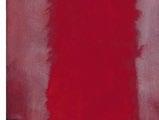

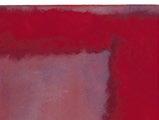
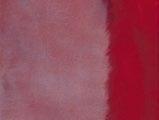





is set into commotion by the beautiful, in the belief in beauty as a potential transformer of our relation with reality. “Beauty is not in fashion, but I’ve never been in the trendy group,” says the artist.15 Soledad Sevilla expresses liminal experiences in the face of the disquieting, the mysterious, and the impossible, sensations that arouse an emotion that enmeshes reason because it is difficult to define, disentangle, and explain with words or concepts. An instant that brings us close to a revealed truth, to the threshold, to the knowledge of something indescribable that slips swiftly through our fingers, caught and lost again in a second.16 She has related it on occasions to another aesthetic category, that of the sublime.17 Only poetic discourse is able to caress it, an inapprehensibility that has been analyzed from Kant to Romantic philosophy and poetry: “Man is a god when he dreams, a beggar when he thinks, and when inspiration is gone, he is left standing there like a worthless son whose father has driven out of the house,” says Hölderlin.18 This line of thought returns with Henri Bergson’s argument that there is knowledge that reason cannot attain, yet which poetic intuition can brush up against.19 For Bergson, indeed, intuition can only be expressed in images, never in concepts.20
The result of a process that starts from the sketch on paper, the artist’s final works are of a very large size. This makes the viewer feel enveloped by the painting, causing the body as well as the gaze to participate performatively in the work whose space it shares.21 Sevilla has defended the importance of the large format in her work on countless occasions. Although the dimensions of her work call
22
Writings on Art, 74.
23 Soledad Sevilla met Sempere in the Grupo 15, a graphic art workshop managed by María Corral, when she arrived in Madrid as a recently married woman of twenty-three. “I was struck by the way María Corral introduced us. She told Eusebio she was going to introduce him to an artist he was going to be very interested to meet. I thought at that moment that it was me who would be interested in meeting Sempere. From then on we became very good friends, and he often came to dinner at my home on Calle Ángel Muñoz, where my children, Adrián and Gala, spent their first years and grew up. Moreover, our relations grew closer at the Centro de Cálculo (Computing Center).” Soledad Sevilla, interview, January 27, 2024.
24
“I met Yturralde at the Escuela de San Carlos in Valencia. He was walking through the courtyard of the school with Fuster, dragging his feet. There I started to have dealings with him and to love him. With him, I took part in Antes del Arte and in a project at the Galería Eurocasa that was directed by Tola de Orueta. We saw each other in Madrid at the Centro de Cálculo. And so on until today. But it was a difficult time when it came to producing art. I had two children—my husband had none, of course—and I had to do the shopping, cook, teach at a high school, and paint. I don’t have very good memories of that period. I was rushing about all day. And few colleagues appreciated me. Most of them saw me as a housewife and mother. And if you’re not appreciated, of course, you don’t appreciate yourself.” Sevilla, interview, January 27, 2024.
25
The Centro de Cálculo at the Universidad de Madrid (now the Universidad Complutense) was crucial for Soledad Sevilla. Besides the works she was able to produce within the framework of its workshops, laboratories, and exhibitions, she had the stimulus of meeting other artists of her generation, and some who were rather older, who took their personal and creative experiences to the university setting. Paula Barreiro analyzes the artist’s production in the national and international artistic context of the 1960s and 1970s in the essay she has written for this catalogue.
for a suspension of the instant, they are never so overwhelming that they prevent the viewer from apprehending what surrounds the subject. They are human. In this respect, she follows Rothko:
I paint very large pictures [. . .] precisely because I want to be intimate and human. To paint a small picture is to place yourself outside your experience, to look upon an experience as a stereopticon view or with a reducing glass. However you paint the larger picture, you are in it. It isn’t something you command.22
Soledad Sevilla shares this productive drift from the sensitive and emotional with an artist from an earlier generation, Eusebio Sempere.23 Her affinity with him is appreciable throughout her career, from the beginnings, in three undisplayed 1967 gouaches, to her most recent work, like the series painted from the summer of 2022 onward inspired by and as a tribute to her friend. Like Sempere— but also like Rothko, with another language and poetic discourse— Sevilla finds in light and line the friction that nestles in the limits of color. She also has notable points in common, notwithstanding evident differences, with the work of José María Yturralde, intimately bound to geometric art in the 1960s and 1970s.24 With Sempere and Yturralde, as Paula Barreiro relates in her study, Sevilla took part in Antes del Arte and, from 1969 on, in the sessions at the Centro de Cálculo (Computing Center), philo-scientific and philotechnological artistic programs that were the nemesis of the unfettered self-expression that drove informalism.25 In her personal

















































Mediating between Emotion and Judgment:
26 Rosalind E. Krauss, “Grids,” in The Originality of the Avant-Garde and Other Modernist Myths (Cambridge, MA: MIT Press, 1986), 9.
27 Methacrylate had been used since the 1930s in the three-dimensional work of certain artists of the historic avant-garde, such as László Moholy-Nagy.
28 Soledad Sevilla, interview, Madrid, October 29, 2011. I conducted this interview within the framework of the 2011–2012 Research Residence at the Museo Reina Sofía.
development, however, Sevilla gradually dissolved geometry in light and emptiness, a path also explored in different ways by Yturralde. She opened this door with Belmont [pp. 74, 75] and continued with her installations and paintings of the 1980s and 1990s. From 1990 onward, Yturralde painted atmospheric, silent, and somewhat mystical pictures that appear to filter the viewer’s gaze through a veil. Emotion and geometry also intersect in the work of Canadian painter Agnes Martin (Tremolo, 1962), to whom Soledad Sevilla dedicated a number of pieces in 2023 in a circuit that led her from Sempere to Martin and back to Sempere again. For these painters, it is crucial both to know the work of their colleagues and to allow themselves to be traversed by the real.
The production of these artists has been visited in one way or another by the grid. In the first decades of the twentieth century, Rosalind Krauss theorized that the grid “announces, among other things, modern art’s will to silence, its hostility to literature, to narrative, to discourse.”26 Overcoming the Horatian Ut pictura poesis, painting thus vindicated itself as an autonomous language beyond representation. In Soledad Sevilla, the grid leads to the veil, a procedure she uses paradoxically. Although her first steps were based on the language of the avant-gardes, her creative process shifted her toward referents outside painting, though she was always to return to it. The module, the line, and the grid, elements from geometry, enabled her to take the first steps toward causing painting, and its viewers, to vibrate and boldly expressing the emotions aroused by light and darkness, two of the opposites she has most frequently
explored (since without silence, there is no tolling of the bell). Sixty years later, these questions continue to engage the artist. Her first approach to liminality and the inapprehensible is found in the possibilities offered by light in filtering through the translucent surface of colored methacrylate [pp. 28, 29]. With the reliefs of modules, which coincided with the sessions at the Centro de Cálculo, Sevilla made her first and still somewhat timid incursion into threedimensionality. Francisco Sobrino, Eusebio Sempere, and José Luis Alexanco also experimented with this industrial material under the influence of minimalism, as did pop artists like Ángela García Codoñer and Darío Villalba.27 Methacrylate implied distance and depersonalization, aspects of a discourse that the objective and geometric artists shared with pop through its neutralizing of subjectivity. The IBM computer enumerated the permutational possibilities of a repeated module that interacted with others of the same kind: it superimposed, translated, inverted, and set them in opposition to one another. Soledad Sevilla was not naive about the results offered by this enormous contraption, which she has ironically described as “a very stupid paintbrush.”28 Since those first experiments, indeed, she has been a staunch defender of manual creative processes. In these methacrylate works, curiously seldom studied, one already finds the germ of the grid, the veil, and the transparency, which she took to their limit by installing them in devices that allowed them to be presented freestanding. Her work of the 1960s and 1970s contains the potential of symmetry, superimposition, displacement, vibration, use of light, and idea of infinity that understands
29 These methacrylate pieces, of which good selections are held by both the Museo Reina Sofía and the Centro Andaluz de Arte Contemporáneo, are paralleled by numerous gouaches, graphic works, and even a pair of silkscreen fabrics that Sevilla made for her friend María Mercedes Esteve, a print designer for a textile firm. It was her only incursion into design, a common practice among the geometric abstract artists both of her own generation and, above all, of the previous one of the early 1960s.
the set as a whole on the basis of a repeated unit. Nevertheless, in transferring these reflections to gouache, she was returned to the foreground, to the flatness (the concept coined by Clement Greenberg) of modernism. The choice of materials implies language, for materials also speak. This was an initial round trip that was to accompany her throughout her life: translating three-dimensional works to two-dimensionality and vice versa. Sometimes the two dimensions give her illuminating clues for taking a new pictorial step: particularly lucid is the step from her Alhambras to Fons et Origo (1987) or Toda la torre (All the Tower, 1990). On other occasions, the reverse happens. After Mayo 1904–1992 [p. 97], her 1992 project at the Vélez-Blanco Castle, she replaces the line with the atmosphere of loose brushwork.
The methacrylate modules generated some almost inapprehensible lines at their intersections that nuanced the light and became even more tenuous in subsequent pieces, helping her to simplify and “minimalize” her reflections on the plane.29 She purges, cleans, and relinquishes color by working in transparent methacrylate, and carries out trials with parchment paper, acetates, and metallized paper (the idea of the mirror returns here once more), which she superimposes with the aid of electrographic printing.
She also empties out the module and thickens the line that outlined it, erases the different transparencies and opacities, and moreover signals the superimposition, the displacement, or the inverted use of the same mesh that, like an echo, is presented in different colors, appearing like a shadow that generates depth and
denies Greenbergian flatness without having to resort to representation. The artist perceives that painting in its specificity is not only two-dimensional but can also permit three-dimensionality to be intuited. With Mondrian (1973) [p. 40], one of the few pictures of those years to bear a title, she betrays the Dutch artist’s militant flatness, a spatial concept that was to retain her attention for a time and that she transferred in 1975 to three canvases of nearly two and a half meters each [pp. 41, 43]. The modules, in the form of a pentagon or hexagon, are superimposed until these geometrical figures become unrecognizable.
In 1977, she produced a long series of drawings in which the grid organizes the two-dimensional space. On the grid, or through it, the line is developed ad infinitum. The idea of the line that generates webs leads the artist in her permutational development to experiment with the possibilities of symmetry, of the negative, and of its intersection, to the point where the grid is so tangled that it is no longer recognizable. The squared pattern immediately surpasses the phase of the material support to become form in itself (the limit of the stretcher is only physical, not conceptual), which she transfers to the large format in some light, white works of 1978 and 1979 that were exhibited in Alicante in 1979 [pp. 52-55]. They are the basis for her report “Perceptive Analysis and Development of a Biomorphic Network Composed of Two Squares: Fibonacci Proportions,” with which she obtained a grant from the Fundación Juan March [pp. 60, 61]. She closed the series with a 1980 painting that enlarges the linear module until it occupies the whole surface of the canvas [p. 59]. The web or grid, which at first
30 Soledad Sevilla, interview, January 27, 2024.
31 Sevilla, interview, January 27, 2024
32 In February 2024, Soledad Sevilla visited the anthological exhibition on Rothko at the Fondation Louis Vuitton in Paris, a trip that affected her both emotionally and artistically.
33 The artist visited this show with Yturralde and their respective partners; it so happened that Rothko had committed suicide that very day.
34 Soledad Sevilla, “Permutaciones y variaciones de una trama. Análisis perceptivo,” copy of the statement sent to the US-Spanish Joint Committee, 1979. Archivo Soledad Sevilla, Otura, Granada.
35 For example, Denise René did not agree to support a possible exhibition of geometric artists in Spain because the limits with the informalist languages were not clearly defined among the potential participants. See Paula Barreiro López, “Sempere, electricista y carpintero. Un artista en red por los territorios de la abstracción del Estado español,” in Eusebio Sempere, exh. cat. (Madrid: Museo Reina Sofía, 2018), 129.
organized the space upon which to develop the form, passes into the foreground to be analyzed as form in itself. With this project, Sevilla competed for a research scholarship from the US-Spanish Joint Committee to study at Harvard University, where she lived from 1980 to 1982 with her partner at that time, the architect José Miguel de Prada Poole, and her two children, Gala and Adrián, in a small house on Trapelo Road in the Belmont neighborhood of Boston. There are matters normally regarded as secondary that come to the fore in the case of women artists, and those related to their private lives and the upbringing of children materialize in conditions of production that have to be read in terms of gender. “We were grant holders, and everything was very tight.”30 Soledad Sevilla had no studio, so continuing with the large formats she had worked on in Spain was impracticable. She worked with a roll of brown Kraft paper on her bedroom table, actually a door laid across two sawhorses. “I would stretch out the paper and roll it up again when the drawings were done. Most of the drawings were lost because of the untidiness that came from living in another country, in a house that wasn’t mine, and having no studio, but also because I didn’t attach value to my work. My mother, who was an iconoclast, had thrown out nearly all the work I’d done at school. From her I learned a certain detachment from things.”31 Her experience with continuous rolls of printer paper influenced her habit of drawing along the length of the paper, which was comfortable and easy to store. It also opened the door for the public to follow her production process, as legible as a musical score . . . or as East Asian calligraphy [pp. 64-65]
During the 1980s, her knowledge of the paintings of Rothko, which she frequently went to see in museums during her stay in the United States, played an important role in her work.32 Her first contact with the work of the US artist of Latvian origin took place in 1970 at the anthological exhibition held parallel to the Biennale at the Galleria Internazionale d’Arte Moderna Ca’ Pesaro in Venice.33 The question is why a geometric painter should have been drawn to an abstract expressionist. On the one hand, in the statement for her scholarship application she already references the fusion between the sensual and the rational that was to traverse her work years later:
With the reiterative use of the line, I try to create a magic, mobile, and enveloping atmosphere, full of light and shade, which will largely be a fictional space, since the geometric abstraction in which I am submerged has a markedly paradoxical character, as while on the one hand it asserts itself as a whole of mental creation, on the other it represents an abandonment to a sumptuary goal, subjected to purely sensual values.34
In addition, however, I think it is important to understand how the political specificity of Spain under a dictatorship had marked the artistic scene of the 1960s and 1970s. While the geometric artists of neighboring countries presented an alternative for putting an end to informalism, Spain faced other urgent questions, and in this respect experienced a décalage 35 The use of abstract languages went further than formal or visual investigation, becoming a banner of modernity that challenged the Francoist regime’s conservative
36 Art remained a bastion of nonconformity. Spanish artists, both men and women, who followed tendencies that were irreconcilable elsewhere enjoyed excellent relationships in Spain (they exhibited together internationally thanks to actions led and controlled by the Francoist regime) or even lived together (let us recall the colony of artists that resulted in the Museo de Arte Abstracto Español in Cuenca). Francoism purloined the ideological dissidence that emanated from these avant-garde practices, appropriating them and partially annulling them through a policy of international exhibitions that turned Spanish informalism into a kind of “Spain brand.”
37 “All things done with straight lines are not dead,” Rothko asserted. See “Notes from an Interview by William Seitz, January 22, 1952,” in Rothko, Writings on Art, 75.
38 Rothko, Writings on Art, 44.
39 See Soledad Sevilla, “¿Qué espero de un cuadro?,” in Enfoques 2007. Soledad Sevilla (Madrid: Fundación Amigos del Museo del Prado, 2007).
40 Soledad Sevilla, “La creación se estimula con la mirada,” in Soledad Sevilla. Obra reciente (Madrid: Galería Soledad Lorenzo, 2008), 5.
41
See the work Mirror Way by Mary Miss at http://marymiss.com/projects/mirror-way/.
42 The application is dated June 1982. Letter reproduced in Marina Mayoral and Santiago B. Olmo, Soledad Sevilla. Instalaciones (Granada: Diputación provincial de Granada, 1996), 25. In a telephone conversation on September 15, 2017, the artist confirmed that the work was first conceived in 1980.
43 She was referring to the colored sand drawings of the Navajo people of the southwestern United States.
obsession with the past, particularly in its first two decades.36 With the so-called return to painting of the late 1970s, moreover, any linguistic resource was admissible in the production of visual discourse. The walls had been torn down. Added to this substratum was Sevilla’s fascination with the mystery of beauty, and her dialogue with Rothko, also a pivotal artist, therefore seems natural. Rothko had transferred his investigations of light and color fields to a use of space that envelops the viewer until it generates sensations of emotional suspension. The gesture, the great ally of his generation, thus becomes an instrument that can be relinquished as it is unnecessary.37 Rothko thought the emotions his works unleashed in viewers were a translation of those he had felt himself when painting them, or when listening to Mozart’s Don Giovanni. In a discourse with Heideggerian echoes, he believed that in this way he was “enlarging the extent of this reality.”38 Soledad Sevilla’s “shakes” are brought on in a similar fashion: while walking through the Court of the Lions at the Alhambra at dusk, while visiting the Museo del Prado (Velázquez’s Las Meninas, Rubens’s Apostles, Guido Reni’s Atalanta and Hippomenes, and many other paintings), or while contemplating the vegetation hanging from a stone wall, some ruins in Syria, a tuna net on the sands of Huelva, the landscape seen through agricultural plastic sheets, or the timber of an old tobacco-drying shed on the plain of the Vega de Granada.39 “The sources are not sought out, they nearly always present themselves imperatively.”40 Sevilla tries to jettison the apprehensible to capture all that surrounds her, the air . . . or what retains it, the memory. Aspects that are translated into images.
She took the step toward occupying space in order to achieve a more complete multisensorial experience in the 1980s. Sevilla was impressed by Mirror Way (1980), the intervention by Mary Miss in the neoclassical cloister of the Fogg Museum at Harvard University. Mirror Way consisted of a wooden structure with steps and seating with which the artist invited visitors to climb the three floors of the covered courtyard. However, it turned out to be an impossible space, as the steps ended in closed walls that prevented climbers from continuing. The highest parts of the structure were inaccessible.41 Miss’s intervention encouraged Sevilla to present Seven Days of Solitude (1980–1982) for the same cloister. This work, whose title played with the English translation of her first name, was her first project with performative connotations and her step forward toward an expanded painting.42 Sevilla wanted to draw diagonal chalk lines on the ground so that the public who attended concerts there on Sundays would inadvertently rub them out with the disorderly movement of their feet, erasing their rigorous geometry. I find it suggestive that such a scrupulous geometrician as she was should have demanded the destruction of her lines by chance gesture. I almost interpret it as a therapeutic and liberating change of course. Moreover, it was the first time she worked with the cultural specificity of place or memory, subjects she developed in depth during the 1980s and 1990s. In the letter she sent to Seymour Slive, then the director of the museum, she compares her lines to “the sand painting of your Indians.”43 The museum rejected the proposal, which the artist presented again years later in Málaga
Mediating between Emotion and Judgment:
44 Power, “Una conversación,” 96. 45 María Jesús Folch and Isabel Tejeda, “Dictadura y transición,” in María Jesús Folch and Isabel Tejeda (dir.), A Contratiempo. Medio siglo de artistas valencianas (1929–1980) (Valencia: IVAM, 2018), 81–210.
46 Rosa Queralt and Mar Villaespesa, “Memoria. Soledad Sevilla 1975–1995,” in Memoria. Soledad Sevilla. 1975–1995, exh. cat. (Madrid: Ministerio de Cultura, 1995), 27.


in another format (without the erasure of the lines) under the title Estratos (Strata, 1985). Once again, the project went unrealized. On the building fronts and lawns of the university campus, she spread out the long geometrical patterns she had drawn in her bedroom. Some of the papers were twelve meters long. MIT Line (1980) was not her first installation, as Kevin Power claimed,44 pushing Soledad Sevilla’s three-dimensional production back by a few years (as I argued in 2018).45 It is true that those long rolls of paper, exhibited on only a few occasions, demand that the public provide physical and temporal “accompaniment” for Sevilla’s intellectual and productive process in the development of the line, but she unrolled them in Boston with no public or artistic intention in mind: at home, quite simply, she could not see the result at its full length. This performativity of the audience is found, on the other hand, in Seven Days of Solitude, her incursion into conceptual art, process, and participation. As Mar Villaespesa suggested, the artist moved away from the orthodox artistic presuppositions she had started out from a decade earlier.46 After this fruitless attempt, she returned to painting. For a time. In 1982, while still in Boston, her series Keiko [pp. 62, 63] and Stella were followed by the luminous and evanescent works on paper of Belmont, the name of the district where she lived. She drew the three series with school wax crayons, producing light and slightly powdery lines that could not be blended like pastel. The hardness of the material permitted the individualization of an extremely fine line whose proximity to others called forth that sense of vibration so characteristic of Soledad Sevilla’s painting. From geometric abstraction, she
47 Yolanda Romero, “Notas a las variaciones de Soledad Sevilla,” in Juan Bosco DíazUrmeneta Muñoz, Esperanza Guillén, and Yolanda Romero, exh. cat., Soledad Sevilla. Variaciones de una línea, 1966–1986 (Granada: Centro José Guerrero, 2015), 15–19.
48 At Harvard, she attended courses taught by Oleg Grabar, a historian of the art and architecture of the Islamic world, who placed special emphasis on the analysis of the Alhambra.
49 Soledad Sevilla, interview, October 29, 2011
50 José María Iglesias, “Las Meninas, de Soledad Sevilla,” in Soledad Sevilla. Meninas (Granada: Centro Cultural Manuel de Falla, 1985), 4.
moved on to a use of the line and the grid that generates atmospheres and space where the physical and the metaphysical appear to fuse. The geometry is gradually dissolved in color and light, producing a grid that makes the interior impracticable. The gaze bounces off and is retained at the threshold without managing to penetrate to the other side. There seems to be a glimpse of a bridge, but it is instantly dissolved in that liminal surface of the painting.
As Yolanda Romero has shown, those wax crayons were the prelude to the atmospheric results of her Meninas (1981–1983) [pp. 76-83];47 to what to my mind is her most hallowed series, the Alhambras (1984–1986) [pp. 84-95];48 and to the Muletas (Capes, 1989–1990). This signified a return to her cultural origins, which she interpreted years later as a reaction to the artistic formats then in fashion in the United States, such as video. In these works, memory comes into play. It was not to be the last time.
I was doing some courses at Harvard University on the conservation and restoration of artworks, and there was a team that gave a lecture on a study they had carried out on Las Meninas in the Prado. They projected the X-rays and made it clear that the conservation at the museum was disastrous: they kept the windows open next to a work that was a collection highlight. Thrilled, I saw things in the Xrays that Velázquez had done and erased afterward. I then decided I would do the series of Las Meninas, because I wasn’t conceptually interested in the art that was being produced there. I saw myself as so far removed from it all that what I did was to retrieve or acquire an understanding of my roots, which were these, for better or worse.49
Mediating between Emotion and Judgment:
51 Literature, both prose and poetry, has been a source of images for Soledad Sevilla. This includes the Nasrid poems, Federico García Lorca—Con una vara de mimbre (1998) takes its title from the line “con una vara de mimbre, va a Sevilla a ver los toros” (with a willow switch, he goes to Seville to see the bullfight) from Romancero gitano (1928)—and Fernando Pessoa—Los días con Pessoa (2021) is based on O livro do desassossego (1982), a text she considers fundamental for self-knowledge.
I n Meninas , she started from the structure and the atmosphere with which Velázquez imbu ed his painting of the same name. She turned the immaterial into something physical, and the intangible and sensitive into form and image. The atmosphere is understood as an impression, a liminality that becomes unstable, fluid, and inapprehensible in the superimposition of the webs. The pieces are crossed by force lines that structure the space and are riddled with planes of grids that meet at certain points, becoming slightly caught up with each other and giving rise to a shimmering effect at the edges because, as José María Iglesias would say, the sides of these webs have an unwoven appearance.50 Through its superimpositions, the grid serving as a base constructs a place in itself, enlarging reality. Flatness, central to modernism and to all kinds of abstraction in the 1940s and 1950s, ceases to be relevant for Soledad Sevilla. After this series, geometrical theory and canons carry less and less weight. Only painting matters to her.
In her Alhambras, she painted the air that surrounds the architecture with intersecting grids that generate depth through their reiteration. The paradox is that she approached a certain figuration in her painting of emptiness, although her interest is by no means rhetorical but pictorial. We thus appreciate the darkness of a gate or the verticality of the columns transmuted into a line in the Golden Room, the Comares Hall, or the Court of the Lions. Also, for the first time, she uses poems to title her works, in this case those inscribed in the plasterwork of the Nasrid monument.51
52 Mariano Navarro, “Desde mi burladero. Entrevista a Soledad Sevilla,” in Soledad Sevilla (Madrid: Galería Soledad Lorenzo, 1991), 9.
53 Soledad Sevilla, untitled, in Soledad Sevilla 2000–2005 (Barcelona: CEGE, 2005), 9.
54 The title comes from a poem by Eugénio de Andrade in As palavras interditas (1951).
At heart, the subject gives me the tension I need to remain at a halfway point, and moreover in an ambiguous position, between an abstraction that disdains its own system and a figuration that flees from the direct image and even from the metaphorical reference.52
The display of these two series takes on the characteristics of an installation. In the exhibition, an attempt has been made to bring together her most outstanding pieces (excluding her secondary works and sketches), which are hung very low and close together in the case of Meninas, and in pairs—night versus day—in that of Alhambras. There is a linguistic question that must be stressed: Soledad Sevilla works in series because she considers that the problem is not resolved in a single image. She needs several images that accompany one another and maintain a dialogue. This theatricalization of the way her works are displayed proves fundamental for mural paintings that the viewer has to move along, like Apamea (1999) and Insomnio de paz y de conflicto (Insomnia of Peace and of Conflict, 2002) [pp. 145-149]
Painting understood from the viewpoint of the installation facilitates the leap toward three-dimensionality, another way of translating the poetic “shakes” of fleeting sensitive experiences with a refined sense of drama: the sensation she felt in a park in Seville, for example, was the origin of El poder de la tarde (1984) [p. 131]. Years later, the artist expressed the emotion felt in the presence of rain, water, the fluttering of a butterfly, or the breeze blowing against a thick wall of vegetation. Underlying all these examples is a fascination with the perishable and the transitory, that which neither pauses nor can be caught:
55
Textile production, traditionally a female occupation, was obligatory training for young Spanish women during Franco’s regime under the supervision of the Sección Femenina of the Falange. Women artists born in the 1930s, 1940s, and 1950s had mixed feelings about textiles. In some cases, they rejected them outright, not so much because of the technique itself as because of the way it was instrumentalized by the Francoist regime and as a reaction to the pejorative attitude toward everything classed as feminine.
“The ephemeral as object of artistic reflection . . . Increasingly, nothing exists if it does not have the confirmation of existence bestowed upon it by the image.”53
Two years later, Sevilla produced Leche y sangre, an installation she had first conceived in 1981. She covered the perimeter of the same gallery with red carnations in parallel vertical rows as a poetic denunciation of artistic fashions. This work set the pattern for her installations of threads, which began with Fons et Origo (devised concomitantly with the Alhambras). In this piece, the mesh is reflected in a pool of water, generating a circular space that contains within it the surrounding world. A rhythmically falling drop makes the reflection tremble, so that the gaze rebounds and is unable to progress further. This echo culminated in the direct use of the mirror to spark the idea of infinity and experience at the limits in Casa para la conciencia (House for Conscience, 2000). For the Museo Reina Sofía, running parallel to her Horizontes series, she has created a new installation of threads, Donde estaba la línea (Where the Line Was, 2024) [pp. 180-183], 54 woven with horizontal skeins of colored thread lit by the large neoclassical windows of the Sabatini Building. Behind the choice of material for these installations is an underlying gender reading. The cotton threads with which Soledad Sevilla constructed her great wefts were bought in notions stores, not in shops selling fine arts materials. It is not a matter of chance that textiles have been culturally linked in our recent past to the manual production of objects by women.55 Such a use of materials is close to the differential context in which we have been culturally formed, and it


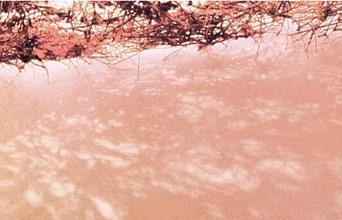


provides a notable and economical formula for passing from the grid to the contingent space. I link this weaving of the air with the work of the Catalan artist Aurèlia Muñoz (Estel ancorat, 1974) or the Brazilian Lygia Pape (Ttéia, 1991), who, like Sevilla, use copper wire in some of their pieces.
In 1992, she implemented Mayo 1904–1992 at the Vélez Blanco Castle within the framework of Mar Villaespesa’s Plus Ultra project. This is Soledad Sevilla’s most “minimalizing” piece as it restricts itself to the use of light as a metaphor for memory. She created an intervention in the courtyard of the castle, whose Renaissance cloister was traumatically ripped out in 1904 and sold off piece by piece—it is currently exhibited at the Metropolitan Museum of Art in New York. Mayo 1904–1992 retrieves the image of the castle by projecting it at nightfall upon a bare ruin whose wounds, with no empathy whatsoever, have been left open (the artist worked years later on the disinherited beauty of dereliction, as in El Rompido and Arquitecturas agrícolas [Agricultural Architectures] [pp. 150-151], which Antonio Cayuelas analyzes in this publication). The image faded away at dawn. Night and day are presented in Almería as a continuum, and the work is the passage of time itself. History and the contingent time of the viewer are fused in a progression from the death of the day that flows toward darkness. The threshold materializes, but once more, lacking limits, it is inapprehensible. With its slow appearance, the phantom of the cloister forms a metaphor for a fitful sleep in which the body succumbs but reality is still guarded and cared for. The fitful sleeper is both there and not there, feeding off productive moments punctu-
ated by illuminations that are not altogether conscious. At the same time, Sevilla made a series of paintings that meant another change of course in her career. In them, the line is replaced by an atmospheric painting, a transition seen most clearly in Atropellar la razón (Riding Roughshod over Reason, 1991) [p. 133]. Once more, personal factors are fundamental for explaining her production processes and the language of her work:
There are two changes in my work—I don’t know if they’re changes of direction, but they are changes of language—caused by health problems. I stopped doing grids because in the large pictures, every line required three passes on the verticals running from top to bottom, as they were more than two meters high (I used a skirting board to do them because I didn’t have such a long ruler). I developed a pain in my knees, and I looked for a language that would adjust to my body, not the other way around. This coincides with my first atmospheric pictures. When I was at work on the Vélez Blanco series, I had a colostomy. In the studio, I had to remain seated and was unable to perform energetic gestures, so I tried out oil because it worked more slowly, whereas acrylic dried too fast. I thought that if I couldn’t move, the picture had to move instead. In this way, I developed this minute brushwork that by accumulation made the unit disappear in a whole.56
En ruinas II (In Ruins II, 1993) [pp. 98-99] once more necessitated the adjustment of her artistic language to her restricted mobility in the studio. She returned to the line, but this time in the form of gesture, tiny brushstrokes like organic fillers that became a repeated and characteristic





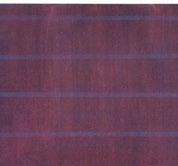









linguistic element in her series created during the late 1990s—Soñé con una planta (I Dreamed of a Plant, 1997), Veinte años más tarde (Twenty Years Later, 1999), and Apamea (1999). At the same time, she used a brushstroke in the form of a leaf in her Insomnios (2002–2003), nocturnal walls of vegetation in whites, blacks, reds, and grays, colors she uses with a sense that is not naturalistic but metaphysical and transcendent. With these two gestures, she distributed the material over the canvas with spaces that range from being covered by the material to the underlying support being empty. In the zones full of material, in the foreground, the block of leaves forms a single unit and once more marks the threshold, the transition from light to darkness, since it is paradoxically at night that everything is seen more clearly. In the Insomnios on paper, gaps appear that open onto an emptiness that is really nothingness—specifically, the background that is left untouched.
[I]n that series I work indistinctly with those two different gestures. If I had been younger, I would no doubt have eliminated one and kept the other for reasons of coherence, of style, of all those values that seemed important to me. However, now I keep both ways of proceeding because I think: “Well, with one brushstroke I’ll express some things, and with the other I’ll express others.”57
That need to be situated on the limit makes it possible to be, to reinvent oneself ceaselessly, to extend reality. First the module, then the line, now the brushstroke . . . although they are visually different, they partake in the same poetics and use identical resources: the

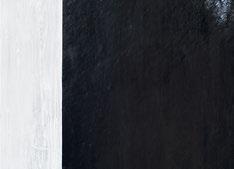

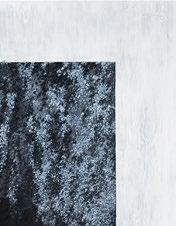

58 The artist has always lived in cities: Valencia, Barcelona, Madrid, Boston, and Granada. An important change is that her current studio, where she spends most of her time, is in a rural area near Granada, on the outskirts of the municipality of Otura. Antonio Cayuelas, the architect of her studio, gives an account of the importance this space holds for the artist in his essay in this publication.
59 Soledad Sevilla, untitled, in Rutas del desasosiego. Soledad Sevilla, (Lisbon: Passevitte, 2017), n.p.
painting dies materially at the limits fixed by the stretcher, but that element reiterated as a unit continues potentially in successive layers that, when superimposed, point to the idea of the infinite.
In the years that followed, Soledad Sevilla, who until recently was fundamentally an urbanite, located the origin of her drives in landscape and vegetation: El Rompido (2000), Malezas (2003), Malevich en el Rompido (Malevich in El Rompido, 2004) [p. 134], Te llamaré hoja (2005), Sonata (2010) [p. 135] 58 These images materialize her new “shakes” with the metaphorical possibilities of art. El tiempo vuela (1998) is a vanitas in which the second hand constantly moves the butterfly over a line of verse by Antonio Machado: “y es hoy aquel mañana de ayer” (and today is that tomorrow of yesterday); it returns it again and again to the same position in a notional approach to circular time. It is not the first work with indirect references to the finality of death: they were also found in Leche y sangre. These pieces on landscape interlock with Sevilla’s exploration of the great artistic masters, particularly Rubens and his Apostles Apóstoles mayores (Major Apostles, 2007), Apóstoles menores (Minor Apostles, 2006–2007)—and Fernando Pessoa— Rutas del desasosiego (2017)—with whom walking through Lisbon becomes the experience that generates her sculptures.
The path is suppressed once it is walked, but highlighting its absence will make it more present than ever. From the idea to the experience, from reflection to reflex, from mental superimposition to physical superimposition, from presence to absence, from the exterior to the




























Mediating between Emotion and Judgment:
60 Sevilla, “Luces de invierno,” 7.
61 Sevilla, “Luces de invierno,” 4.
62 Walter Benjamin, Berliner Kindheit um Neunzehnhundert (Frankfurt: Suhrkamp Verlag, 1950).
63 Paul Valéry, “Le cimetière marin” (1920), in Œuvres de Paul Valéry (Paris: Éditions de la N.R.F., 1933), 157–63.
interior, all are transitions or opposites that touch . . .59
In Nuevas lejanías (2016) and Luces de invierno (Winter Lights, 2018), she worked once more with the veil. She painted the diffuse landscapes that are seen through the protective plastic sheets of the tobacco-drying sheds on the plain of the Vega de Granada. Like a poor version of lattice shutters, these sheets filter the light, sway in the wind, and reveal the other side when the light shines through them, nearly always at dawn, with the uncertainty proper to them, as María Zambrano would have said. Once again, she changes her brushstroke. She makes small freehand parallel lines that create spatial blocks and color fields. These are not descriptive pieces but works that capture the ephemeral instant. Behind these synthetic fabrics, the artist projects herself on the landscape, referring to the works as contrapaisajes or “counterlandscapes.”60
I have called these works “winter lights,” not so much as an allusion to the atmosphere of that time of year but because they are a reflection on myself and the feelings and sensations aroused in my experience of the time that has passed. As Faulkner explains about the light in August that provides the title for his book, I observe, faced now with my personal winter, that nothing has changed: I wanted the same reasons, the mystery, the doubts, and the need to transform the everyday to have the echo of lasting moments, as if they did not originate in a particular time but came from the remote times of antiquity Works of art are the traces of a life, says Siri Hustvedt.61
This time, she takes a look back and revisits the artistic concerns
of her beginnings in her latest work, Esperando a Sempere (Waiting for Sempere), Horizontes (Horizons), and Horizontes blancos (White Horizons, 2022–2024), series accompanied by pieces that cite other artists like Agnes Martin and Gego.
Nevertheless, time also paints. Although Sevilla affirms that she has always painted the same picture, she was not the same artist at twenty-three or twenty-four as she is at eighty. With perseverance and curiosity, she questions Walter Benjamin’s assertion that the same thing cannot be learned twice.62 She rethinks herself and refeels herself without grief or nostalgia (owing to the spirit of the Spanish language, paradoxically, the concept of “feeling anew” is expressed through a term, resentir, with negative connotations linked to suffering, pain, displeasure, or revulsion), understanding time from a Heraclitean perspective: paradoxically, we are and are not the same. She thus returns to the epidermis of the canvas, to the line situated in the foreground, and to the work with the emptiness of the material support of her first geometric pieces. “La mer, la mer . . . toujours recommencée!” cries out Paul Valéry.63
In the midst of this process of revisitation, Soledad Sevilla encountered Sempere. These last series are born of a small gouache by the painter belonging to the artist’s personal collection and included in this exhibition as a tribute to its referent. In summer of 2023, Sevilla dismantled her studio in Madrid to move to the one the architect Antonio Cayuelas had designed for her in Otura. Having sent everything to Andalusia, all that remained with her in those last days of the blazing Madrid July was a table, a chair, a notebook, some col-
64 While she did freehand trials in her 1977 papers of the processes she would develop in her solo exhibition in Alicante, meaning they should be understood as sketches, in Horizontes blancos the vibration she draws in her artist’s book is purposely transferred to the canvas. Something similar occurs with Sempere’s line gouaches of the 1950s, pieces the artist did not decide to show until twenty years later. See Carmen Fernández Aparicio and Belén Díaz de Rábago, “Eusebio Sempere: movilidad, luz, poesía del espacio y del tiempo,” in Eusebio Sempere, 31.
65 Eugène Delacroix, El puente de la visión. Antología de los Diarios, ed. Guillermo Solana, trans. María Dolores Díaz Vaillagou (Madrid: Editorial Tecnos, 1987).
ored crayons, a pencil . . . and a small gouache by Sempere [p. 169]
When I visited her in August in Granada, her notebook contained the germs of the series Esperando a Sempere [pp. 171-178], Agnes Martin, Horizontes [pp. 160-165], and Horizontes blancos [pp. 166, 167]
In the first sketches that she showed me, she had ruled planes of thin pencil lines, very close together, with which she covered the paper from one end to the other. Afterward she made cutouts and employed a collage method to generate planes of vertical and horizontal lines that cut each other off upon intersecting [pp. 11-15]. Occasionally, she introduced yellow lines. The final series of pictures, 244 centimeters high, was made with a parallel straightedge. To create the picture, she would walk along it drawing the thousands of lines that made it up one by one. As before, when she was unable to reach, it was the picture, hung in different positions on the studio wall, that, out of necessity, was moved toward the painter’s body. From this series came the idea of ending this retrospective with a large mural of lines establishing a dialogue with the artist’s early works, especially the pieces from the 1970s and the wax crayon drawings from Boston. This project has been adapted to the final location of the exhibition. In 2024, she has finished Horizontes blancos. These follow the Horizontes, magnificent pictures that explore the kinetic possibilities of color on the basis of horizontal lines, sometimes metallized, which she paints on a black background with Posca markers, an acrylic with water-based ink. With Horizontes blancos, in a “minimalizing” fashion, she returns to pieces with white backgrounds and gray or blue lines. She marks the space with a few lines drawn with the par-
allel straightedge, sometimes crisscrossing and sometimes oblique, tracing a path that is well known and therefore safe to follow. The rest is indicated in pencil before she then goes over it freehand with the marker, with any chance trembling voluntarily retained. Like some of her 1977 sketches, the drawing transmits vibration by creating a sensation of a sensitive moiré open to small errors, impressions on the canvas of strength or weakness at the moment of execution, pentimenti, uncertainties, and even excess ink, which is not hidden but made to visibilize the hand at the instant of production.64 In this “refeeling,” the artist emphasizes her authorship and recalls her heterodoxy with regard to the theoretical discourse defended by the other geometric artists of her generation. I understand this as a practice that vindicates an enjoyment of painting in itself.
Soledad Sevilla, an artist who militated in geometric abstraction, in the concrete art that emerged at a moment of strong political significance in Spain, went from an objective reading to a subjective one related to the most profound intimacy. This is the key to an oeuvre that overflowed the limits of its immediate context in the 1960s and 1970s, but which also meant an alternative to the formulations of the triumphant new figuration of the following decade. It has shown poetic freedom in returning to aesthetic categories that have accompanied the history of art since the sixteenth century: the beautiful, the sublime, the inexpressible trepidation of emotion. In the interstices, in the encounter between two elements of the composition, between two colors in two lines, is where vibration is found, that punctum, which functions as a bridge for vision, the mysterious hinge between the painting and
Mediating between Emotion and Judgment:




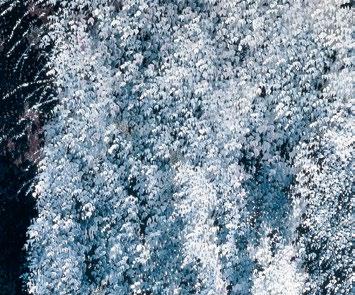


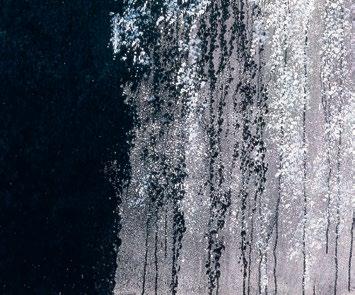




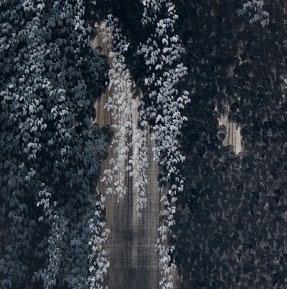
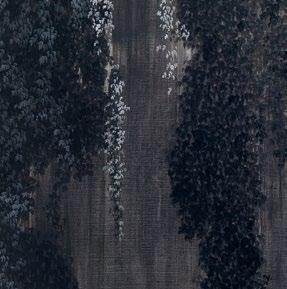






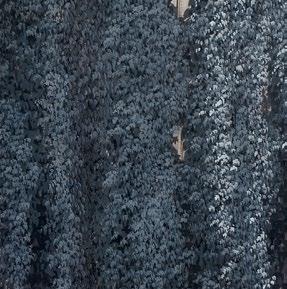

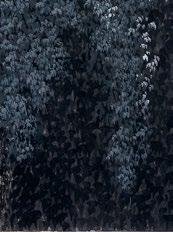
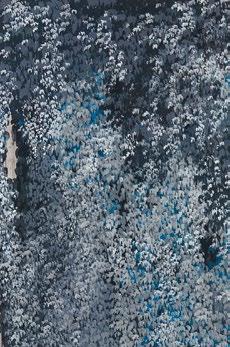












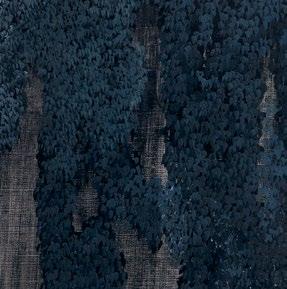


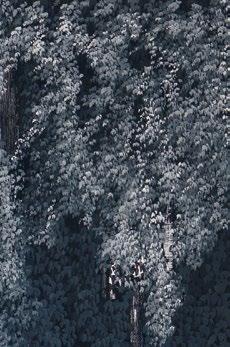







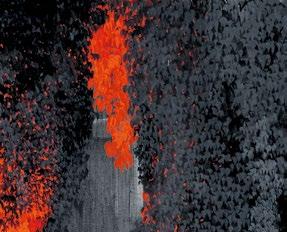

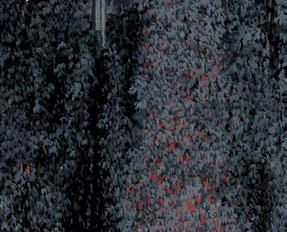




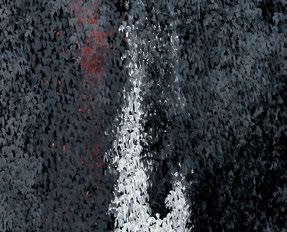
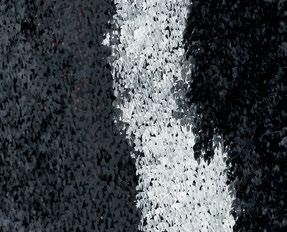


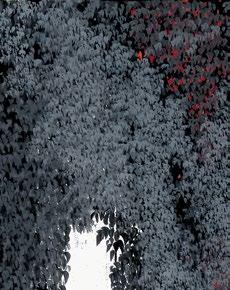
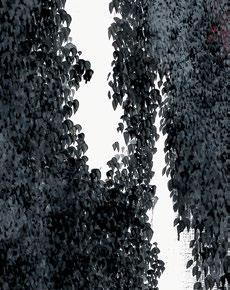









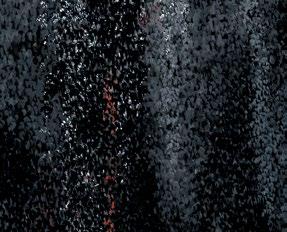

















































































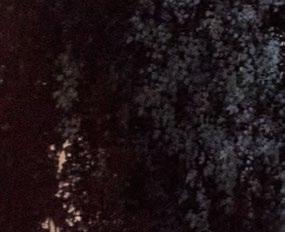



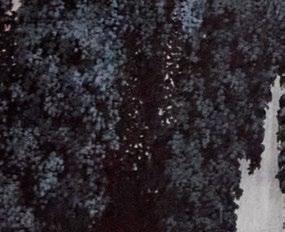

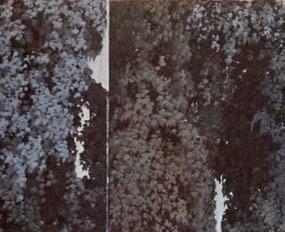




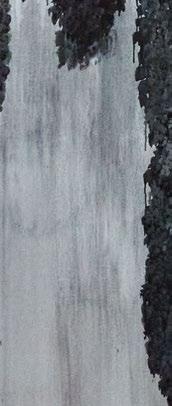





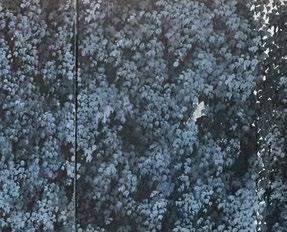







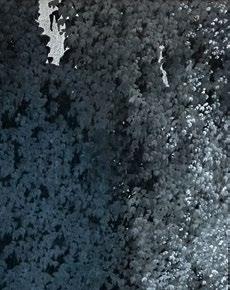


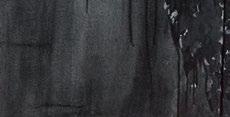

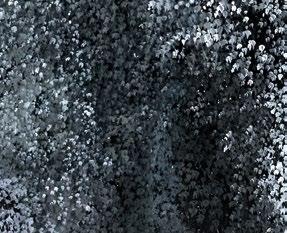


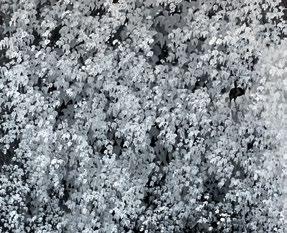

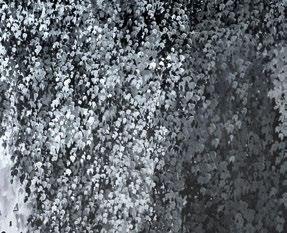

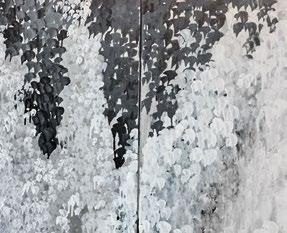

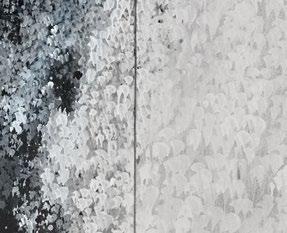
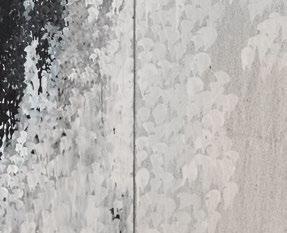





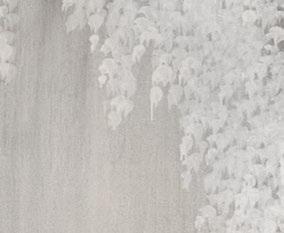






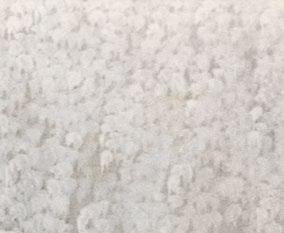

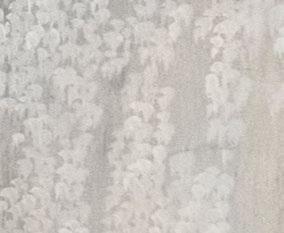




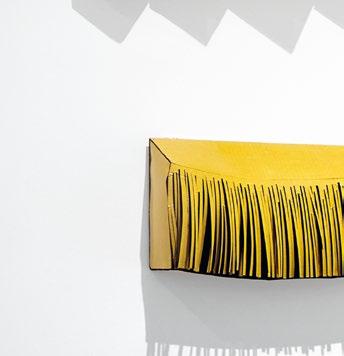
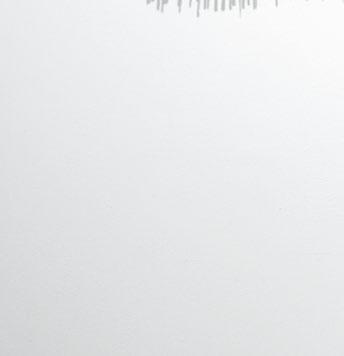
















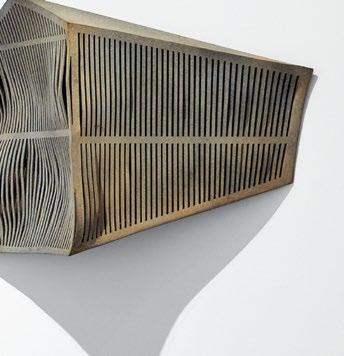
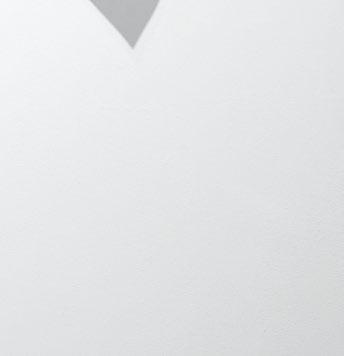



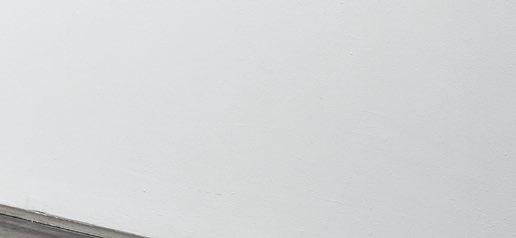



















































































































































































































































































































































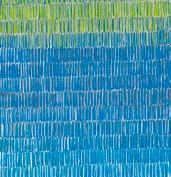

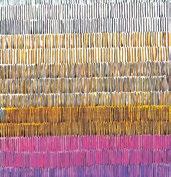


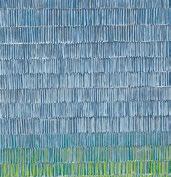



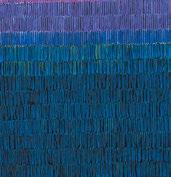










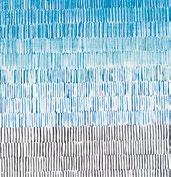

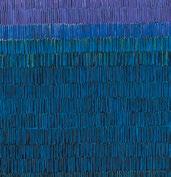







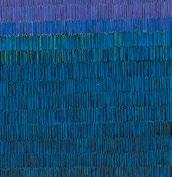
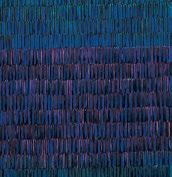





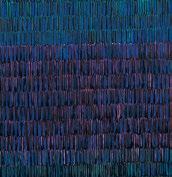
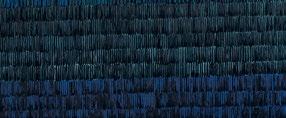

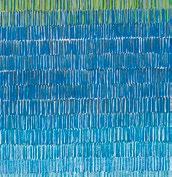






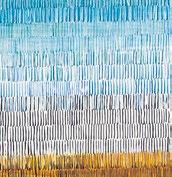
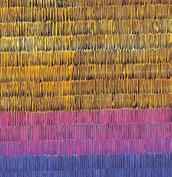


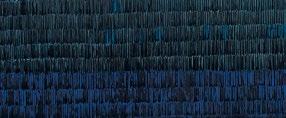
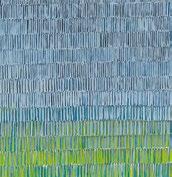


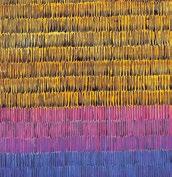
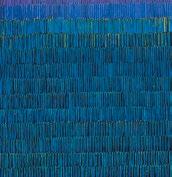


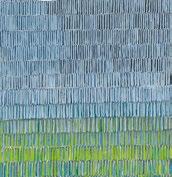





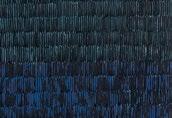





















































































































































































































































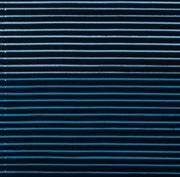
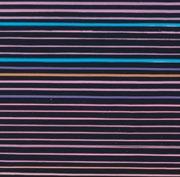







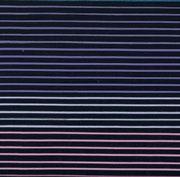


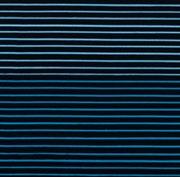
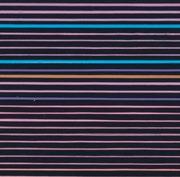
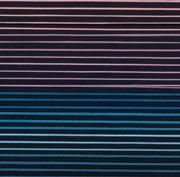

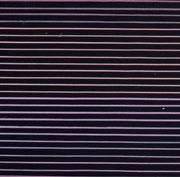



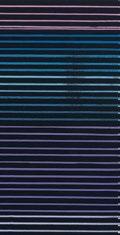





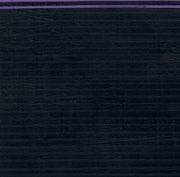
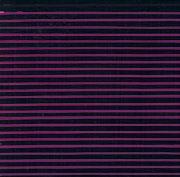













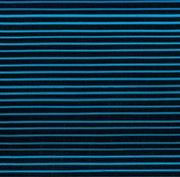
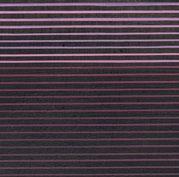
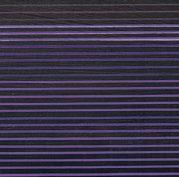


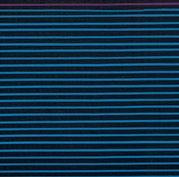






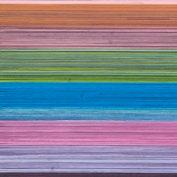
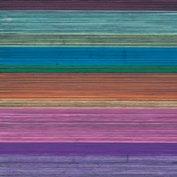




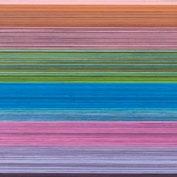

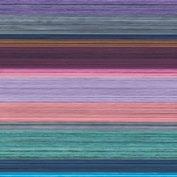









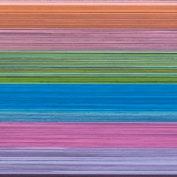









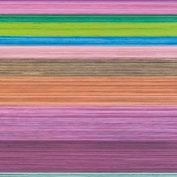


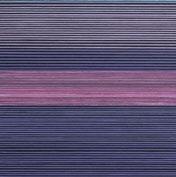










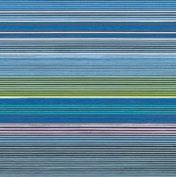











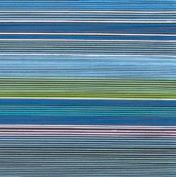

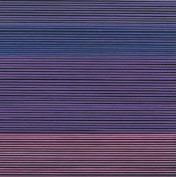









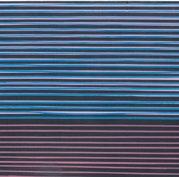
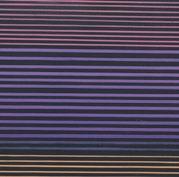


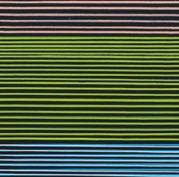





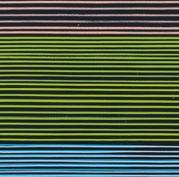



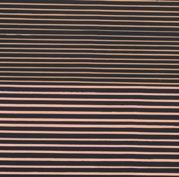


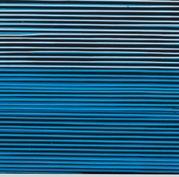


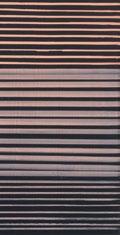
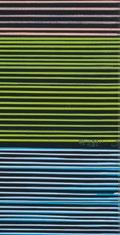










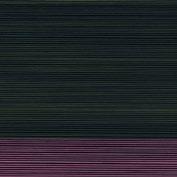


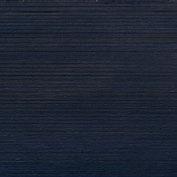
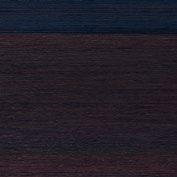
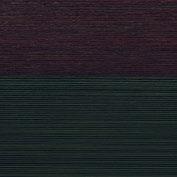
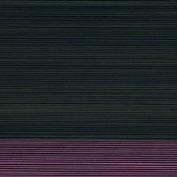
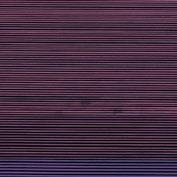
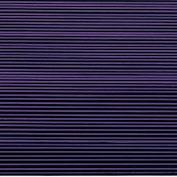












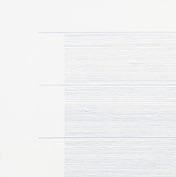
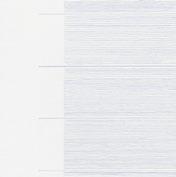

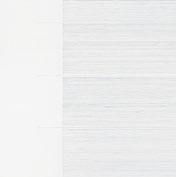

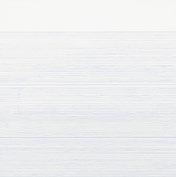

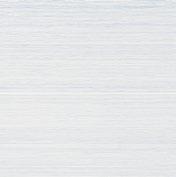
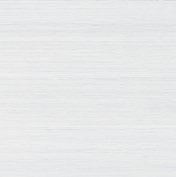
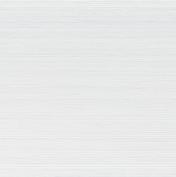

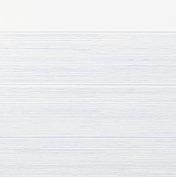

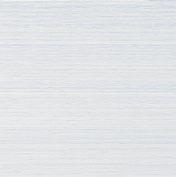

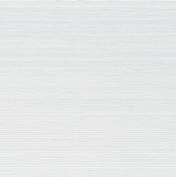

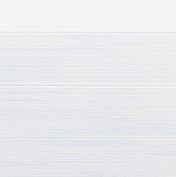







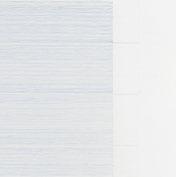





















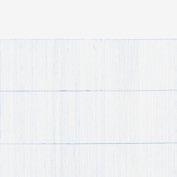
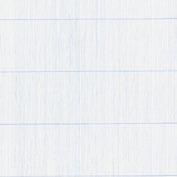



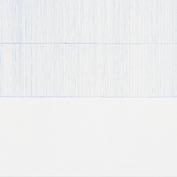
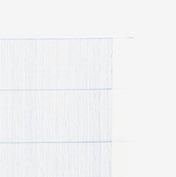


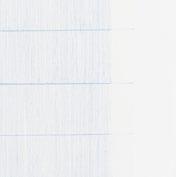



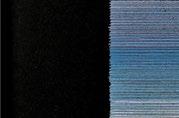
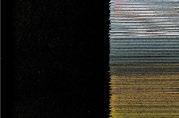



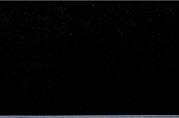

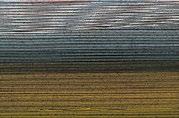




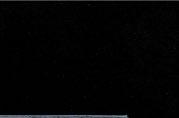

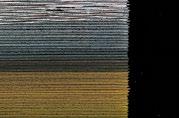


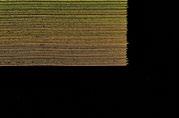







































































































































































































































































































































































































































































































































































































































































































































































































































































































































































































































































































































































































































































































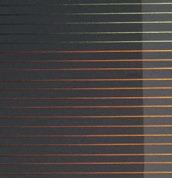


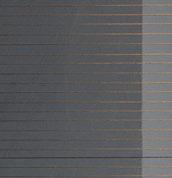





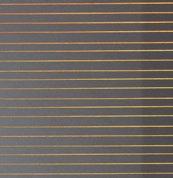

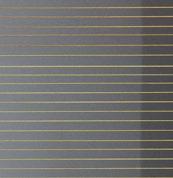






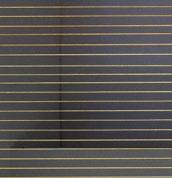




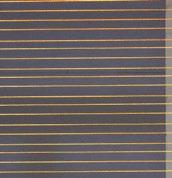


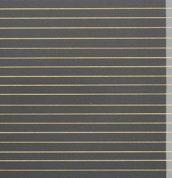

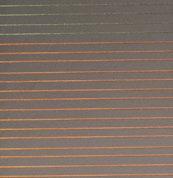




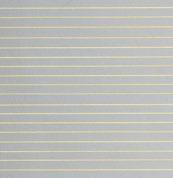


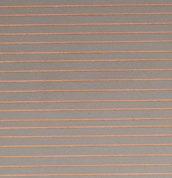



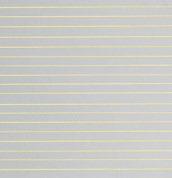


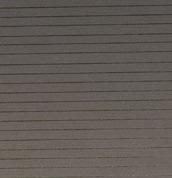






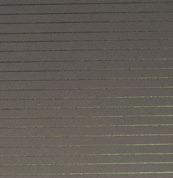




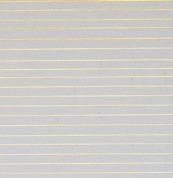




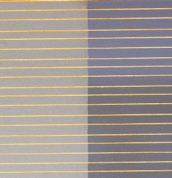











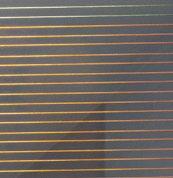
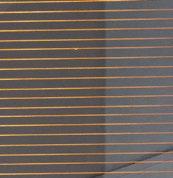



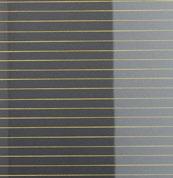


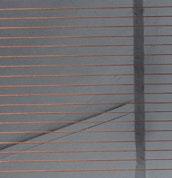
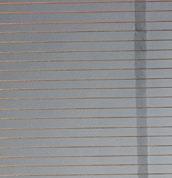

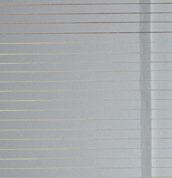





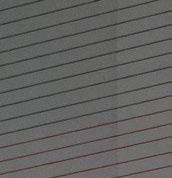


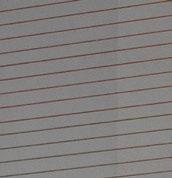

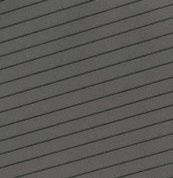

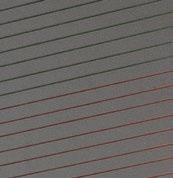






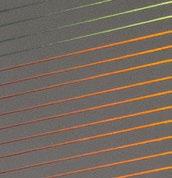

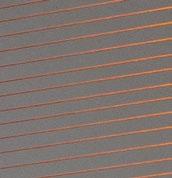


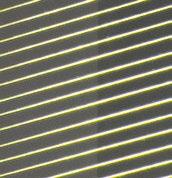


















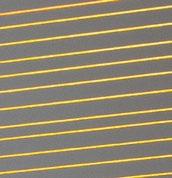









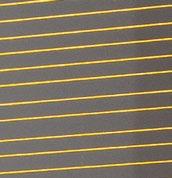
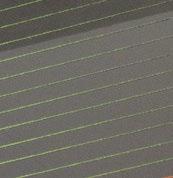

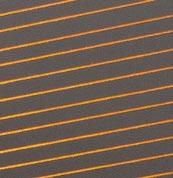


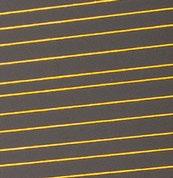


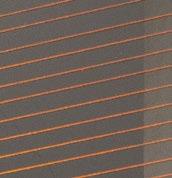









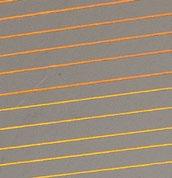
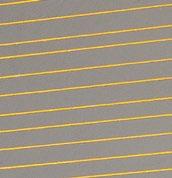
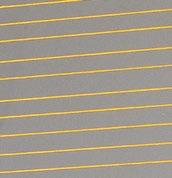


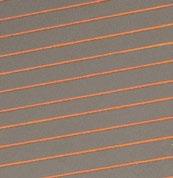


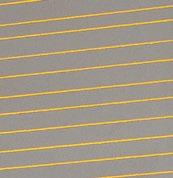




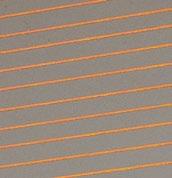





Designing an artist’s studio is an exceptional and intriguing task for any architect. Contact with the art world always provides a source of inspiration for our work, offering us new visions of beauty and reality. As a starting point, we need to have detailed knowledge of the artist’s ideas, concerns, and working methods so as to be able to design a space that will comply with their expectations. In our case, the idea we developed sprang from a common interest in the area of the Vega de Granada, a fertile plain with its own farming and building culture.
In the design of an artist’s studio, one general constant is the need for a single, continuous, ample, and well-lit space. It is a place for productive accumulation, for an exchange of gazes between what has been produced and what is to come in the future. It is an environment for comparing works, evaluating processes, and displaying new or selected pieces.
If we survey the multitude of images of painters’ studios and workshops that are stocked in our memory, we find a certain common denominator that reflects the density of the material produced, with its accumulation of sketches, canvases, ideas, suggestions, formats, artistic media, and various materials superimposed one over the other. Nothing is discarded. Everything the intuition seizes upon is preserved, at least while the process of developing a particular work or set of pieces is ongoing.
Leaving aside the fundamental conditioning factor of the format or size of the chosen materials, which will depend on the stated objectives and available means, there is always one invariable
element in projects for designing a space of this type. This is the quest for the right light, a prime necessity for painting. In this respect, the diversity of nuances and opinions is as broad as the options made available by nature and technique, but it is possible even so to point to one dominant aim: the search for a certain stability, a certain chromatic unity, and a certain color temperature. At this point, the debate between changing natural light and stable artificial lighting, or a combination of the two, can be a lengthy one, as it involves factors of a sensitive, creative, or simply personal nature. Concentrating on natural light, the question arises of how to capture it and how it is to relate to the exterior. Opening up windows to illuminate the interior always introduces the dichotomy of whether to use the window only as a means of capturing light or as a way of establishing a visual connection with the surroundings. To put it another way, whether to seek isolation and concentration on one’s own ideas or to maintain certain links with the exterior, with its variations and surprises. In short, space and light are the two decisive parameters when it comes to designing a studio for artistic creation.
Another aspect of this question is making the dwelling quarters a direct continuation of the workspace, with a single way of life in a unitary space that suppresses the limits between the two activities. This involves superimposing without differentiating, with the space read as an unsegregated whole. Whether the space is continuous or fragmented, living and creating there constitute a single path of vital expression. In these inhabited universes, spaces
emerge as supports open to all the possible options that adapt and transform as a mode of production implying a mode of habitation is developed and formulated. At the start of the twentieth century, the rise of the avant-garde movements stimulated a fruitful convergence between artists and architects. The goal was to design creative environments for the former from an innovative perspective that would reflect all the potency and originality proposed by the new architectural languages. The first examples, such as the studio planned by Le Corbusier for the painter Amédée Ozenfant in Paris in 1922, are certainly indebted to the wellknown advances in factory models that emerged from the Second Industrial Revolution during the late nineteenth century. These consisted of using natural lighting in factory production, made possible by the activation of new porticoed structural systems, a solution that was also applied to the development and construction of facades and roofs that could significantly increase the possibilities of natural light. These qualitative advancements in industrial spaces and small workshops led some artists to reuse these premises as painting or sculpture studios, like the Atelier Brancusi on the Impasse Ronsin in Paris, now recreated by Renzo Piano next to the Centre Pompidou. Le Corbusier proposed using that innovative capacity of industrial origins in his own studio, which he built on the Rue Nungesser-etColi in Paris, and Ozenfant’s, mentioned above, which served as inspiration for the one Juan O’Gorman designed for Frida Kahlo and Diego Rivera in Mexico City. Contemporary with Le Corbusier’s and Ozenfant’s studios are those André Lurçat designed for his
brother Jean and the studio Auguste Perret built for Chana Orloff, the sculptor of Ukrainian origin. Other examples, like the house and studio of Theo Van Doesburg and the Maison-Atelier Lenglet designed by Louis Herman De Koninck, share the option of combining the dwelling with the studio, although in most cases, the workspace, while adjacent, remains autonomous and independent. Outside the context of Central European modernism, one outstanding project in Russian constructivist circles is that of Konstantin Melnikov for his own house and studio in Moscow. This singular design’s original and uninhibited language lends it an extraordinary personality. All these studios and workshops are characterized by a generous window space that floods them with light, almost suggesting a possibility of working in the midst of nature. In the second half of the twentieth century, once modernism had been established and accepted, this connection between artists and architects grew more widespread as the architects’ creative capacity was fully unleashed. In these new times of recovery and bonanza following World War II, there was a new surge of artistic production and a concurrent increase in demand for studio and workshop spaces where this creativity could develop. A multitude of options emerged, ranging from the reuse of industrial, commercial, and agricultural facilities to the construction of new “made-to-measure” studios in both rural and urban environments. In this expansive context, however, the two essential parameters of space and light remained unaltered, while architectural expression displayed an openness to the diverse languages and movements of each region.










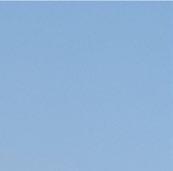


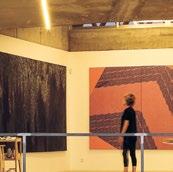


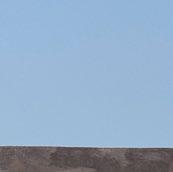






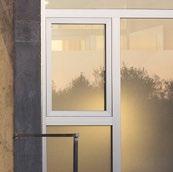



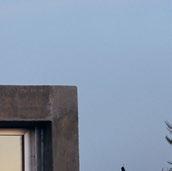
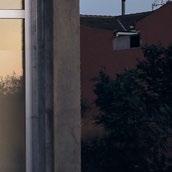








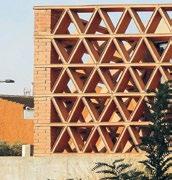




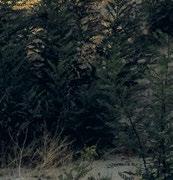




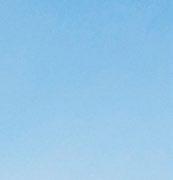


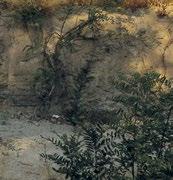


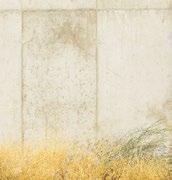


Receptiveness to new artistic attitudes, the appearance of more sophisticated techniques and novel expressive formats, and the incorporation of other disciplines shaped a landscape where architectural languages might vary, but the objectives remained inalterable. In Spain, despite political and economic difficulties, there were sporadic signs of that same creative activity and spatial diversity. One of the foremost projects of this sort in the 1950s was the studio Josep Lluís Sert designed for Joan Miró. A result of the close understanding between the two artists, it combines a Mediterranean character with formal innovation in its spatial expression. At almost the same time, Erwin Broner, the painter and architect from Munich, settled in Ibiza and built his house and studio there. While perfectly adapted to the island’s vernacular architecture, this little gem did not renounce the period’s most advanced forms of expression. This potentially endless list could be rounded off with projects like José Antonio Coderch’s early 1960s design for the house and studio of Antoni Tàpies, an urban project sandwiched between walls shared with adjoining properties, whose careful division admits light to every space through courtyards that draw the gaze, enriching an inhabitability marked by a simple and austere materiality. Another example is the studio designed between 1999 and 2002 by Ábalos & Herreros for the painter Luis Gordillo, a precise halfburied metal container with skillfully filtered natural light that creates a pleasant place for painting. In all these examples, the common denominator continues to be the one described above: the search for spatial and luminous qualities as prime objectives, even
if nuanced by the conditions of each site and the formal expressiveness of the designers.
The starting point of the project to create a studio for Soledad Sevilla emerged from the confluence of two processes. The first was the inscription of part of her series of paintings and sculptures in the specific territory where the artist asked for her studio to be built: the fertile plain of the Vega de Granada, marked by its agricultural architecture. The second process was to take into account the characteristics of the spaces that had previously housed her work, understanding how they had accommodated its needs and the artist’s way of working, but also seeking the difference that would lead us to the right setting for her creative processes.
The first process, reflecting a familiarity with the qualities of agricultural constructions, arose from a mutual interest in this type of architecture, particularly that of tobacco-drying sheds, particularly those made of wood. Both the artist and the architect were drawn by the study of these anonymous and architecturally simple constructions, the results of the refinement of knowledge and popular practice. Their beauty lies in the energy released by their raw materiality, the ever-changing atmospheres generated by the fragmented light sliding delicately over their wooden frameworks, the patina left by time on their humble logs, and the transparencies of their protective raffia and woven fibers.
Tobacco-drying sheds are a fragile and self-supporting building type. When they were first introduced, they were habitually dismantled at the end of each farming season. They are built from what






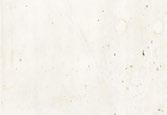
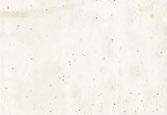











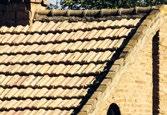





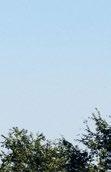









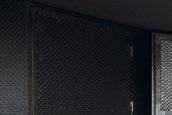
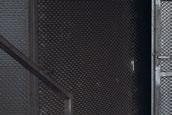






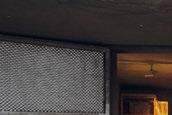


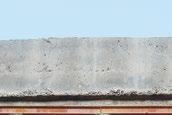




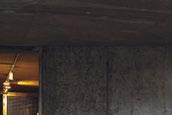

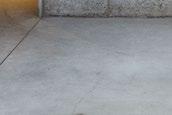
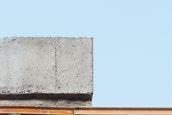
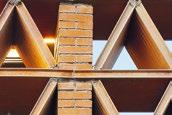
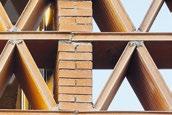
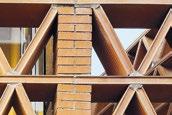








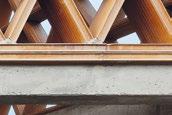


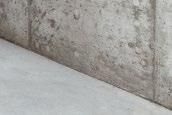








1 See Sonata (2010) [p. 135], with its surprising depiction of unrolled metal barrels used as fronting for a tobaccodrying shed.
2 Soledad Sevilla, Arquitectura agrícola (Barcelona: Fundación Arte y Mecenazgo, Obra Social ”La Caixa,” 2014), 5.
is available in the Vega de Granada, with structures of poplar logs, outer surfaces with openings made of boards or from the bark of those same logs, stone slabs for resting on the ground, and occasionally protective metal plating for the roofs and plinths.1 In some cases, the economical alternative of covering them with simple sheets of plastic makes them almost into ethereal sculptures of extreme fragility, which Soledad then reflects in her paintings with admirable subtlety and volatility. In these “houses of shadow and air,” as the architect Pere Riera called them when he first saw them, the tobacco leaves are left to dry during the autumn while being protected from the seasonal rains. In Soledad Sevilla’s own words:
Especially beautiful are the ones built with wooden boards, with a space left between them that creates an overall lattice effect. The resulting atmosphere inside these structures takes me back to other spaces that interest me, like the courtyards and enclosures of the Alhambra, where the light effects are multiplied by being filtered through structures that seek transparency.2
I describe the qualities and nuances of that encounter in more detail in my doctoral dissertation:
This reencounter produced an exchange of material and the possibility of combining two perspectives on these constructions that were very different but shared common arguments on their qualities. We decided to organize joint visits and show each other our little discoveries. Intuited transparencies, filtered landscapes, additive grids, form
3 Antonio Cayuelas, “Habitaciones de sombra y aire. Espacios de transición en la arquitectura mediterránea” (PhD diss., Universidad de Granada, 2017), 265.
transformed by background, movements of wear, recycling the recycled. Implicit abstraction. Her detailed scrutiny of the material, her ability to mineralize it, her manipulation of the organic and the inorganic. And over and above all this, the surprising technique for transferring that complexity to the canvas, a methodically aleatory process carried out in three phases corresponding to three sizes of canvas, where complexity and detail advance together without losing that progressive component in Soledad’s work, the depth of the space.3
As on other occasions, Soledad Sevilla’s new artistic proposals on the world of tobacco-drying sheds refer back to other earlier series of paintings that explore the perception of space through light, its variations, and its movement. Her pictorial development maintains the guiding thread of a sensory universe in permanent transit that emerges significantly in each new series. The geometric and graphic resources she draws on undergo a progress parallel to her creative development, like a language of her own in slow but precise transformation, incorporating details that evolve with the superimposition of different patterns.
Soledad, through her paintings, and myself, as the author of the project, “recycling” them in architectural form, agreed on the need to preserve the memory of those humble agricultural constructions that are gradually disappearing from the landscape of the Vega de Granada. This meeting of interests gave rise to an initial proposal to occupy one of the sheds with a painter’s studio. The project delimited a large interior space with a cladding of white












































































panels to provide a suitable support for painting. That space would be closed off at the top by a folded polycarbonate roof, a solution that would obviate the need for wooden braces between brick porticoes, while at the same time taming the patterns of changing light cast by the lattices of these “houses of shadow and air.”
This project proved unviable for various reasons, so I proposed the alternative of a newly built studio on a nearby plot located on the limits between the rural and the urban.
The artist’s request was simple and precise: a large workspace and a storage area for finished works. I suggested the possibility of occasionally exhibiting completed works in the space. The elongated proportions of the chosen site suggested superimposing the two spaces, with the storeroom underneath, almost at ground level. The search for the best light for each task completed the configuration of the studio, to which a separate narrow strip was added as a small gallery for technical support. Her operational knowledge of her previous studio in Barcelona led to the idea of organizing the auxiliary and service activities in areas separate from the painting studio. Once these complementary spaces for activities that would support the productive process were planned, the interior distribution was complete.
With this functional clarity in mind, I designed a preliminary reception area for resting, chatting, and having coffee. This is an intermediate zone between the urban and the rural, between the vibrant exterior and the calm interior. It is protected by a south-facing ceramic lattice that echoes the geometric pattern that gives the tobacco-drying
sheds their identity, though with a change in scale that affords protection from the sun in the hottest periods of the year while allowing the sunshine and its warmth to pass through in the cool Granada winters. Beyond this relaxing transitional area, the entire studio opens up. Bending toward the south, it is a long room divided into two strips, a larger one for the work itself and another that contains storage shelves, bookcases, and a bathroom. The grouping of spaces is completed with a cleaning closet and a small office. Opposite the entrance, the studio is completely open to the northeast, giving on to the surrounding olive grove via a small bridge that calls to mind the natural world of farming. Underneath, an English courtyard provides light for the storeroom and allows for other tasks involving the cleaning and preparation of large canvases. This sequence of consecutive spaces is established by different types of natural lighting, whose effect is to multiply the ambient qualities. While the lattice of thin ceramic bricks constructs an urban image for the building and lets the cheerful and vibrant southern light into the preliminary reception and rest area, the subsequent full opening brings luminosity and nature into the workspace. This great opening operates by dissolving limits and creating its own landscape laden with values and emotions. Its enormity is balanced by a narrow band of light cast by the southern edge of the folded roof that covers the studio. Certain simple mechanisms modulate the light and allow the artist to work, converse, or show the work in all its splendor. As in the tobacco-drying sheds, such everyday scenarios are transformed with superimposed filters to





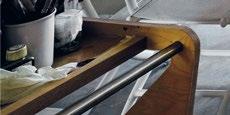


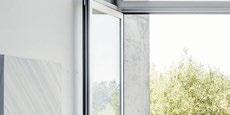
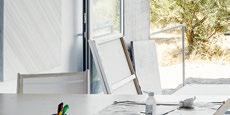

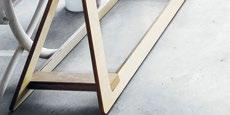

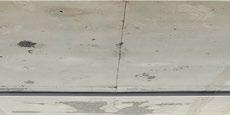



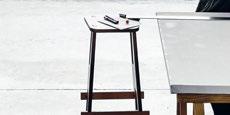
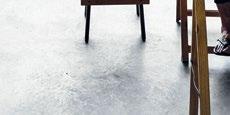








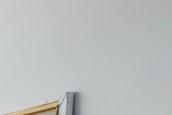

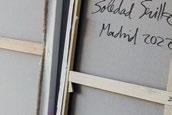

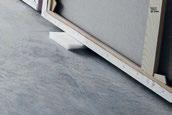




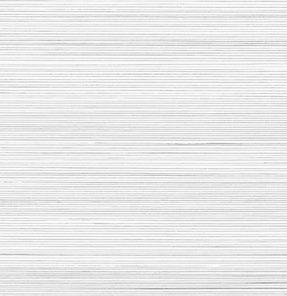







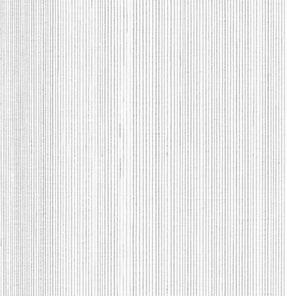

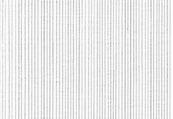

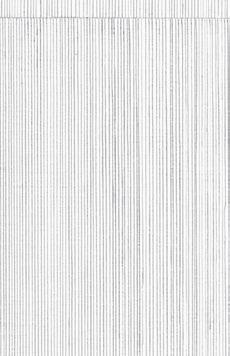

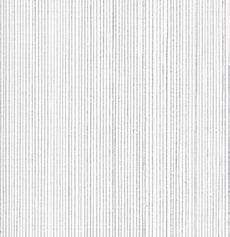
Untitled c. 1967
Gouache on paper
36 × 36 cm
Collection of the artist p. 27 (above)
Untitled c. 1967
Gouache on paper
40 × 40 cm
Collection of the artist p. 27 (center)
Untitled c. 1967
Gouache on paper
43 × 48 cm
Collection of the artist p. 27 (below)
Untitled 1968
Maquette. Methacrylate
40.3 × 33.5 cm
Collection of the artist p. 28
Untitled 1968
Maquette. Methacrylate
40.3 × 33.5 cm
Collection of the artist p. 29
Untitled 1969
Gouache and varnish on cardstock
69 × 68.6 cm
Museo Nacional Centro de Arte
Reina Sofía AD05016 p. 30
Untitled 1969
Gouache and varnish on cardstock
68.6 × 69 cm
Museo Nacional Centro de Arte
Reina Sofía AD05017 p. 31
Untitled 1969
Engraved methacrylate
48 × 48 × 5 cm
Collection of the artist p. 35
Untitled 1971–1972
Reprography on acetate and gloss paper
104.5 × 107.6 cm
Museo Nacional Centro de Arte Reina Sofía AD05158 pp. 2 (detail), 38
Untitled 1971–1972
Reprography on acetate 102 × 104.3 cm
Museo Nacional Centro de Arte Reina Sofía AD05043 p. 39 (above)
Untitled 1971–1972
Reprography on acetate and cardstock
101.4 × 103.8 cm
Museo Nacional Centro de Arte Reina Sofía AD05157 p. 39 (below)
Mondrian 1973
Acrylic on panel 92.5 × 100 cm Collection of the artist p. 40
Untitled 1975
Acrylic on panel Diptych, 243 × 242 cm (243 × 121 cm each) Centro Andaluz de Arte Contemporáneo, Seville. Colección Junta de Andalucía D0651 p. 43
Untitled 1977
Ink and pencil on paper 110 × 106 cm Collection of the artist p. 47
Untitled 1977
Acrylic on canvas
Polyptych, 300 × 600 cm (300 × 150 cm each)
Museo Nacional Centro de Arte Reina Sofía AS06520 pp. 44–45
Untitled 1978
Acrylic on canvas
Diptych, 195 × 260 cm (195 × 130 cm each)
Museo Nacional Centro de Arte Reina Sofía AD05047 pp. 56–57
Untitled 1978
Acrylic on canvas Diptych, 195 × 260 cm (195 × 130 cm each)
Museo Nacional Centro de Arte Reina Sofía AS07267 pp. 6 (detail), 50–51
Untitled 1978
Acrylic on canvas Diptych, 206 × 269.7 cm (206 × 134.85 cm each) Museo de Arte Contemporáneo de Alicante (MACA) XX.147 pp. 54–55
Untitled 1978
Acrylic on fabric Diptych, 196.7 × 260.5 cm (195 × 130 cm each)
Asociación Colección Arte Contemporáneo – Museo Patio Herreriano Banco Santander pp. 52–53
Keiko series 1980
Colored ink on paper Six pieces of 79 × 105 cm Collection of the artist pp. 62–63
Untitled 1980
Acrylic on canvas 195 × 130 cm Collection of the artist pp. 4 (detail), 59
Belmont III
Belmont series
1980
Wax on paper
124.5 × 125 cm
Museo Nacional Centro de Arte Reina Sofía DO02534 p. 74 (upper left)
Belmont IV
Belmont series
1980
Wax on paper
124.5 × 125 cm
Museo Nacional Centro de Arte
Reina Sofía DO02533 p. 74 (lower left)
Belmont VI
Belmont series
1982
Wax on paper
122 × 167 cm
Colección Banco de España, Madrid D_359 p. 75
Belmont VII
Belmont series
1982
Wax on paper
122 × 121 cm
Colección Banco de España, Madrid D_360 p. 74 (upper right)
Belmont VIII
Belmont series
1982
Wax on paper
122 × 121 cm
Colección Banco de España, Madrid D_361 p. 74 (lower right)
Meninas IV
Meninas series
1982
Acrylic on canvas
220 × 200 cm
Centro Andaluz de Arte Contemporáneo, Seville.
Colección Junta de Andalucía CE0151 p. 78
Meninas V Meninas series
1982
Acrylic on canvas
220 × 200 cm
Colección Banco de España, Madrid P_311 p. 80
Meninas VI
Meninas series
1982–1983
Acrylic on canvas
220 × 200 cm
Colección de Arte Banco Sabadell p. 82
Meninas VII
Meninas series
1982
Acrylic on canvas
220 × 200 cm
Colección Cuatrecasas p. 77
Meninas VIII
Meninas series
1982
Acrylic on canvas
220 × 200 cm
Private collection p. 79
Meninas IX
Meninas series
1982
Acrylic on canvas
220 × 200 cm
Colección de Arte Contemporáneo
Fundación ”la Caixa,” Valencia ACF0138 p. 83
Meninas X Meninas series
1982
Acrylic on canvas 220 × 200 cm
Colección Ayuntamiento de Granada p. 81
Meninas
Meninas series
1983
Acrylic on canvas 220 × 200 cm
Private collection, long-term loan to Museo de Arte Abstracto Español, Cuenca 0051P p. 76
The Road to the East Envies
That to the West [El camino del este envidia al del oeste] Alhambra series 1984
Acrylic on canvas
Diptych, 195 × 200 cm (195 × 100 cm each)
Private collection, Cádiz p. 92
The Black Corner That Was Besooted by the Shadow [La negra esquina que tiznó la sombra] Alhambra series
1984
Acrylic on canvas
220 × 186 cm
Colección Artística del Patronato de la Alhambra y Generalife, Granada CAPA232 p. 85
You Will Know of My Being If You Regard My Beauty [Sabrás de mi ser si mi hermosura miras]
Alhambra series
1984
Acrylic on canvas
220 × 186 cm
Colección Artística del Patronato de la Alhambra y Generalife, Granada CAPA231 p. 84
I Am a Crown on the Brow of My Gate: The East Envies the West in Me [Soy corona en la frente de mi puerta: envidia al Occidente en mí el Oriente] Alhambra series
1984
Acrylic on canvas
220 × 186 cm
Colección de Arte Contemporáneo Fundación ”la Caixa,” Valencia p. 86
As If the Star Had Exchanged Its Mansions for Mine [Como si el astro hubiese cambiado sus mansiones por las mías]
Alhambra series
1985
Acrylic on canvas
220 × 186 cm
Private collection, Cádiz p. 91
Color and Light Are Arranged in Such a Way That They Are Sometimes Contrary and Sometimes Similar [El color y la luz están dispuestos de manera que a veces son contrarios, y a veces semejantes]
Alhambra series
1985
Acrylic on canvas
220 × 186 cm
Colección Ayuntamiento de Albacete 211 p. 87
Not Having an Hour of Sunset [Sin tener hora de ocaso] Alhambra series
1985
Acrylic on canvas
220 × 186 cm
Colección Patrimonio Nacional, Madrid 10007459 p. 88
The Moon Comes to Converse with Her [Viene con ella a conversar la luna] Alhambra series
1985
Acrylic on canvas
220 × 186 cm
Colección Patrimonio Nacional, Madrid 10007460 p. 89
Serene Atmosphere, Languid Aura [Atmósfera serena, aura lánguida] Alhambra series
1985–1986
Acrylic on canvas
220 × 186 cm
Centro Andaluz de Arte Contemporáneo, Seville. Colección Junta de Andalucía CE0662 p. 90
Legacy That Lightens the Mountains [Legado que haces leves a los montes]
Alhambra series
1986
Acrylic on canvas 186 × 220 cm
Colección Diputación de Granada p. 94
Court of the Lions (by Day) [Patio de los leones (diurno)] Alhambra series
1986
Acrylic on canvas 186 × 220 cm
Colección Diputación de Granada p. 95
In Ruins II [En ruinas II]
1993
Acrylic on fabric 180 × 250 cm
Colección de Arte Contemporáneo Fundación ”la Caixa,” Valencia ACF0615 pp. 98–99
Valencia Diptych [Díptico de Valencia]
1996
Oil on fabric
250 × 360 cm
Institut Valencià d’Art Modern (IVAM) pp. 100–101
Time Flies
[El tiempo vuela]
1998
Installation. Paper, polyester, and paint
1,500 butterflies measuring 12 cm each
Centro Andaluz de Arte Contemporáneo, Seville. Colección Junta de Andalucía CE2161 pp. 108–109, 110–111(detail)
Hotel Triunfo 1998
Oil on fabric
200 × 400 cm
Colección CaixaBank, Valencia 62052 pp. 102–103
Insomnia at Dawn [Insomnio al alba]
2000
Oil on canvas
200 × 400 cm
Collection of the artist pp. 140–141
Insomnia in the Small Hours [Insomnio madrugada]
2000
Oil on canvas
200 × 400 cm
Colección de Arte Contemporáneo Fundación ”la Caixa” ACF0820 pp. 142–143
Insomnia without Sound [Insomnio sin sonido]
2000
Oil on canvas
250 × 200 cm
Colección Galería Fernández-Braso, Madrid p. 139
Insomnia of Peace and of Conflict [Insomnio de paz y de conflicto]
2002
Oil on canvas
Polyptych, 200 × 800 cm (200 × 140 cm each)
Private collection, London pp. 145, 146–149 (detail)
Ida 2006
Oil on canvas
220 × 200 cm
Collection of the artist p. 107
Agricultural Architectures [Arquitecturas agrícolas]
2013
Sculptures. Iron, paper, and cut-out neoprene pp. 150–151
Two pieces measuring 73 × 18 × 19 cm
Collection of the artist
Eleven pieces of varying sizes
Centro Andaluz de Arte
Contemporáneo, Seville. Colección Junta de Andalucía
The Oblivion We Shall Be [El olvido que seremos]
70 × 60 × 25 cm
Private collection, Granada
Dark Moons of Crystal [Lunas oscuras de cristal]
New Distances series 2015
Oil on fabric
200 × 220 cm
Colección Antonio Cobo, Madrid p. 154
Dark Moons of Silver [Lunas oscuras de plata]
New Distances series 2015
Oil on fabric
200 × 230 cm
Collection of the artist pp. 8 (detail), 155
New Distances Black [Nuevas lejanías negro]
New Distances series 2015
Oil on fabric
200 × 220 cm
Collection of the artist p. 153
Of Blue Silk Midnight [De seda azul medianoche] 2018
Oil on fabric
200 × 300 cm
Colección Familia Cortina Lapique pp. 156–157
Untitled 2018
Maquette. Painted wood and polyethylene
50 × 133 × 31 cm
Centro Andaluz de Arte Contemporáneo, Seville. Colección Junta de Andalucía CE2190 p. 150
Sketches for the Horizons series 2023–2024
Acrylic on panel
76 × 60 cm
Collection of the artist p. 159
(In order of appearance, from left to right and from top to bottom)
Triptych 3: Of the Part of the Moon [Tríptico 3. De la parte de la luna]
Small Horizon 5 [Horizonte pequeño 5]
Small Horizon 3 [Horizonte pequeño 3]
Small Horizon 7 [Horizonte pequeño 7]
Nocturnal Sea 3: Horizon 10 [Mar nocturno 3. Horizonte 10]
Triptych 2 [Tríptico 2]
Small Green Horizon 1 [Horizonte pequeño verde 1]
Nocturnal Sea 5 [Mar nocturno 5]
Small Horizon 6 [Horizonte pequeño 6]
Nocturnal Sea 1: Horizon 8 [Mar nocturno 1. Horizonte 8]
Nocturnal Sea 2 [Mar nocturno 2]
Small Horizon 4 [Horizonte pequeño 4]
Where the Line Was [Donde estaba la línea] 2024
Installation. Cotton thread and wood Variable measurements Collection of the artist pp. 180, 181, 182–183 (detail)
Waiting for Sempere [Esperando a Sempere] 2023
Oil on canvas
Eight pieces measuring 244 × 200 cm
Collection of the artist
Cover, pp. 171–178, pp. 201, 202, 206, 207 (detail)
Light Color [Color luz] p. 171
Astral Maladjustment [Desajuste astral] p. 172
The Dream of a Dream [El sueño de un sueño] p. 173
An East to the East of the East [Un oriente al oriente de oriente] p. 174
In Praise of Slowness [Elogio de la lentitud] p. 175
No Day without a Line [Ningún día sin línea] p. 176
The Wind Outside [El viento fuera] p. 177
The Moon Rises [Se alza la luna] p. 178
Horizontal White Horizon [Horizonte blanco horizontal] 2024
Oil on canvas
244 × 200 cm
Collection of the artist p. 166
Vertical White Horizon [Horizonte blanco vertical] 2024
Oil on canvas
244 × 200 cm
Collection of the artist p. 167
EUSEBIO SEMPERE
Untitled 1965–1969
Gouache on paper
38 × 32 cm
Collection of the artist p. 169
Documentation
Computable Forms: Exhibition Held to Mark the Close of the Seminars of Automatic Generation of Plastic Forms for the Academic Year 1968–69
[Formas computables: exposición celebrada como clausura de los Seminarios de Generación Automática de formas plásticas correspondientes al curso 1968-69]
1969 Publication
Collection of the artist
Catalogue of the Computer Assisted Art Exhibition Held in Madrid in the Palacio Nacional de Congresos on the Occasion of the German and Middle European Hundred Percent Clubs and the 8th European Systems Engineering Symposium
1971
Publication Collection of the artist
Photographs of methacrylates
1972
Period copies
Collection of the artist
Computers and People, vol. 24, no. 8
1975
Publication
Collection of the artist
Automatic Generation of Plastic Forms: The Quest of Soledad Sevilla [Generación automática de formas plásticas. La búsqueda de Soledad Sevilla]
1979
Newspaper La Nueva España Press clipping Collection of the artist
Permutations and Variations of a Grid: Perceptive Analysis. Report [Permutaciones y variaciones de una trama. Análisis preceptivo. Memoria]
1979
Notebook
Collection of the artist pp. 60, 61
Letter to the director of the Fogg Museum, Mr. Seymour, with a proposal for the project Seven Days of Solitude 1982
Printed on paper
Collection of the artist
Record of the project Seven Days of Solitude 1982
Photograph Cloister of the Fogg Museum, Harvard University Cambridge, Massachusetts p. 120
Record of the installation
The Power of the Evening [El poder de la tarde] 1984
Photograph Galería Montenegro, Madrid Collection of the artist p. 131
Poster of the installation Milk and Blood [Leche y sangre] at the Galería Montenegro 1986
Printing and photograph on foam board c. 100 × 100 cm Collection of the artist
Record of the installation Siesta Time [Hora de la siesta] 1990
Photograph Collection of the artist
Record of the installation In Las Palmas the One Reciting the Poetry Is Her [En Las Palmas la que recita la poesía es ella] 1991
Photograph Collection of the artist
Sketchbook for installations 1990s
Collection of the artist
Vélez Blanco 1992
Video, color, sound, 13 mins., 58 secs.
Collection of the artist
Record of the installations Mayo 1904–1992 and MIT Line, in Soledad Sevilla: The Space and the Precinct [Soledad Sevilla: el espacio y el recinto] 2001
Photograph in publication Museo Nacional Centro de Arte Reina Sofía, Library and Documentation Center
Record of the installation With a Willow Switch [Con una vara de mimbre], in Soledad Sevilla 2000–2005 2005
Photograph in publication Museo Nacional Centro de Arte Reina Sofía, Library and Documentation Center
Record of the installation Fons et Origo, in August Lights [Luces de agosto] 2010
Photograph in publication Museo Nacional Centro de Arte Reina Sofía, Library and Documentation Center
Other works reproduced
Circa (SSP of 012)* 1969
Letraset grid on tracing paper
63 × 68.5 cm
Fons d’Art i Patrimoni. Universitat Politècnica de València (UPV) 5494 p. 36 (left)
Circa (SSP of 015)*
1969
Letraset grid on tracing paper
56.5 × 62.5 cm
Fons d’Art i Patrimoni. Universitat Politècnica de València (UPV) 5495 p. 36 (right)
Untitled 1969
Tempera and graphite on Canson paper
65.2 × 50.3 cm
Museo Nacional Centro de Arte Reina Sofía
AD05030 p. 34
Untitled* 1969
Ink on printed graph paper
56 × 59 cm
Institut Valencià d’Art Modern (IVAM) 2017.023 15688 p. 46 (upper left)
Untitled* 1969
Ink on printed graph paper 56 × 59 cm
Institut Valencià d’Art Modern (IVAM) 2017.024 15689 p. 46 (upper right)
Untitled* 1969
Ink on printed graph paper
52.5 × 56 cm
Institut Valencià d’Art Modern (IVAM) 2017.027 15692 p. 46 (lower left)
Untitled* 1969
Ink on printed graph paper
54.5 × 59 cm
Institut Valencià d’Art Modern (IVAM). Gift of the artist 2017.028.003 15695 p. 46 (lower right)
Geometric Space
[Espacio geométrico] (SSP 0214)*
1974
Letraset on polyester
58.5 × 62.5 cm
Fons d’Art i Patrimoni, Universitat Politècnica de València (UPV) 5496 p. 37 (left)
Geometric Space
[Espacio geométrico] (SSP 0215)* 1974
Letraset on polyester
58.5 × 62.5 cm
Fons d’Art i Patrimoni, Universitat Politècnica de València (UPV) 5497 p. 37 (right)
Untitled 1975
Silkscreen and ink on fabric
81 × 166 cm
Centro Andaluz de Arte Contemporáneo, Seville. Colección Junta de Andalucía CE0212 pp. 32–33
Untitled 1975
Acrylic on panel
Diptych, 243 × 242 cm (243 × 121 cm each)
Centro Andaluz de Arte Contemporáneo, Seville. Colección Junta de Andalucía D0650 p. 41
Record of the spatial action MIT Line 1980
Photograph Exterior of the Massachusetts Institute of Technology (MIT) Cambridge, Massachusetts p. 128
Boston Paper No. 5 c. 1981
Pencil on paper 91 × 579 cm
Collection of the artist pp. 64–65
Court of the Lions I [Patio de los Leones I] Alhambra series 1985
Acrylic on canvas
220 × 186 cm
Colección Excmo. Sr. Duque de Bailén p. 93
Riding Roughshod over Reason [Atropellar la razón] Bulls series
1991
Acrylic on canvas
Triptych, 195 × 420 cm
Colección Banco de España p. 133
Mayo 1904–1992 1992
Photographs
Vélez Blanco Castle, Almería p. 97
Apamea* 1999
Oil on canvas
Polyptych, 250 × 720 cm (250 × 180 cm each)
Centro Andaluz de Arte Contemporáneo, Seville. Colección Junta de Andalucía CE2146 pp. 104–105
Malevich in El Rompido [Malevich en El Rompido]
2004
Oil on canvas 220 × 200 cm
Private collection p. 134
Sonata 2010
Oil on canvas
Polyptych, 315 × 344 cm (105 × 86 cm each)
Collection of the artist p. 135
Sketches for the series Waiting for Sempere [Esperando a Sempere] 2022
Graphite on paper 38 × 32 cm
Collection of the artist pp. 11–15
Gala* 2022
Oil and acrylic on canvas
Diptych, 195 × 260 cm (195 × 130 cm each)
Collection of the artist pp. 48–49
Sketches for the Horizons series 2023–2024
Acrylic on panel
76 × 60 cm
Collection of the artist p. 159
Nocturnal Sea 4: Small Horizon 2 [Mar nocturno 4. Horizonte 2]
The Hands in the Water: Small Horizon 7 [Las manos en el agua. Horizonte pequeño 7]
Triptych [Tríptico]
Horizons series (selection) 2024
Acrylic on canvas
240 × 200 cm
Collection of the artist
Nocturnal Sea 1 [Mar nocturno 1] p. 160
Nocturnal Sea 2 [Mar nocturno 2] p. 161
Horizon of the Eyes [Horizonte de los ojos] p. 162
Horizon of Water [Horizonte del agua] p. 163
Nocturnal Sea 3 [Mar nocturno 3] p. 164
Horizon 1 [Horizonte 1] p. 165
FERNANDO ALDA
Studio of Soledad Sevilla 2022
Photographs Otura, Granada pp. 187, 188, 190, 191, 193, 195
AGNES MARTIN
Untitled #5 1998
Acrylic and graphite on canvas 152.4 × 152.4 cm
Kunstsammlung NordrheinWestfalen, Düsseldorf, Germany p. 123
MARK ROTHKO
Red on Maroon 1959
Mixed media on canvas 266.7 × 238.8 cm
Tate p. 122
*Works shown exclusively in the exhibition at the IVAM


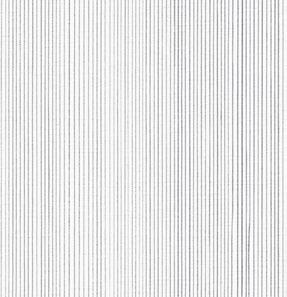
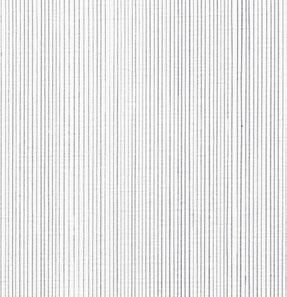


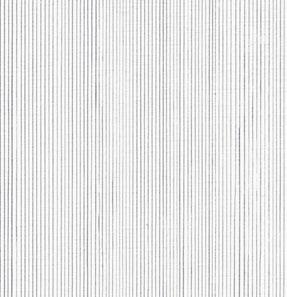


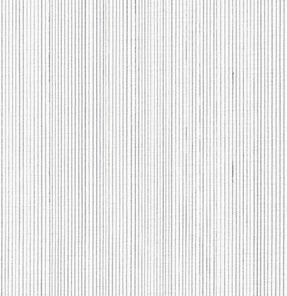








CHAIRMAN OF MUSEO NACIONAL CENTRO DE ARTE REINA SOFÍA
Minister of Culture Ernest Urtasun Domènech
DIRECTOR OF THE MUSEUM
Manuel Segade
Honorary Presidency
Their Majesties the King and Queen of Spain
President Ángeles González-Sinde Reig
Vice President Beatriz Corredor Sierra
Ex Officio Trustees
Jordi Martí Grau (Secretary of State for Culture)
María del Carmen Páez Soria (Undersecretary for Culture)
María José Gualda Romero (State Secretary for Budgets and Expenditure)
Isaac Sastre de Diego (Director General of Fine Arts)
Manuel Segade (Museum Director)
Julián González Cid (Museum Deputy Managing Director)
Tomasa Hernández Martín (Regional Minister of Presidency, Home Affairs, and Culture of the Government of Aragón)
Carmen Teresa Olmedo Pedroche (Regional Deputy Minister of Culture and Sports of the Government of Castilla-La Mancha)
Horacio Umpierrez Sánchez (Regional Deputy Minister of Culture and Cultural Heritage of the Government of the Canary Islands)
Pilar Lladó Arburúa (President of Fundación Amigos del Museo Nacional Centro de Arte Reina Sofía)
Elective Trustees
Pedro Argüelles Salaverría
Ignacio Garralda Ruiz de Velasco (Fundación Mutua Madrileña)
Juan-Miguel Hernández León
Antonio Huertas Mejías (FUNDACIÓN MAPFRE)
Carlos Lamela de Vargas
Rafael Mateu de Ros
Marta Ortega Pérez (Inditex)
Suhanya Raffel
María Eugenia Rodríguez Palop
Joan Subirats Humet
Ana María Pilar Vallés Blasco
Honorary Trustees
Pilar Citoler Carilla
Guillermo de la Dehesa
Óscar Fanjul Martín
Ricardo Martí Fluxá
Claude Ruiz Picasso †
Carlos Solchaga Catalán
Secretary
Rocío Ruiz Vara
ADVISORY COMMITTEE
María de Corral
João Fernandes
Inés Katzenstein
Chus Martínez
Gloria Moure
Vicente Todolí
ARCHITECTURE ADVISORY COMMITTEE
Juan Herreros
Andrés Jaque
Marina Otero Verzier
MUSEO NACIONAL CENTRO DE ARTE REINA SOFÍA
Director Manuel Segade
Deputy Artistic Director
Amanda de la Garza
Head of Exhibitions Teresa Velázquez
General Coordinator of Exhibitions Beatriz Velázquez
Head of Collections Rosario Peiró
Head of the Office of the Registrar Maria Aranzazu Borraz de Pedro
Head of Restoration Jorge García
Head of Editorial Activities Alicia Pinteño Granado
Head of Cultural Activities and Audiovisual Program Chema González
Head of the Library and Documentation Center
Isabel Bordes
Head of Education
Fran MM Cabeza de Vaca
Director of Institutional Cabinet
Carlos Urroz
Head of Protocol Diego Escámez
Director of Communication
Diana Lara
Head of Digital Projects Olga Sevillano Pintado
Director of Studies
Julia Morandeira Arrizabalaga
Deputy Managing Director Julián González Cid
Acting Deputy Director of Management
Sara Horganero
Technical Adviser Ángel J. Moreno Prieto
Head of Area of Support to the Managing Office Rocío Ruiz Vara
Head of Human Resources
María Paloma Herrero
Head of the Economic Department
Beatriz Guijarro
Head of the Revenue Service and Statistical Management Azucena López
Head of Public Activity Policy Francisca Gámez
Head of Architecture, Sustainable Development, and General Services
Francisco Holguín Aguilera
Head of Security
Juan Manuel Mouriz Llanes
Head of IT Department Mónica Asunción Rodríguez
This book is published on the occasion of the exhibition Soledad Sevilla: Rhythms, Grids, Variables, organized by the Museo Nacional Centro de Arte Reina Sofía in collaboration with the Institut Valencià d’Art Modern (IVAM).
Museo Reina Sofía
October 25, 2024 – March 10, 2025
IVAM
April 10 – October 12, 2025

EXHIBITION
Curator
Isabel Tejeda
Project Director
Teresa Velázquez
Coordination
María del Castillo Nieves Sánchez
Management
Natalia Guaza
Administrative Support Nieves Fernández
Design
Vélera
Registrar
Iliana Naranjo
Restoration
Head of Restoration:
Silvia Montero
Restoration Team:
Margarita Brañas, Cynthia Bravo, Ana Iruretagoyena, Regina Rivas
Translations Polisemia s.l.
Shipping Ordax Arte & Exposiciones s.l.
Installation REES s.l.
Insurance Poolsegur s.l.
Lighting
Toni Rueda
Urbia Services
PUBLICATION
Publication edited by the Department of Editorial Activities of the Museo Reina Sofía
Editorial Director Alicia Pinteño
Editorial Coordination
Jorge Botella
Translation
Philip Sutton
Copyediting Tess Rankin
Design
Manigua
Production Management
Julio López
Administrative Support
Victoria Wizner
Plates La Troupe
Printing and Binding Impresos Izquierdo
© Museo Nacional Centro de Arte Reina Sofía, 2024
Author’s essays

© Soledad Sevilla, VEGAP, Madrid, 2024 © 2024 Agnes Martin / VEGAP © 1998 Kate Rothko Prizel and Christopher Rothko/VEGAP/Madrid, 2024 © Sempere, VEGAP, Madrid, 2024
All possible efforts have been made to identify the copyright holders. Any error or accidental omission, of which the editor should be notified in writing, will be corrected in subsequent editions.
ISBN: 978-84-8026-662-8
NIPO: 194-24-014-6
D.L.: M-19956-2024
Catalogue of oficial publications https://cpage.mpr.gob.es
This book is printed on:
Interior: Splendorgel Ew 140 g.
Cover: Old Mill Premium White 350 g. 230 mm x 275 mm pp. 208

© 2024 Photo Scala, Florence/bpk, Bildagentur für Kunst, Kultur und Geschichte, Berlin, p. 123
Colección de Arte Contemporáneo Fundación ”la Caixa,” pp. 98–99
Courtesy of Ayuntamiento de Albacete, p. 87
Courtesy of Ayuntamiento de Granada, p. 81
Courtesy of Centro Andaluz de Arte Contemporáneo. Colección Junta de Andalucía, pp. 32, 33, 43, 78, 90, 104–105
Courtesy of Colección Banco de España, pp. 80, 133
Courtesy of Galería Fernández-Braso, Madrid, p. 139
Courtesy of Fundación Juan March, Madrid. Foto: © Fernando Ramajo, p. 76
David Barros Cardona, p. 91
Fernando Alda, pp. 187, 188, 190, 191, 193, 195
Fernando Maquieira, pp. 74 (right), 75
Foto Gasull, p. 41
Fermín Rodríguez, pp. 11–15, 169
Javier Algarra, pp. 47, 62, 63, 83, 86, 94, 95
Joaquín Cortés, pp. 92, 142–143
José Domingo Lentisco Navarro (Arquemus Medievalia) © Museo de la Alhambra, pp. 84, 85
José Moreno. Courtesy of Banco Sabadell, p. 82
Justin Polkey, pp. 145, 146–149 (detail)
Manigua, pp. 60, 61
Miguel Bargalló, pp. 97, 131
Museo Nacional Centro de Arte Reina Sofía, Joaquín Cortes / Román Lores, cover and pp. 27–31, 34, 35, 38, 39, 40, 44-45, 50-57, 59, 64–65, 74 (left), 100–103, 107–109, 110–111 (detail), 150–151, 153–155, 171-178, 180–181, 182–183 (detail), 196 (detail), 202 (detail), 206–207 (detail)
Photo: IVAM, Juan García Rosell, p. 46
Photo: Palacio Real de Madrid, Patrimonio Nacional, pp. 88, 89
Photo: Tate, p. 122
Roberto Ruiz, pp. 159–167
Sergio Benítez, pp. 48, 49
Tony Coll, p. 133
The Museo Nacional Centro de Arte Reina Sofía is grateful to Soledad Sevilla and Isabel Tejeda, curator of this exhibition, for their dedication to the project, as well as to the following institutions and individuals for their contribution with the loan of works:
Antonio Cobo
Ayuntamiento de Albacete
Ayuntamiento de Granada
Centro Andaluz de Arte Contemporáneo (CAAC)
Colección Banco de España
Colección CaixaBank
Colección Cuatrecasas
Colección de Arte Banco Sabadell
Colección de Arte Contemporáneo Fundación ”la Caixa”
Colección Fundación Juan March, Museo de Arte Abstracto Español
Diputación de Granada
Excmo. Sr. Duque de Bailén
Familia Cortina Lapique
Galería Fernández-Braso
Institut Valencià d’Art Modern (IVAM)
Museo de Arte Contemporáneo de Alicante (MACA)
Museo Patio Herreriano Banco Santander
Patrimonio Nacional
Patronato de la Alhambra y Generalife
Thanks also to those who prefer to remain anonymous.
Likewise, the Museum would like to thank María Soledad González-Reforma for her curatorial assistance, and Trevor Burgess, José Luis Conde, Andrea Dates, Antonio García Álvarez, Ignacio López Moreno, Pablo Sandoval and Daniel Soriano, as well as the installation team of Time Flies formed by Ana Esteve, Antonio Fernández, Ismael Gómez, Paco Peña, and Roberto Urbano, for their collaboration.
Thanks also to Fernando Alda, Paula Barreiro, Antonio Cayuelas, Yolanda Romero, and Galería Marlborough for their invaluable collaboration on this book.
